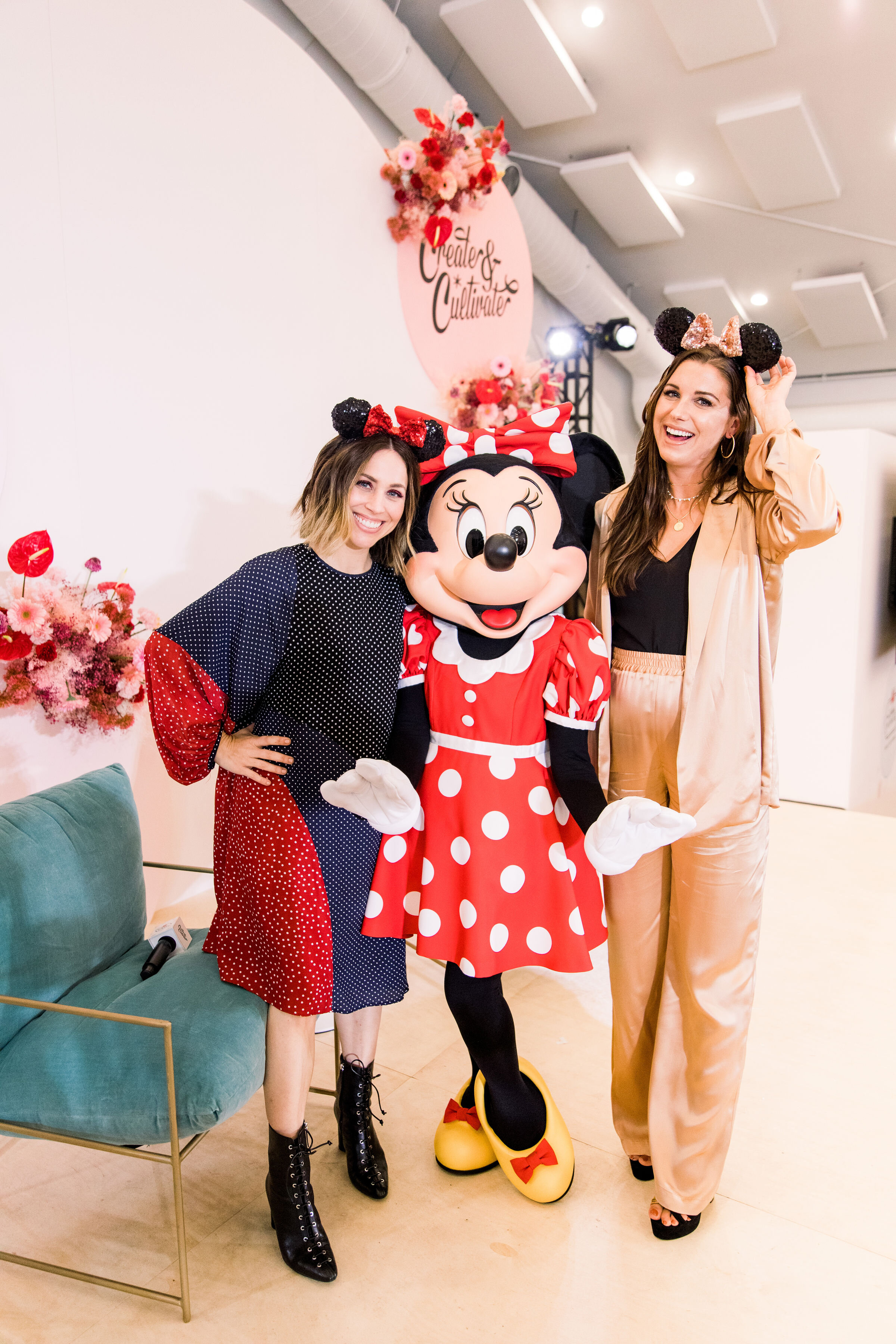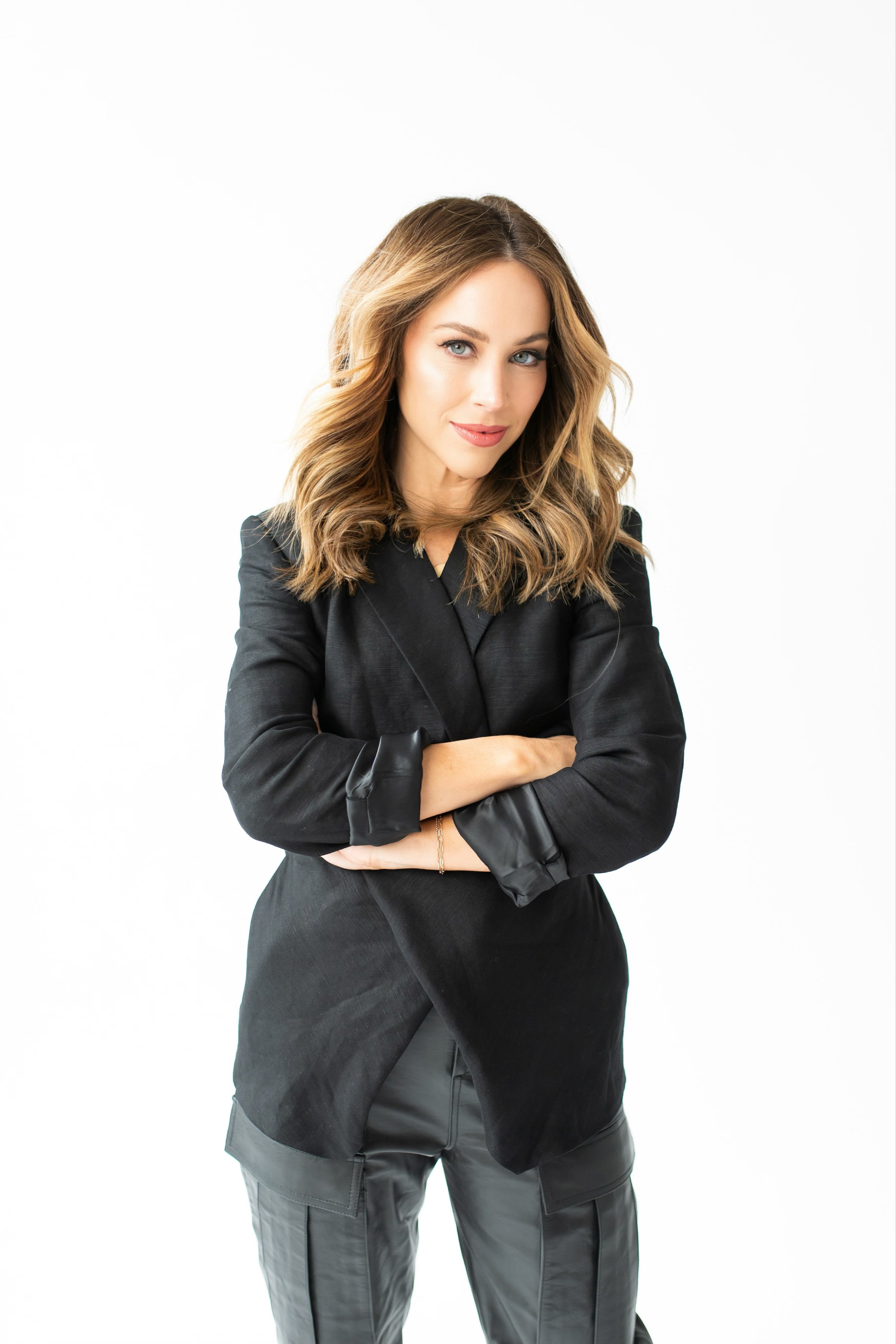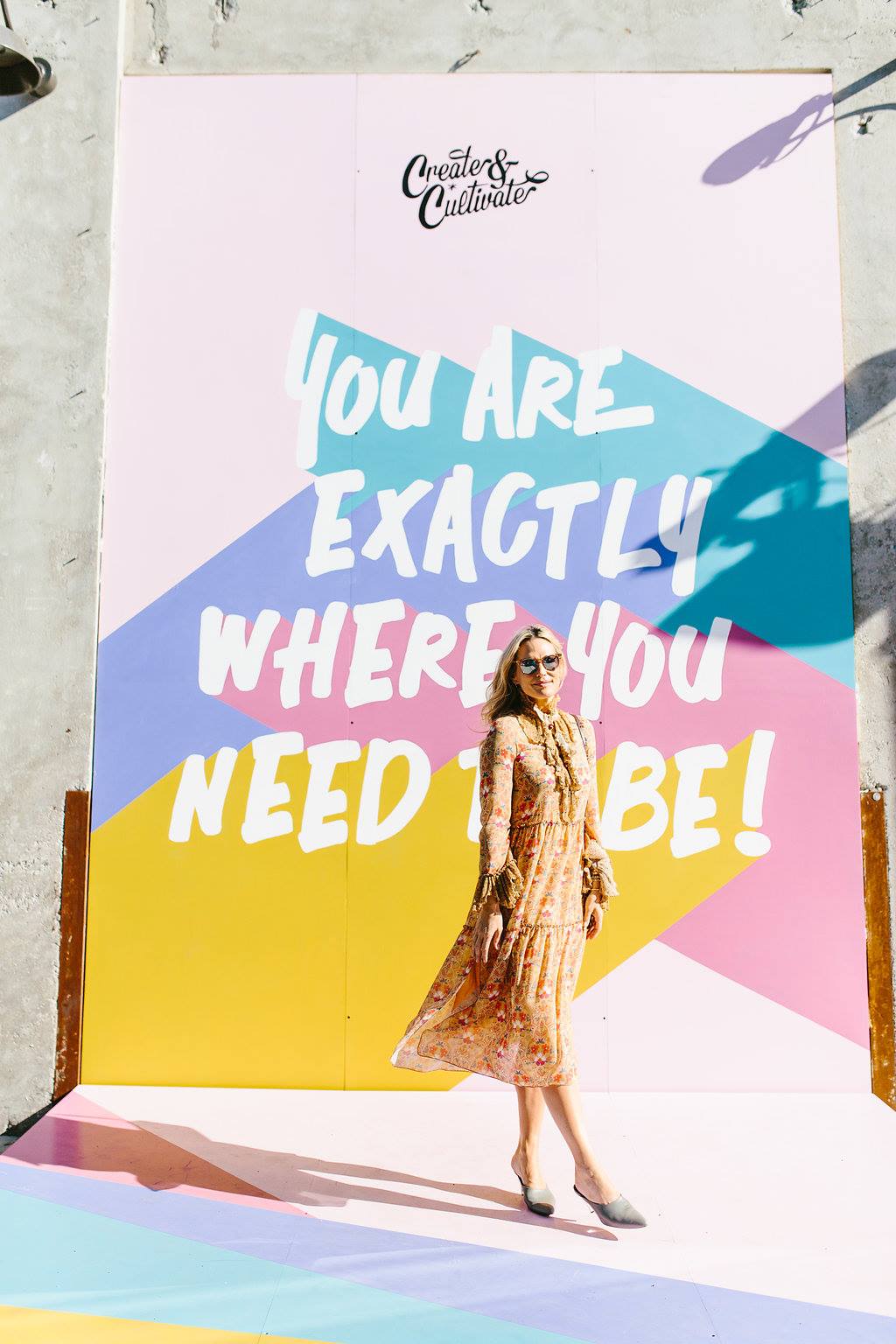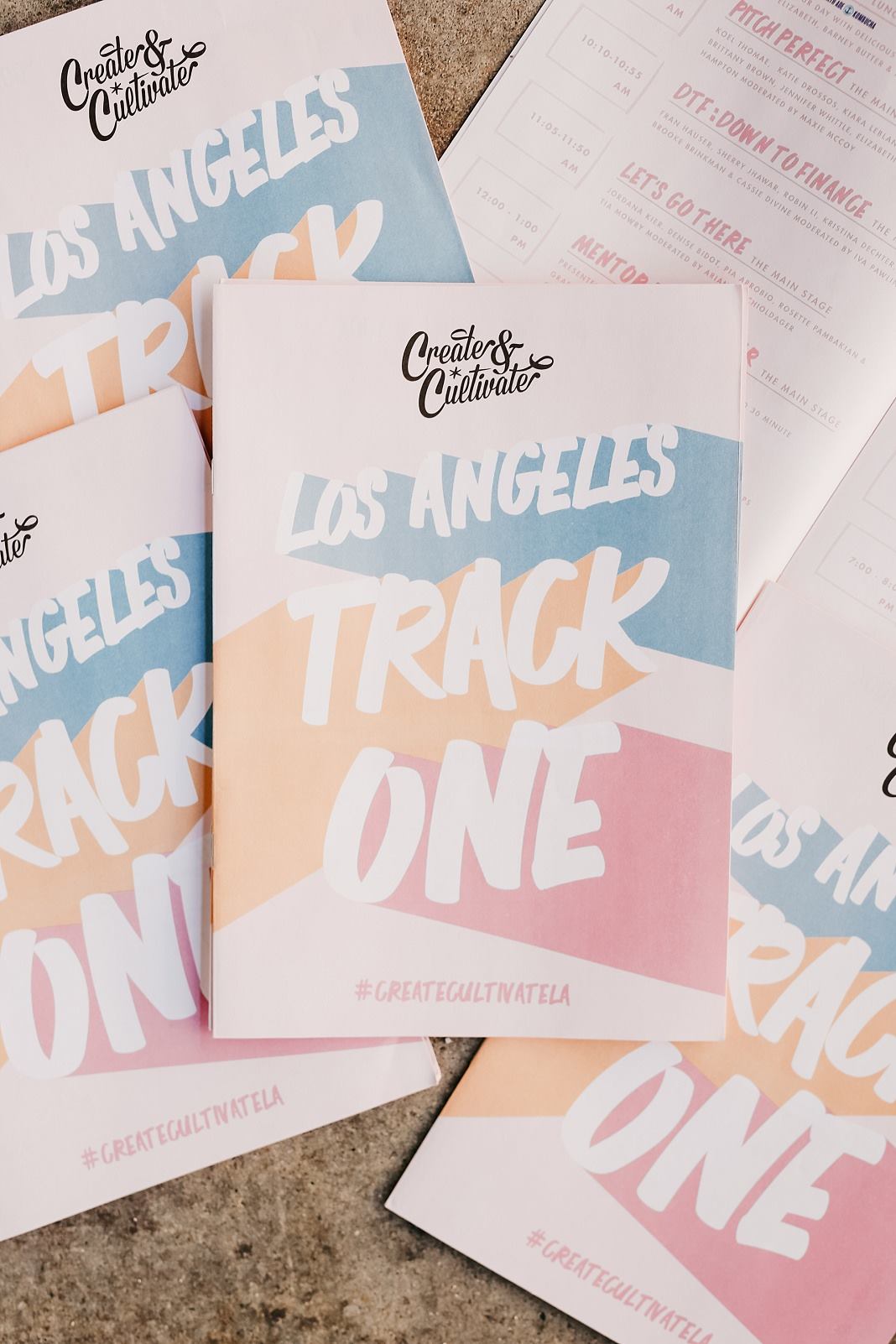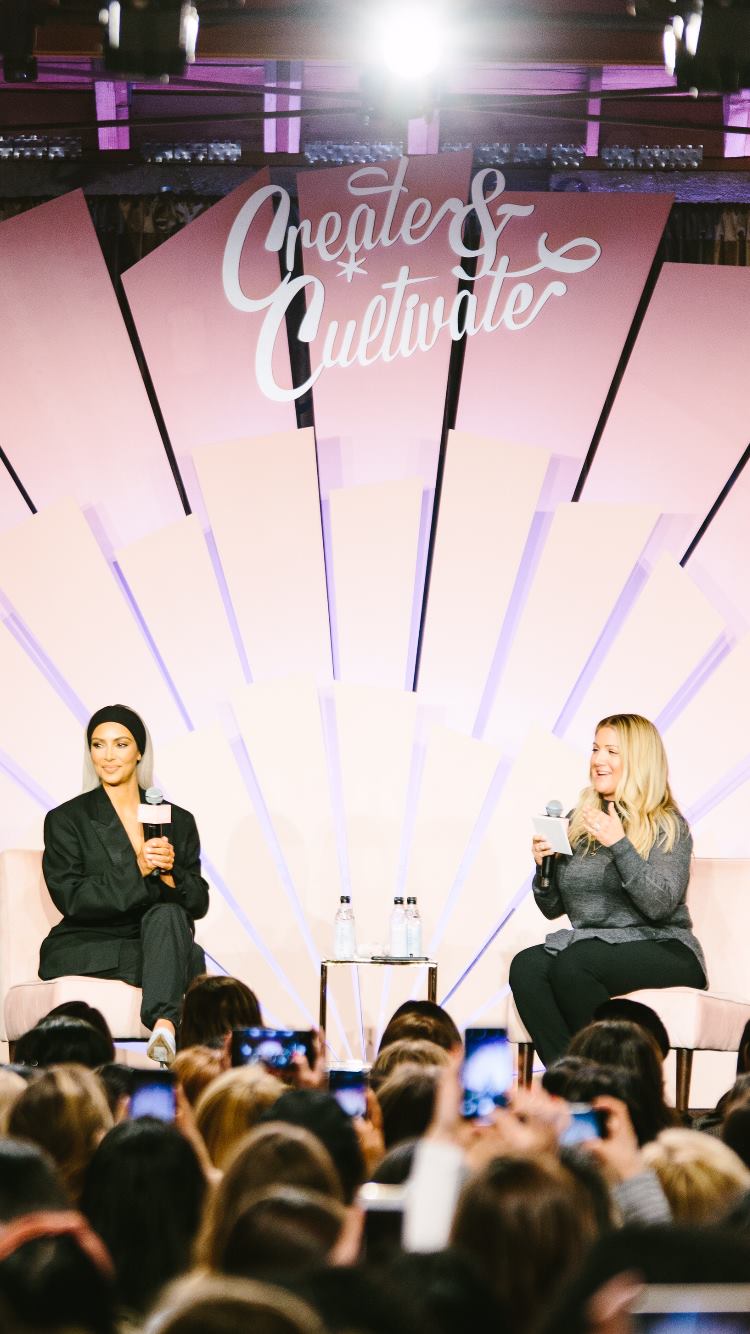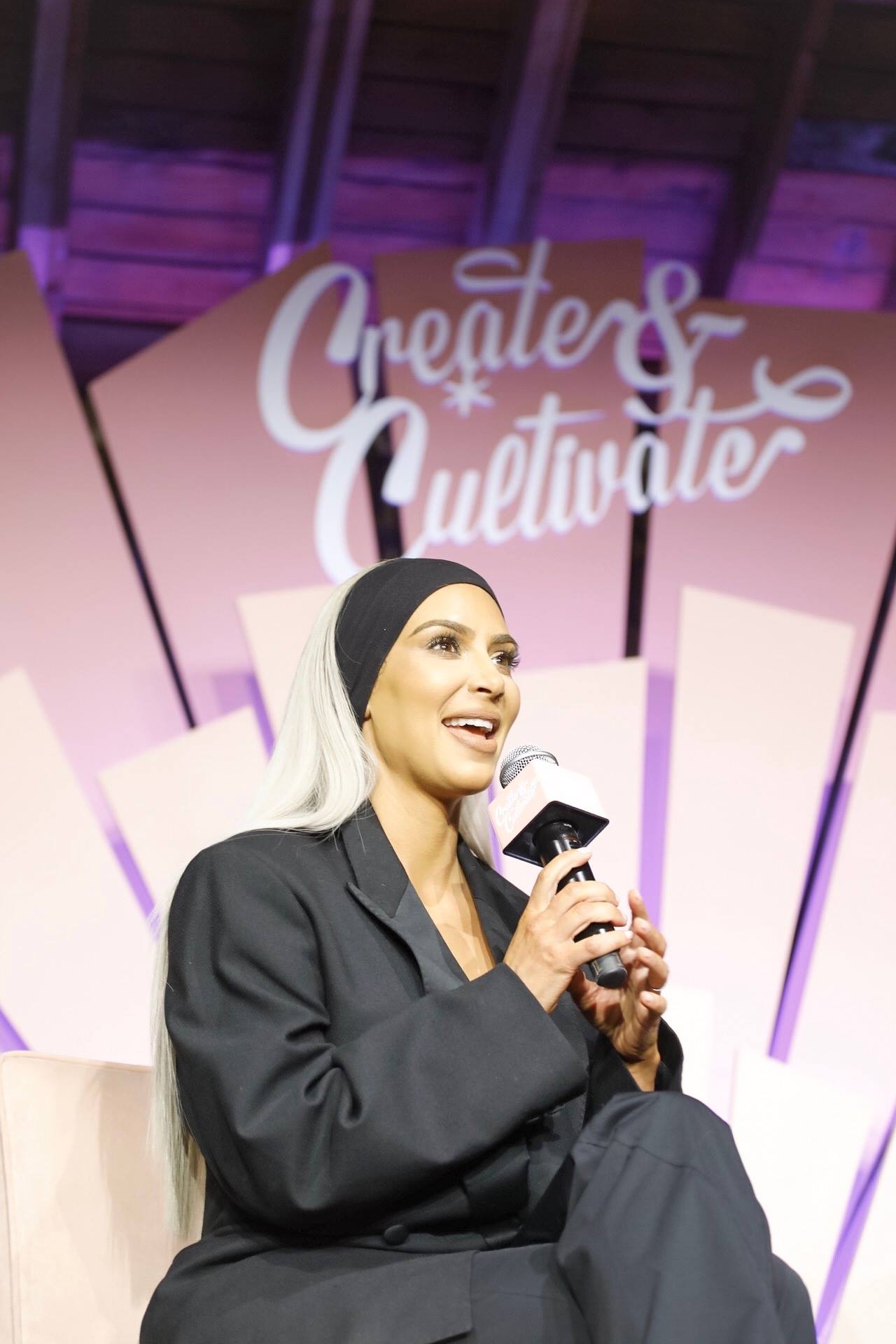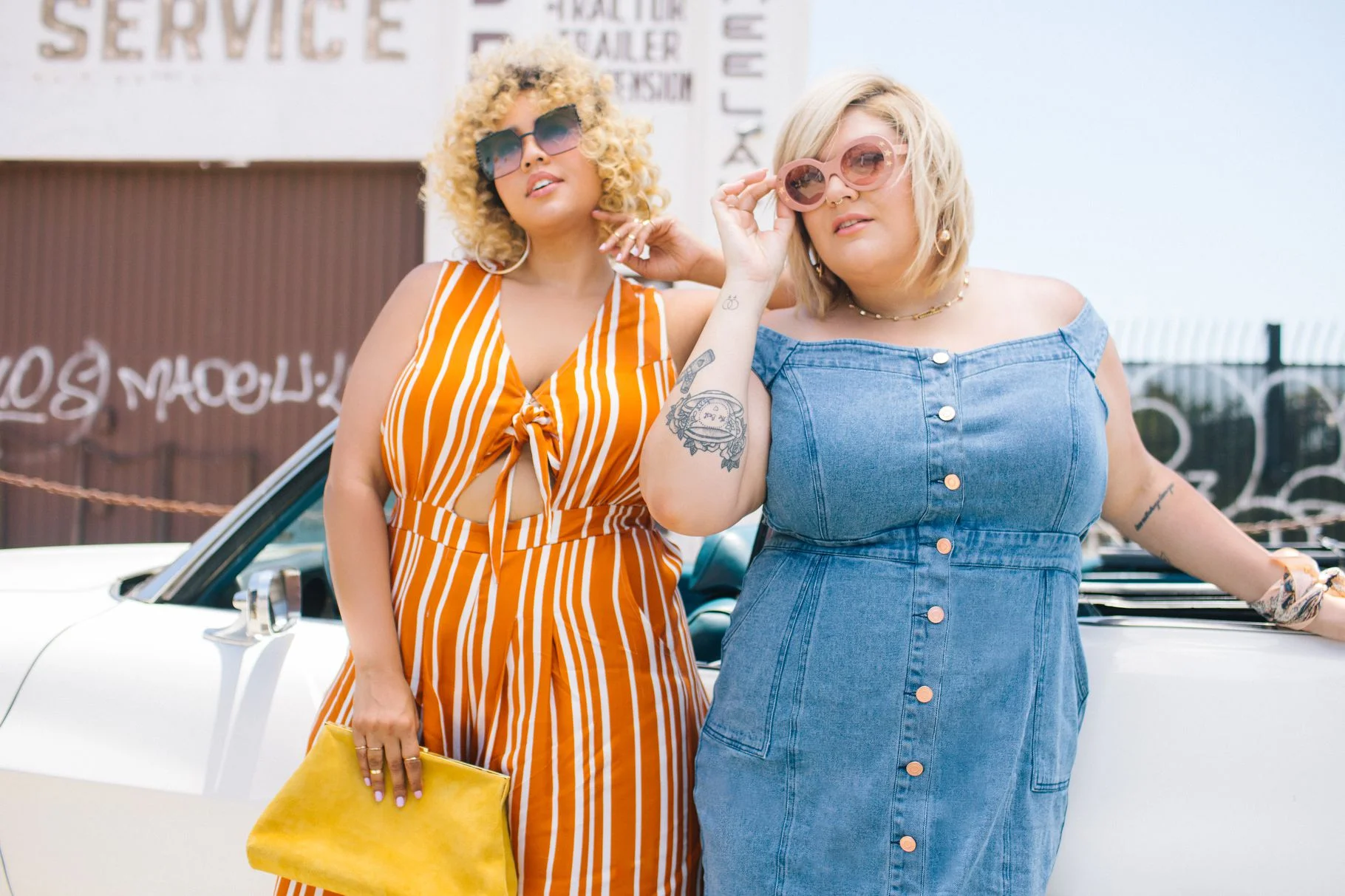The Upsides of Self-Funding Your Biz, From Eadem Co-Founders Alice Lin Glover and Marie Kouadio Amouzame
For Eadem co-founders Alice Lin Glover and Marie Kouadio Amouzame, the path to getting their inclusive, clean skin-care brand off the ground started with their own pocket books. The duo, who met while working in marketing at Google, had discovered a blank space in the market for clean skin care formulated with melanin-rich skin in mind. It was a gap in the industry they knew intimately as women of color (Amouzame is West African and French, and Glover is Taiwanese-American) and years of searching for products that never quite suited their unique needs. Soon after, the idea for Eadem was born. Then came the daunting task of securing cash flow.
The pair decided early on that venture capitalists were off the table. “I’m not sure the venture community was ready for us and interested in our vision,” says Glover, who together with Amouzame, launched Eadem in 2021 with a dark-spot serum designed with its proprietary “Smart Melanin Beauty” formulas made by women of color, for women of color. “We didn’t want to compromise what we were trying to build.”
Venture Capital, otherwise known as VC funding, is a private equity investor that provides capital for startups or small businesses in exchange for an equity stake in the company. The biggest benefit is undoubtedly having the financial anchor to boost your business, but it doesn’t come without compromise. In other words, there’s another cook in the kitchen when making business decisions that impact revenue. The reality is that less than one percent of startups raise venture capital, reports financial resource platform Fundera.
Most entrepreneurs end up financing through good old-fashioned bootstrapping. Nearly 70 percent of small businesses rely on personal savings to finance their business, according to a recent survey by the MetLife and U.S. Chamber Small Business Index.
“I know VC funding is so sexy and everyone wants that headline and it’s so important to them, but how much of your company, or yourself, are you selling in exchange for that?” asks Glover. Self-funding grants you the opportunity to have more flexibility, control, focus on long-term growth, and more authenticity in your decisions. Since launch, Eadem has skyrocketed to success and is now on the shelves of Sephora.
However, bootstrapping does come with its own unique challenges (including not always seeing a paycheck right away). “It’s both a curse and a blessing,” admits Azouame. “You see all these other brands that launch the same day, if not the same week as you, and they have $2–$3 million, and can do all these things like get employees and run ads, and everything looks so beautiful. Then on our end, it’s just the two of us doing everything.”
While it can be stressful, Azouame attests that self-funding forces you to be creative with your money, who you’re going to work with, how to convince people to take a chance on you, and in so many other ways.
“I think that [bootstrapping] is one of the best ways to learn, even after having worked in tech,” she says. “We learned so much in the first two years by being self-funded.”
The pair acknowledges that self-funding may not be for everyone, but attest that sometimes it’s just about taking that blind leap of faith.
Tune into the latest episode of WorkParty to uncover how the founders launched their business to success, what the beauty industry can do to be more inclusive, and why brand storytelling is so important.
https://open.spotify.com/episode/2nyZrvLa1PyNYRkVEgfis6?si=6Q9cMOHATH6TB6Xvine1yw
RESOURCES
To connect with Alice Lin Glover click here
To connect with Marie Kouadio Amouzame click here
To connect with Jaclyn Johnson click here
To follow along with Create & Cultivate click here
To submit your questions call the WorkParty Hotline: 1-(833)-57-PARTY (577-2789)
OTHER EPISODES YOU MAY LIKE
Hot Takes With Cheval: Don’t Forget Yourself While Chasing Your Dreams
How to Build a Portfolio Career With CEO and Selling Sunset Star, Emma Hernan
ABOUT THE EPISODE
Live from our 2022 Small Business Summit event, CEO and Selling Sunset star Emma Hernan joins Bunita Sawhney Executive Vice President of US Financial Institutions at Mastercard for a fireside chat about what it takes to build a portfolio career. While you may know her from the hit Netflix show, you may not realize that Emma Hernan is someone whose business savvy goes far beyond what's depicted on the silver screen. As a self-made multimillionaire, Emma is not only a realtor at one of Los Angeles' top agencies, The Oppenheim Group, but she's also an entrepreneur and CEO of Emma Leigh & Co, as well as an angel investor. In other words, her plate is very full.
It's clear that she loves the work she does, and her drive and passion to help other female entrepreneurs grow and succeed is evident from the moment you meet her. We're lucky that she's here today to share tips on how to vary the types of work that you're doing, what investors are looking for, and how to persist with founding a business even when you come up against obstacles. (Plus, she might even spill a little Selling Sunset tea!)
LISTEN TO THE FULL EPISODE
RESOURCES
To connect with Emma Hernan click here
To connect with Jaclyn Johnson click here
To start bingeing Selling Sunset click here
To follow along with The Oppenheim Group click here
To follow along with Emma Leigh & Co. click here
To follow along with Create & Cultivate click here
To submit your questions call the WorkParty Hotline: 1-(833)-57-PARTY (577-2789)
OTHER EPISODES YOU MIGHT LIKE . . .
How One Woman Used TikTok To Land a Job Promotion
This Black-Owned Company’s CEO Is Disrupting The Beauty Industry
Pietra COO, Tala Akhavan on Balancing Work, Motherhood, and Access to Female Entrepreneurship
Using Technology to Drive Social Impact with AllVoices Founder, Claire Schmidt
How One PR Agency Founder Uses Mentorship Tactics To Get the Best Results for Her Clients
Working in public relations has been one of the most fulfilling experiences for me. I started my career almost 11 years ago, and I have to say, I’m not the same person I was back then. Not only have I grown as an individual, but also as a business entrepreneur, picking up knowledge along the way.
In the first eight years of my career, I worked for a notable PR agency based out of New York City. It was there that I was inspired to launch my own agency, as my passion for helping and amplifying small businesses, specifically BIPOC-owned ones, grew. I saw the need for these businesses to get as much help and attention as big corporate brands, so I ventured out to start The Bonita Project and do that.
As I slowly built my client roster, I had the pleasure to work with some of today's most popular Latinx- and Black-owned brands, such as Alamar Cosmetics, Second Wind, Pholk Beauty, Valdé Beauty, and many more. My role as a business entrepreneur and a PR consultant turned me into a mentor of sorts, and I now mentor clients and service their PR needs, while stimulating their growth as individuals and fellow business owners. Here are some of the tactics I used to help my clients achieve success in their own journey.
1. Set shared goals
Upon signing with a new client, set a list of business and personal goals. How do they want to grow their business exposure? How about their mission and image as a new business owner? Let them share their dreams (even if they may seem sky high). Let’s face it, we all have these ambitious dreams for ourselves.
I always ask new clients what brands they aspire to be like. Who do they follow closely on social media, and what public figure do they see as a role model? We then work on a list of shared goals together, followed by a PR strategy!
2. Listen and support
Always lend an ear when they have a question or need advice on something, even if it's not entirely PR related. While we know "time is money," my relationship with my clients isn't always transactional. As a small business owner, I want to make sure they can confide in me and share their ups and downs, and even their work struggles. We usually come to a resolution together, while talking through their feelings.
3. Be their number one cheerleader
Root for them and share words of encouragement, whether it’s a comment on their social media or a quick text after they’ve finished an interview. There have been many times when clients wrap up an interview, and tell me they did horribly or didn’t feel as confident. Boost their confidence by showing them that you care and plug in some tips for improvement if needed. There is always room for improvement, and our small business clients recognize that.
4. Set them up for success
This brings me to my next point. You always want to come prepared and ensure you’re setting your client up for success, while clearing their head of any doubts. You can boost their confidence with media training or practice sessions on how they should handle a press interview. Let the client take notes and you’ll see them improve each time.
5. Challenge them to step out of their comfort zone
If there's something about me, I constantly challenge our clients with perspective. As the PR and marketing industry continues to evolve, so does today's consumer. And while some brands may be stuck on doing things the traditional way, I usually come in and challenge the client to stir things up a bit.
My team and I introduce creative ideas, and new influencers and voices to partner with, but sometimes brands will think it's a bit too risky or "not on brand." I usually believe otherwise and give them more context as to why this idea would make sense. Apply the “it doesn't hurt if you don't try it" mentality, and they’ll see the growth. All it takes is being confident in your ideas. You're the expert and more tapped into the industry than the client.
6. Keep it real
There will be times when the client says or proposes an idea that doesn’t sit well with you, whether it goes against your values or you don’t think it’ll be well received. Keep it real and tell them what you are thinking. Keeping it real from the beginning will help the bond between you both go further, and grow stronger.
About the author: Danielle Alvarez launched The Bonita Project in 2018, and since its introduction to the industry - she infuses creative, nontraditional ideas while being unapologetically Latinx. The proud Peruvian-American is drawing from her bicultural experience to make sure she keeps breaking barriers between general & multicultural markets.
How To Get A Culturally Driven Beauty Brand Into Stores With RANAVAT's Founder
Starting a culturally driven beauty brand as an engineer and scientist is not the path that I thought my career would take me, but it’s the path that has given me so much fulfillment that I could not see my life any other way.
I started RANAVAT with no connections in the beauty industry, driven solely by my passion and mission to see Indian beauty on the most coveted retail shelves in the world. It took a lot of no’s before there was a yes. But with that first yes slowly came more, and I was determined not to stop there.
There are 3 values that I hold dear to my professional (and personal) journeys, and most important in helping me get my product into the beauty aisles. Staying true to these values has never steered me wrong, even in the hardest of times, and relying on them in those hard times is what brings me up time and time again.
1. Find Your Niche
Find what speaks to your strengths. One lesson I’ve learned in this journey is to stay true to yourself. I knew my background was unique for the beauty industry. Having a business acumen and pairing that with ingredient sourcing and formulation experience, mixed with my South Asian identity, gave me the foundation to create and build RANAVAT.
Your identity is your strength. Use all of your experiences to create your space in this world.
2. Set an Example
Growing up in a South Asian household, my parents served as constant inspiration of the hard work and perseverance it takes to build a business. It’s incredibly empowering to see someone like you doing something you want to do, and watching my dad build a business from the basement of our home taught me the value of determination, self-belief, and passion.
I always knew from a young age that I wanted to, someday, start my own company too. Seeing our brand today at top retailers like Sephora and Harrods makes me hopeful for the next generation to be empowered to take on any challenge.
3. Create Your Network
Create and find your own network. I found my first mentors and advisors early on in building RANAVAT. They are my sounding board, my dose of reality, my inspiration, and an ear to listen to my struggles and my wins. I would not be where I am today without their support.
I also have an accountability group of close friends. We share our vision boards with each other in our respective fields, and we hold each other to those ideals. Regular check-ins allow me to not only connect with my friends and help them stay accountable to their visions, but stay accountable to my own visions.
Surround yourself with people who will champion you, challenge you, and support you every step of the way. They will be the ones who bring you up on those struggling days, who champion your wins louder and who provide advice on those difficult decisions.
Today, we are seeing more and more Asian-founded brands breaking norms in the beauty industry. I believe this is just the beginning of this movement. While my generation didn’t have the breadth of representation growing up, we were able to break into industries and challenge the norms.
Consumers crave connection and familiarity and are finding this in culturally driven brands like my own. I see my values represented in our customers and in fellow Asian founders and that gives me confidence that we will continue to see culturally driven beauty brands make their own space in the beauty industry.
About the author: Michelle Ranavat leverages her expertise in the pharmaceutical industry and her background in engineering to create a line of beautiful skin and hair treatments that honor her South Asian heritage. Each formulation is composed of the highest caliber Ayurvedic ingredients for transformative skin and hair care results across all skin and hair types. Distinguished Ayurvedic and adaptogenic cutting-edge actives such as Saffron, Ashwagandha, Turmeric, Manjistha, Amla, and Bakuchi are hand selected for real results. The luxurious collection is proven by science, and rooted in ritual. Founded in 2017, RANAVAT recently launched into Sephora with 8 of their best-selling products. The brand proudly donates 1% of proceeds to Desai Foundation, a non-profit organization in India that empowers women and children through community programs to elevate health and livelihood in India and the U.S.
3 Content Creators Share How To Land Partnerships With Brands You Love
Whether you’re exploring the world of being a content creator or you’re already committed to the journey, you’re likely aiming for dream partnerships with brands you love. But it's not all that easy to land them.
Sure some partnerships are handed out easily, but how much do you believe in those brands? Are you even passionate about what they have to offer? Those are some questions you should be asking yourself before taking on a brand partnership. And if there's a brand you love, a little hard work on your end may just get you the deal.
Here are three content creators from different fields sharing their take on how to land partnerships with brands you love. They know the ropes of creating paid brand deals and they’re dishing it out just for you.
1. Grace Atwood, Lifestyle Content Creator
Gone are the days when creating a perfectly curated grid is the expectation. Most of us want to discover people who feel relatable and real, like Grace Atwood, a lifestyle content creator that has amassed 182,000 followers on Instagram alone by sharing her life and the things that she loves.
Back when Grace started her blog in 2010, it took three years until she landed her first partnership: a campaign with Ugg. “They had me judge a contest (where my blog readers would design and upload their Ugg boots), go to their studio to film a video, and do a couple blog posts. I think I was paid $300. It was so much work but I was over the moon excited. I saved half for taxes and spent the other half on nice sunglasses.” Grace may be landing partnerships with much higher brand investments now, but it took years to get her pricing just right.
Here’s her advice for new content creators: “Start by joining an affiliate platform like LTK or Shopstyle and watch the data like a hawk. The numbers will tell you what your audience likes ... Do more of whatever it is that works. Data is everything in this industry; it's not just about creating pretty photos and videos, you have to be able to back it up with numbers. Use the numbers to build case studies and create a media kit.”
2. Martina Bartolozzi, Travel Content Creator
Meet Martina Bartolozzi, an Italian-American content creator who helps foodies spend their money and time wisely when visiting Italy. She does this by creating custom Thatch maps with chosen recommendations based on personal preferences. It took a while for her to gain traction as she was exploring her niche, but once she found her path, it was only a few months until she received her first paid partnership request.
Martina has a few pointers that she hopes will help you land your first partnership:
Focus on building and maintaining a trusting community by offering tons of free, useful content consistently.
Keep learning! Continuously invest in developing your skills to be able to provide your best products and services.
Only pitch to and only accept collabs with brands that you believe in, and those that offer products and services that you would also use.
When pitching, do your research, be concise, and focus on explaining what advantages you can offer to the brand and how your interests are aligned.
You don’t wait to have “x” number of followers to start pitching, practice with smaller brands, or better yet, with businesses that already follow you.
3. Cahner Olson, Hyper-Local Content Creator in Omaha
Being a content creator can happen in your own backyard, as Cahner Olson of Omaha Places has proven in a very short amount of time. Omaha Places niche is super informative, engaging content that encourages Omaha residents to go out and explore their own city.
Reflecting on the timeline of getting local brand deals in Omaha, Cahner approached collaborations for free products or services in her early days of having just 500 followers. Though it was a slow increase in the beginning, she eventually hit it big time.
“The first 6 months I didn't make any income from it. My first paid collab came at month six and was for $60. In month seven I made $140. Month eight was $150, and then month nine it started blowing up and I made ~$2,000. It's been a pretty upward trajectory from there. I was constantly reaching out to brands and pitching myself in the beginning, but as the account has grown and become more well-known in the community, companies are now coming to me first which is pretty cool.”
About the author: Emily Steele is a creative entrepreneur who has built several successful companies and events with the intention of supporting small business owners. Her latest endeavor is supporting communities through hyper-local content creators with her company hummingbirds. Emily loves seeing women in business succeed; connect with her over at www.emilyasteele.com.
3 Lessons I Learned Throughout Entrepreneurship That Made the Biggest Difference
Like many things in life, being a business founder, business owner, business creator, whatever you want to call it, is hard. And I learned very quickly that the experience can be really hard on your mental health as well. I left the security and comfort of a consistent income, my potential career trajectory, and my 401(k) contributions to step out into the crazy world of business because I wanted to try to build something worthwhile. So many people questioned my decision to quit my job and thought that perhaps I was going through a phase, and honestly, sometimes so did I. Was I [sure I wanted to do this]?
In addition to dropping my job security, there was the burden and overwhelm of trying to figure out how to actually build my business, Clever Girl Finance, which sometimes felt like the burden of the entire world was on my shoulders. There were also the hideously depressing metrics about business startup failures, which were a constant reminder that I was most likely to fail even when I was making progress. And then there was my imposter syndrome that constantly had me questioning my abilities and doubting myself…
That being said, I’ve learned a few things on my journey that have allowed me to pursue my life as a business owner on my own terms. Things that in turn have helped me manage my mental and emotional health, as well as that annoying imposter syndrome. I want to share those things with you now.
1. Don’t believe the work-life balance myth
Let’s start with the all-so-popular idea of work–life balance. Umm, yeah, that’s a lie. Work-life balance is a lie. There’s no balance. It’s called making it work, however you make it work. There’s no background music playing over my day showcasing me as the perfect wife, mom, entrepreneur, and Superwoman like you see in the movies. It’s simply me making my life work every day. And in order to make things work, I have learned to prioritize what matters most, put some things on the back burner, and let some things just fall off completely.
Yes, my business is important, but my family is non-negotiable. I delegate a lot (I will not be the bottleneck), and I rely on my amazing team to get work done for my business. Some days I don’t answer calls, reply to emails, check Instagram, or respond to text messages because I want to spend time with my family or because I don’t want to deal with anything or anyone else. Other days I utilize mobile productivity apps on my phone, like the Bank of America app, to help me multitask when I’m not sitting directly at my desk. I no longer try to be Superwoman or chase the mythical idea of “work-life balance”. I give myself the grace to not be all the things, all the time.
2. Embrace your emotions
Next up is my mental health. I’ve learned that fully embracing the emotions I’m feeling as opposed to trying to ignore them or push them aside really helps me manage my mental health. Sometimes that means I just need to take that deep sigh and have a good cry. It’s inevitable that you’ll get feedback you hate. Your customers will hate your product. Investors will tell you your business sucks. Friends will think you’re going through a phase. You’ll be too broke to buy that thing you really want, when if you had a “real job” it wouldn’t even be a question. So yes, sometimes, crying is necessary. However, just because it’s okay to cry doesn’t mean you let it become a crux.
3. Don’t let imposter syndrome get the best of you
And finally: Let’s talk about that damn imposter syndrome, which pops up at the most inconvenient times, making you feel less than good enough, uncapable, and unworthy. It promotes that negative self-talk and self-judgment…I’ve experienced imposter syndrome a ton and let me tell you, it never goes away. It’s always right there, the annoying uninvited guest, rearing its ugly head just before every milestone and every accomplishment. However, I’ve come up with ways to tackle it and minimize its impact in my life. I’ve found that sharing my mindset challenges with my husband, my business advisors, my friends, and my business peers can be incredibly helpful, especially when it comes to reminding me that I’m being totally irrational with those thoughts of feeling less than who I am.
I also started keeping a list of all my business and life accomplishments (no matter how small) because they remind me how far I’ve come and what I’m capable of doing. I wrote down being at my kids’ Kindergarten graduation, and attending their class plays. I’ve written down every media opportunity I’ve had….I wrote down being featured in a dedicated [television] segments. [I wrote down being a] four-time published author. Yes. That was me. Take that, imposter syndrome! I don’t believe your lies. I’ve got the real facts!
The truth is, no amount of preparation can get you totally ready for the rollercoaster that is the business-building journey….It’s all about making it work in the way that works for you, giving yourself the grace to accept that doing your best is enough, and reminding yourself why you’re amazing and more than capable of achieving success.
Excerpted with permission from the publisher, Wiley, from Choosing to Prosper by Bola Sokunbi. Copyright © 2022 by Bola Sokunbi. All rights reserved. This book is available wherever books and eBooks are sold.
This Career Coach Shares 4 Ways You Can Combat Work-Induced Stress
Are you one of the 70% of Americans who say they experience work stress, and that work is your number one stressor over family or even financial issues? How to deal with work stress may seem stressful itself. As it is the harmful, physical, and emotional responses that occur when the requirements of your job do not match your capabilities, resources, or needs. In essence, stress sets in when there is a lack of fit between an employee and their work environment.
Work stress eventually results in physical and mental health issues if left unaddressed. In some extreme cases, toxic work stress can ultimately result in traumatic experiences. The most straightforward way to address it is often to find aligned work, but that isn’t always an option for everyone.
If this sounds a bit like what you are currently experiencing, here are four things you can do if you're currently unable (or not ready) to pivot into doing aligned work.
1. Identify your triggers
Start by clarifying what stress feels like for you so that you're able to identify your triggers. How do you know when you’re stressed? What thoughts do you have? What happens in your body?
Pay attention to how you feel at work for a week or two. How do you feel physically in your body, emotionally in your heart and mind, and mentally? Then, record any situations, events, and people that lead to you having a negative physical, mental, or emotional response.
During each entry in your records, answer these questions:
Who was involved in the situation?
What was your reaction?
How did you feel before, during, and after?
After two weeks, evaluate. You might find obvious stressors or patterns, and notice subtle but persistent stress causes such as specific work tasks, interactions with particular people, or an uncomfortable workspace.
2. Set non-negotiable work boundaries
The fact is work never ends. There’s always something to do, and if you’re already experiencing stress at work, it’s important that you become very clear and strict about your boundaries.
I know a lot of times, it can feel uncomfortable to set or establish boundaries. Still, it’s important to remember that you show up better for everybody when you are healthy, whole, and happy. And when you don’t have clear boundaries, you experience more work stress. So you show up as a lesser version of yourself.
It’s also important to remember that it is your responsibility to hold your boundaries and not other people’s. People will always try to push your boundaries; your job is to ensure they are not successful.
Whether it’s boundaries around work hours, communication, the tasks you take on, or whatever that looks like for you, identify where you are experiencing stress at work and set clear boundaries for yourself, and those around you.
3. Adopt strong conflict resolution practices
Another major cause of work stress is the relationships and interactions we have at work, with colleagues and managers. If after identifying your triggers, you notice that your work stress is mostly coming from relationships, then it might be time to evaluate your communication practices.
Do you speak up when you feel like your values have been violated? Do you speak up when your boundaries have been violated? Lastly, do you advocate for yourself? If you’re not doing any of these things, they might lead to conflict and thus causing you to experience work stress. In this case, you’re going to want to develop clear conflict resolution and communication skills that allow you to advocate for yourself.
Here’s a simple process to follow to help you address workplace conflict:
Identify what exactly the conflict is.
Meet with the source of your conflict.
Communicate the situation (and remember, communication involves talking and listening).
Identify a solution.
Enforce the solution. (see no. 2 above)
4. Be proactive with your restoration practices.
When you’ve been in a work situation that has been stressful for an extended period, there’s a high chance that your stress response systems are overwhelmed. And when your stress response systems are overwhelmed, that’s when trauma sets in, along with your ability to cope goes out the window.
If you’ve been experiencing chronic toxic stress that your body hasn’t been able to manage well, your brain changes on a fundamental level. It changes how you interact and see the world, and collapses the time between event and reaction in your life. You might find yourself “overreacting” to certain situations at work, or getting stressed quicker and more intensely than you’d expect.
Mindfulness can help you rewire your responses and interaction with the world. It can help you feel psychologically safe and perceive the world as is, and not through your stress lens. Note that mindfulness is not a treatment for clinical trauma but simply a coping strategy you can use to navigate work stress. If you’ve been experiencing chronic work stress for years, an important component of your healing is going to be therapy.
On a final note, at some point, it’s no longer about stress management, or about coping strategies and preventing stress. If you’re doing unaligned work, you will experience stress and there’s nothing you can do about it. It might be time for you to start making your exit plan and finding something else to do.
If you're looking for a sign, here's four to look out for that say it might be time for you to find a new job.
You dread the work you do.
Your energy is drained.
Your physical and mental health is being impacted.
You’re not growing professionally.
You make “enough” money and are still unhappy at work.
About the author:
Dr. Tega Edwin (pronounced tay-gah) is an award-winning career development educator, researcher, and speaker. She is the owner of Her Career Doctor, where she coaches women who are unhappy at work to exit soul-sucking jobs and find a fulfilling career that allows them to thrive in their zone of genius, live on purpose, and get paid a value-aligned salary. She developed the VISA Career Clarity Framework that has helped women across four continents in over 20 industries clarify their aligned career paths.
Former Harvard Meditation Advisor Shares Steps On How Entrepreneurs Can Overcome Doubt
Doubt: It’s one of those one-syllable feelings that can feel catastrophic as an entrepreneur. About four in ten newbies and business owners experience this all-too-common emotion, but its ubiquity doesn’t make it any less challenging. According to former Harvard Meditation Advisor Kassi Underwood, the present moment has a lot to offer uncertain entrepreneurs—even if, in this very moment, it’s hard for you to believe that sitting with your doubt is the way to go.
An author, podcaster, and entrepreneur, who holds a Masters of Divinity from Harvard, has come against her fair share of self-questioning. Below, she offers her perspective on what doubt actually is, why it may manifest more often for women and non-binary entrepreneurs, and what to do when you find yourself in the grips of this emotion.
So, what is doubt? And why does it run more rampant among women entrepreneurs
Underwood has a simple definition: “Doubt is fear. It’s that simple,” she says. “A lot of things that we label with more complex terms are just fear. Guilt is fear. Doubt is fear. Doubt is, 'I don't know if I can do that,' which is another way of saying, 'I'm afraid I can't do this. I'm afraid.'” Mic drop, right?
Understandably, this doubt (aka fear) doesn’t target all people equally. Women and non-binary entrepreneurs—and particularly those who are Black, Indigenous, and people of color (BIPOC) —are up against discrimination that makes the fear more readily available. Since women-founded startups receive just 2.3 percent of venture funding and the funding gap is even bleaker for founders of color, it makes sense that you may constantly be asking yourself questions like, “Can I do this?” and “Are the steps I’m taking leading me toward success?”
What’s more, as women, we may be more likely to question our leadership skills in the C-suite. “Those of us who grew up as girls are programmed with the beliefs that we should be quiet, or we're going to come across as bossy or rude or demanding,” Underwood says. “We're taught that we're not supposed to care about money, or that if we do that, we're a gold digger or we're too masculine. There are so many insults that come with being a female entrepreneur.” If any of this sounds familiar, know that your experience is normal (which is not to say it’s acceptable or fair that you have to deal with it.)
Over time, systematic change like more funding going to women entrepreneurs will hopefully take the burden of doubt off all of our shoulders (or, okay, at least lighten the load). In the meantime, however, Underwood has five steps to help you approach doubt with mindfulness. So go ahead: Plug into the present moment.
1. Meditate (for one minute!) in the morning to reduce your overall quantity of fear triggers
No surprise here! Diffusing doubt doesn’t start the moment you begin to feel uncertain; it starts the second you open your eyes. If meditating for 20 minutes feels daunting to you, never fear. Underwood has designed a one-minute, daily meditation that you can do in the morning to head off doubt before the day has even begun, so you have less “Ahhh!” moments later in the day.
2. Identify and put words to your fear
“If a fear comes up, first of all, identify what you’re afraid of in the moment. Like, ‘I'm afraid that I'm going to send this email, and they're going to say no,’” Underwood shares. Once you’ve taken a pulse on what it is that has your heart racing, you can start working through it, which leads us to…
3. Identify the “lie you’re telling yourself”
“In fear, there's always a lie that I'm telling myself,” Underwood says. “One of the most prominent lies that women tell ourselves is, 'I can't handle that. If this goes to shit, I won't know what to do next.' And, of course, that's not true. You're gonna figure it out like you're a badass woman and you're gonna know in the moment, what to do next, but you can't solve a problem that's not even happening.”
Find your lie.
4. Write out the worst-case scenario and the best-case scenario
Now that you’re holding your fear in one hand and your lie in the other, you’re ready to plan. “The next thing to write down is, 'how would I handle the worst case scenario with courage? What's that look like?' And then what's the best case scenario? What news do I want to create for myself, my life, and life in general?”, says Underwood.
For example, if the worst-case scenario is that you lose a client, the best-case scenario may be that you now have an open slot for a cool new client that aligns with your values. Bam.
5. Keep the fruits of this exercise nearby
“You can put some of those lines up on your fridge or in your office,” Underwood advices. “They will start inspiring you and help you cut through those moments of doubt. So you'll be in doubt, but you have already done the exercise. You're like, ‘Oh, right. I don't believe that anymore. Like I actually can handle this. Even if the bad sh*t happens, I can handle it.” You absolutely can!
Written by Kells McPhillips
4 Questions To Ask Yourself Before You Start a Business
Last year, a record-breaking 5.4 million people filed to form new businesses in the United States. The entrepreneurial spirit is clearly in the air, and that’s never been more evident than when we gathered creators, CEOS, and entre-precurious folks from all different backgrounds together at our LA conference last month.
In one chat, aptly named “So You Want To Start a Business,” four powerhouse business women served up their best advice for starting, funding, and growing a new business. Those panelists were…ready? Roll call:
•Bola Sokunbi | Founder & CEO, Clever Girl Finance
•Chelsea Clarke | Founder, HerPaperRoute
•Kayla Gonzalez | SVP, West Merchant Region Executive, Bank of America
•Natalie Cofield | Assistant Administrator, SBA Office of Women's Business Ownership
As well as our moderator, Ginger Seigel | North American Small Business Lead, Mastercard
As you can probably imagine, the four of them had plenty of wisdom to share with anyone who’s in the “Should I?” stage of launching a business endeavor. And luckily, we’ve collected that knowledge and put it into a checklist below to help you decide whether your idea is ready for take-off.
1. Does my business have the qualities of a great (and lucrative) business idea?
Once the initial jolt of “OMG, I have an idea!” passes, you’ll need to determine whether or not your business holds water. In her role at Bank of America, Gonzalez has done her fair share of mentoring founders—something that you can tell is incredibly rewarding for her.
“Small businesses are so exciting!” she shared on stage. “There’s so much passion that comes from small business owners. Every time I get the opportunity to go in and visit a small business at their place of business, it’s exciting. The pride is coming off those small business owners and there’s nothing more rewarding.”
The most important thing to consider before you start, says Gonzalez, is ambition. “We talk about COVID-19 and what just happened there, and it was hard for a lot of our business owners,” she says. “You really have to have that ambition, that excitement for what you do each and every day regardless of what’s going on around you.”
The other key ingredient? A plan! Gonzalez explains you need to do your research on your business: Who is your competition? What is the scope of business? Where are you going to be most successful? What is your plan for success? While so much goes into a great idea, if you can lock in your ambition and know your business like the back of your hand, you’re off to a great start.
2. Am I owning and evolving my relationship with money?
Sokunbi, whose business Clever Girl Finance provides resources and support for financial freedom, has made her fair share of money mistakes. While she’s been super transparent about her own personal experience, she notes one common financial gaffe she sees tons of new founders make.
“We let our mistakes push us into a corner where we start to feel embarrassed or disappointed, but we want to own those mistakes because these mistakes are opportunities for us to assess what went wrong, what we didn’t like, and how to position ourselves next time,” she says. After that, you're ready to toss that mistake in the trash and keep the lessons close to you.
3. Does my business story stand out?
As a business owner, you’re going to tell your story a lot. Just think about how many times you’ve heard the origin story of Steve Jobs working out of his parents’ garage. Developing a narrative for yourself and a business takes some workshopping, but don’t worry: Gonzalez shares the secret sauce.
“Your passion needs to radiate so everyone feels it,” she says. “It’s not just what you’re doing, but it’s how you’re going to make it different. Everyone can have the exact same idea, but it’s you that will make the difference about whether that idea can be successful.” In case you’re looking for a recipe, personal passion plus a killer business idea equals a compelling business story.
4. Do I have my banking in check?
Getting your finances in order is an essential step towards feeling confident and competent, while you bring your idea to fruition. That’s why it’s important to get all your financial ducks in a row, and Bank of America’s small business platform can help you set up the tools you need—like checking accounts and company credit cards. Book an appointment with a banker to discuss your unique needs and your specialist can provide advice and guidance that you need to make a plan for your business.
Sokunbi recommends checking out the Small Business Administration (SBA) website for resources on funding, licensing, and learning as your business begins to germinate. And remember: The team at Create & Cultivate is here for you too!
Grab a glass of vino and watch the full playback of the panel here.
"We're Stronger in Numbers" and Other Magical Moments From the First-Ever Polka Dot Summit
Career advice from Alex Morgan, Lindsay Peoples Wagner, Katie Sturino, and more.
On January 25th & 26th, 2020, Create & Cultivate joined forces with Disney's Minnie Mouse for the first-ever Polka Dot Summit in honor of National Polka Dot Day. We celebrated in true Create & Cultivate fashion by inviting modern-day muses to the stage who, like Minnie, are bold, fun, fashionable, and classic—and, most importantly, inspire people all over the world to be positively themselves.
It was a jam-packed two days filled with major mic-drop moments. Karena Dawn and Katrina Scott of Tone It Up kicked things off with a heart-pumping workout, Dr. Deepika Chopra taught us how to cultivate happiness (and led a spontaneous dance party), Disney character artists Jeff Shelly and Miran Kim showed us how to draw Minnie and her other pals, and Minnie herself spread joy everywhere she went. To everyone who came, thank you for joining us—and to those who couldn’t make it, don’t sweat it. Below, we’ve compiled the key takeaways from our positively inspiring weekend with Minnie and the gang.
Read on for the sagest soundbites from our panelists and keynote speakers, including Lindsay Peoples Wagner, the editor in chief of Teen Vogue, Katie Sturino, the founder of The 12ish Style and Megababe, Alex Morgan, the co-captain of the U.S. Women’s National Soccer Team, and more.


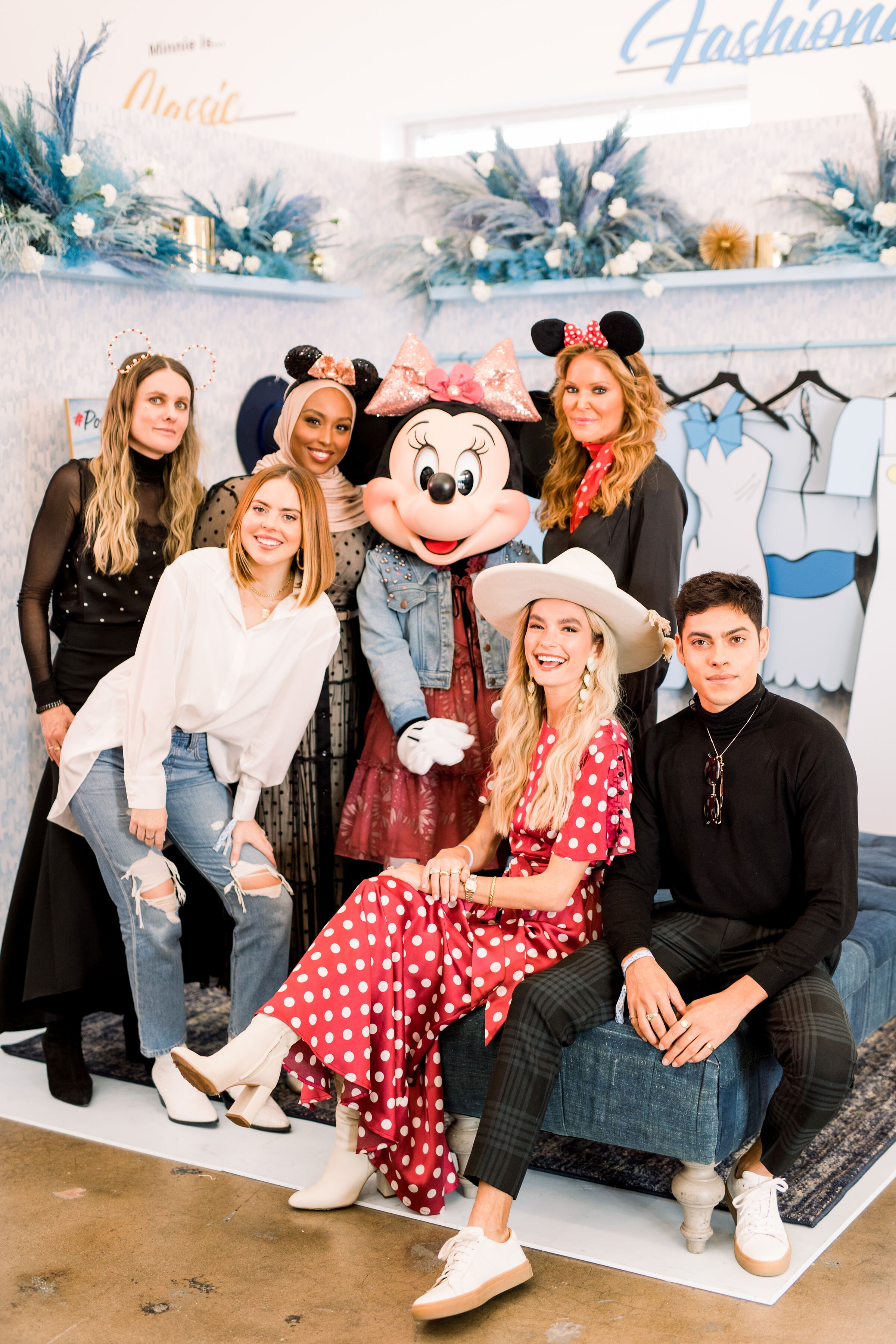
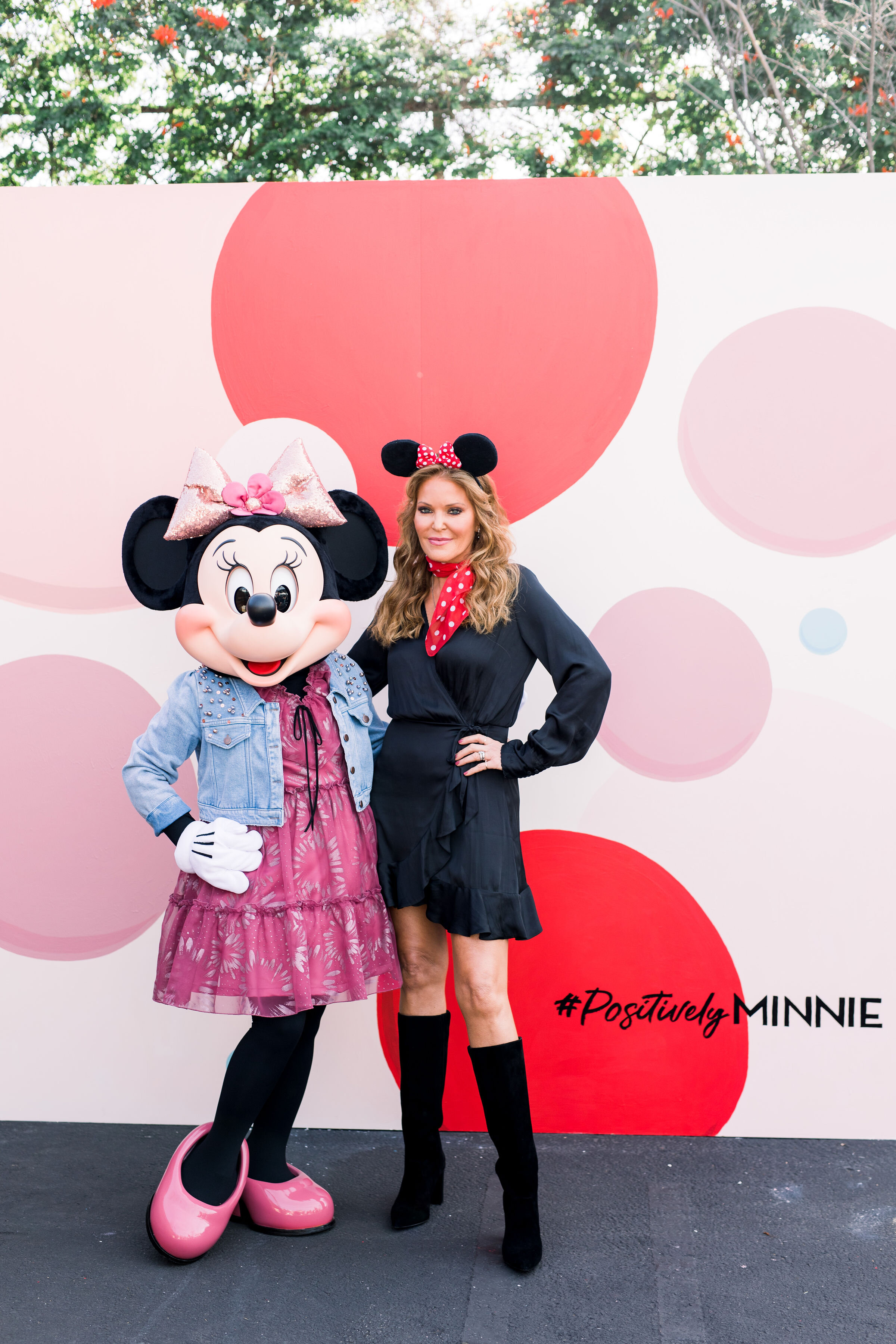



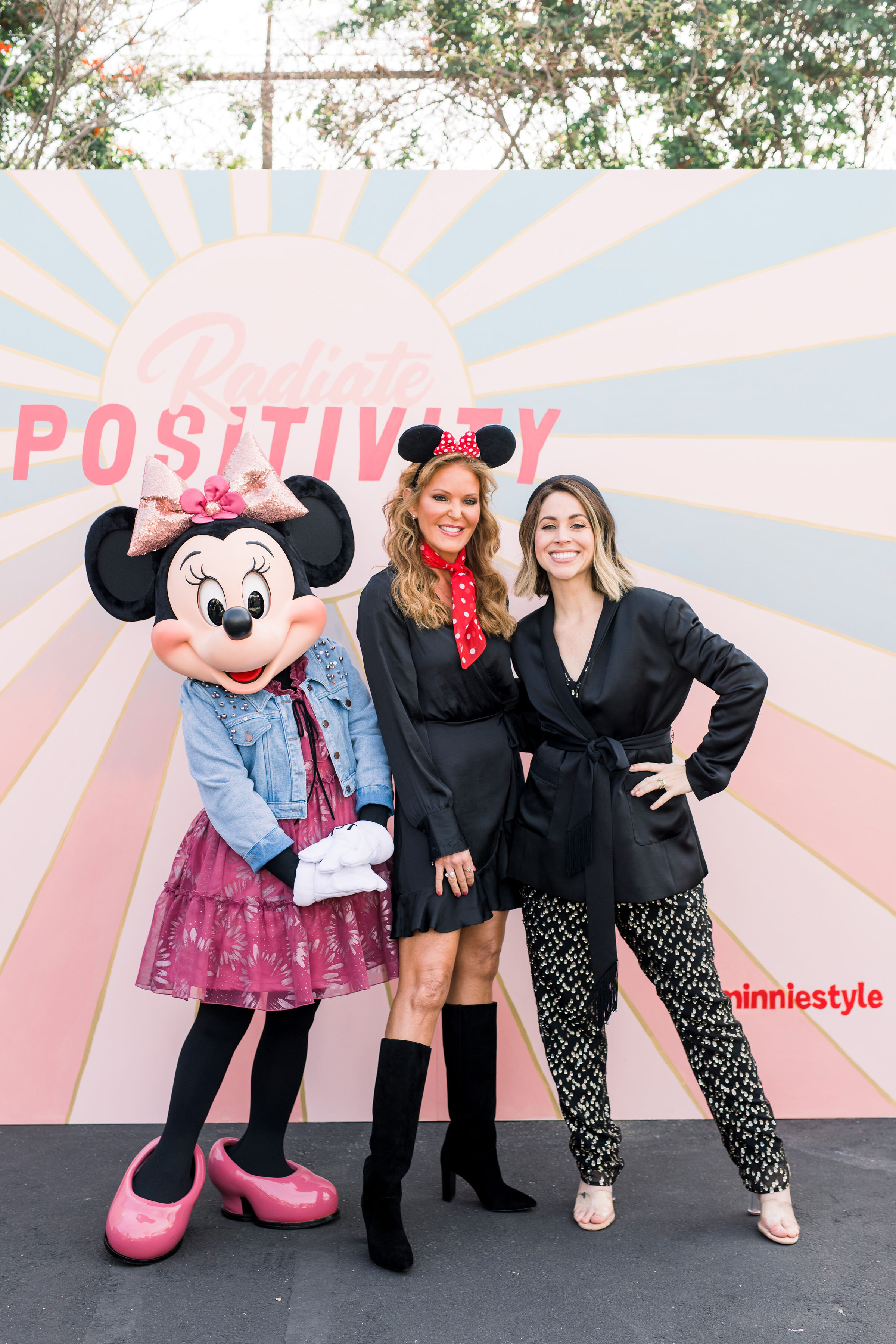
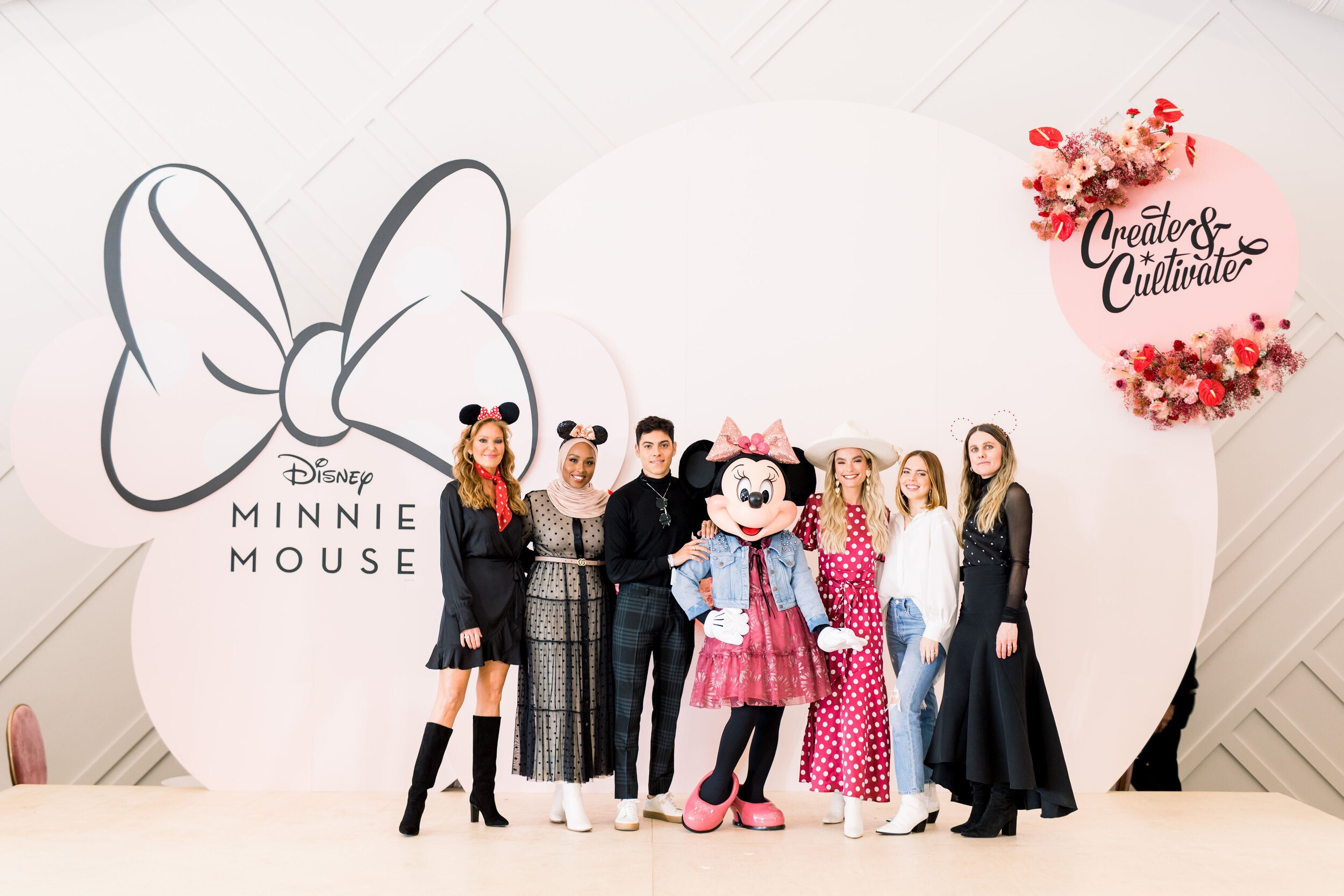
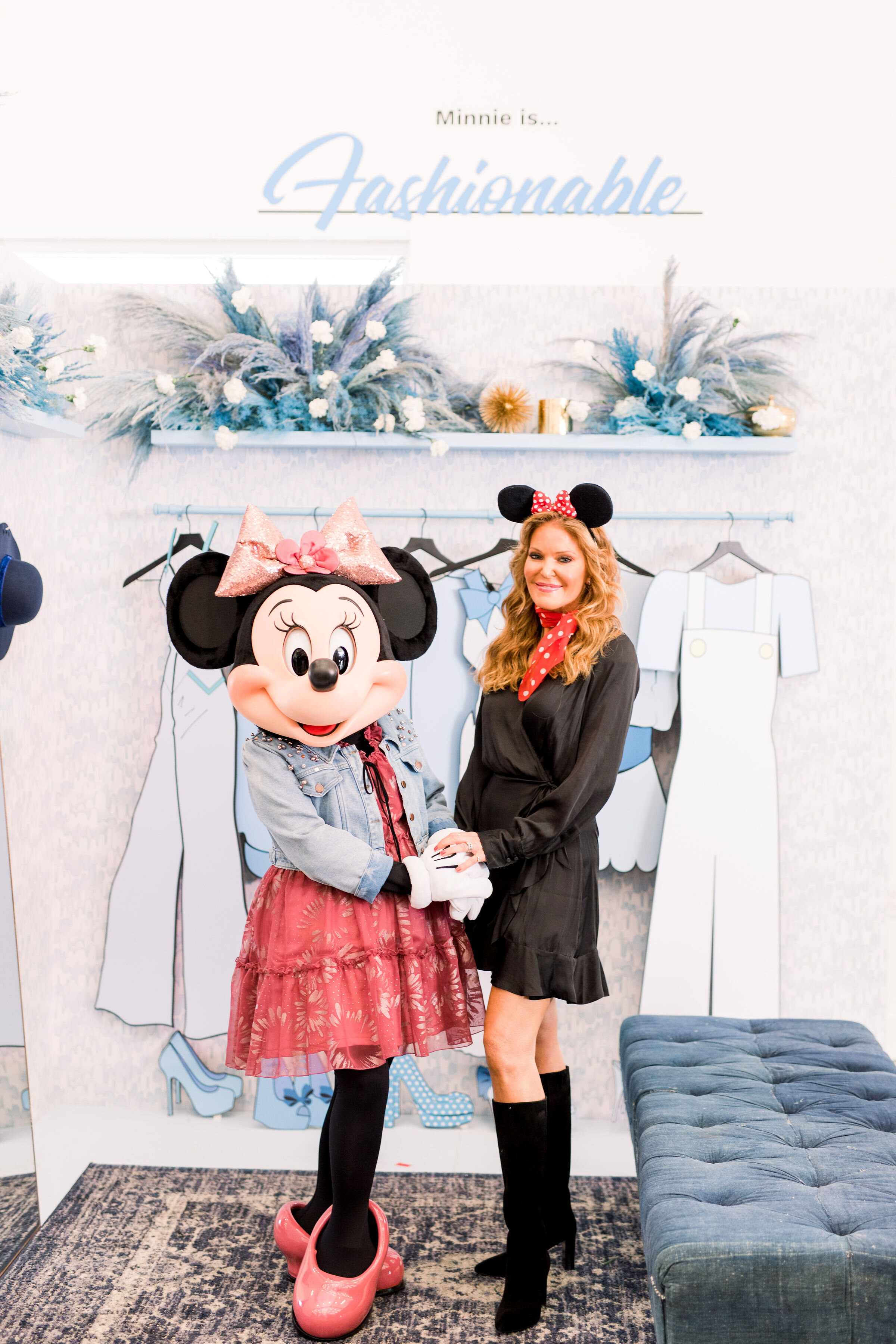
Panel: Positively You—How to Cultivate Confidence Inside and Out
Panelists:
Quigley | Influencer & Content Creator
Aysha Harun | Content Creator
Jaci Marie Smith | Content Creator and Podcast Co-Host, What We Said
Glen "Coco" Oropeza | Celebrity Hair Stylist, Glen Coco for Hair
Paige Adams-Geller | Co-Founder & Creative Director, PAIGE
Moderator:
Sacha Strebe | Editorial Director, Create & Cultivate
On overcoming fear…
“One of the biggest things that I had to teach myself is that everything is on the other side of fear.”—Glen "Coco" Oropeza
“That moment when you search inside—and you put on the blinders, and you tune out the noise, and you believe in yourself—that’s when change happens.”—Paige Adams-Geller
“It’s easy for someone to give you an idea, but it takes courage and bravery and momentum to put it into action and make it yourself.”—Paige Adams-Geller
On being positively you…
“With any insecurity, be it with a birthmark, your weight, or the size of your feet it'll be with you until you leave, so embrace it.”—Aysha Harun
“When it comes down to it, I want to share things I love, so people who gravitate to that are the community I’ve built.”—Jaci Marie Smith
On navigating negativity in the comments section…
“Constructive criticism can be helpful, but I only try to take advice and criticism from people I admire and respect and who have my best interests in mind.”—Jaci Marie Smith
“Whoever made the comment is probably suffering or hurting, so I just take a moment to say, ‘I wish you well,’ and then I go on with my day.”—Quigley
“If you know yourself, then negative comments won’t affect you as much.”—Aysha Harun
“I never give it any energy—I think it’s a waste of time. To me, it’s just bad juju.”—Glen "Coco" Oropeza
On knowing your worth…
“One of the best pieces of advice I learned early on was know your worth and don't be afraid to say no to an opportunity.”—Aysha Harun
“Should I do it for that low rate? I don’t think I should because it brings the whole industry down. They’ll keep hunting for someone who will do it for that low rate. If you accept those low rates, then everyone does poorly because of that.”—Glen "Coco" Oropeza
On investing in yourself…
“Investing in yourself is so important. I think it’s so important to set aside a little money to make sure you're going to grow.”—Aysha Harun

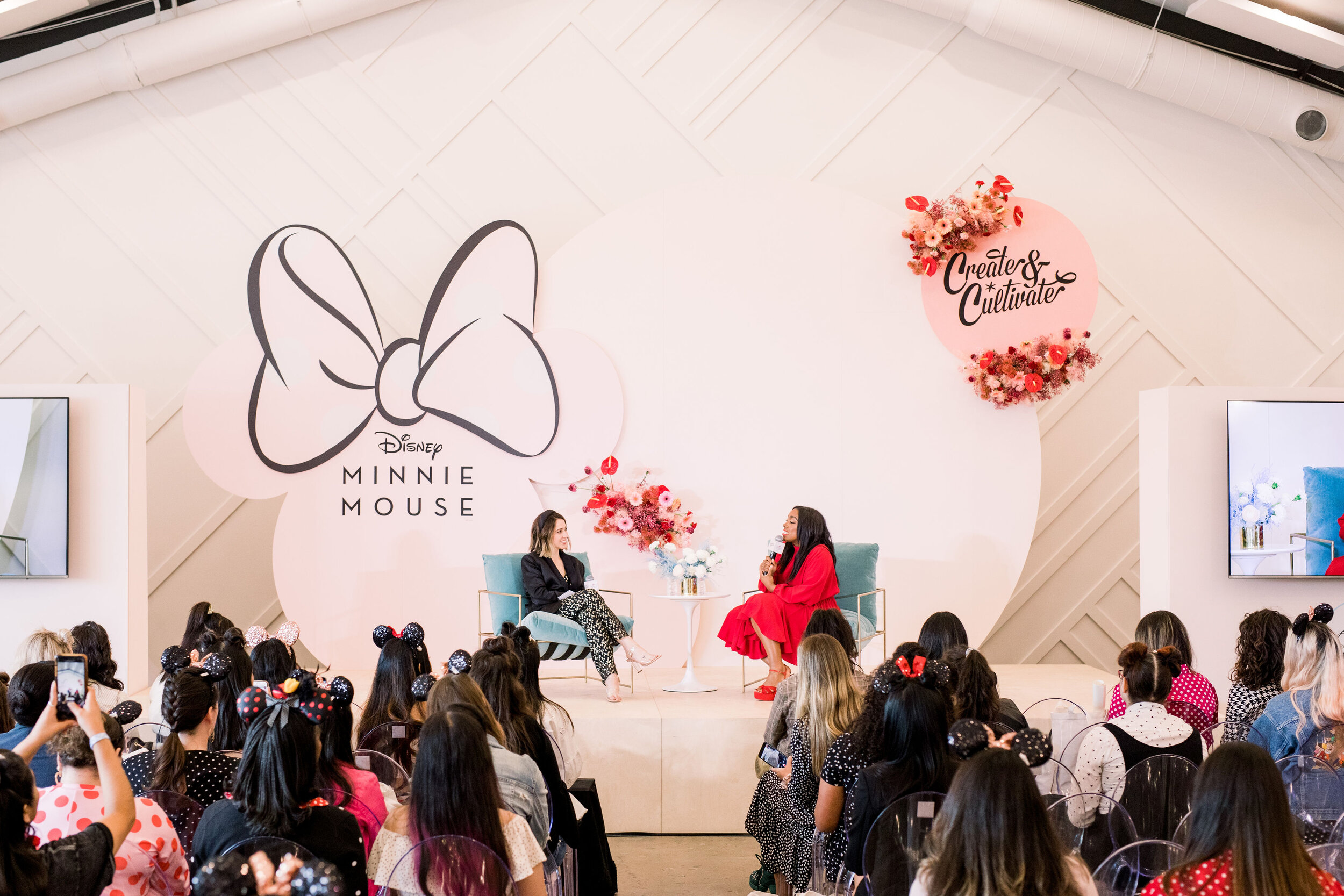
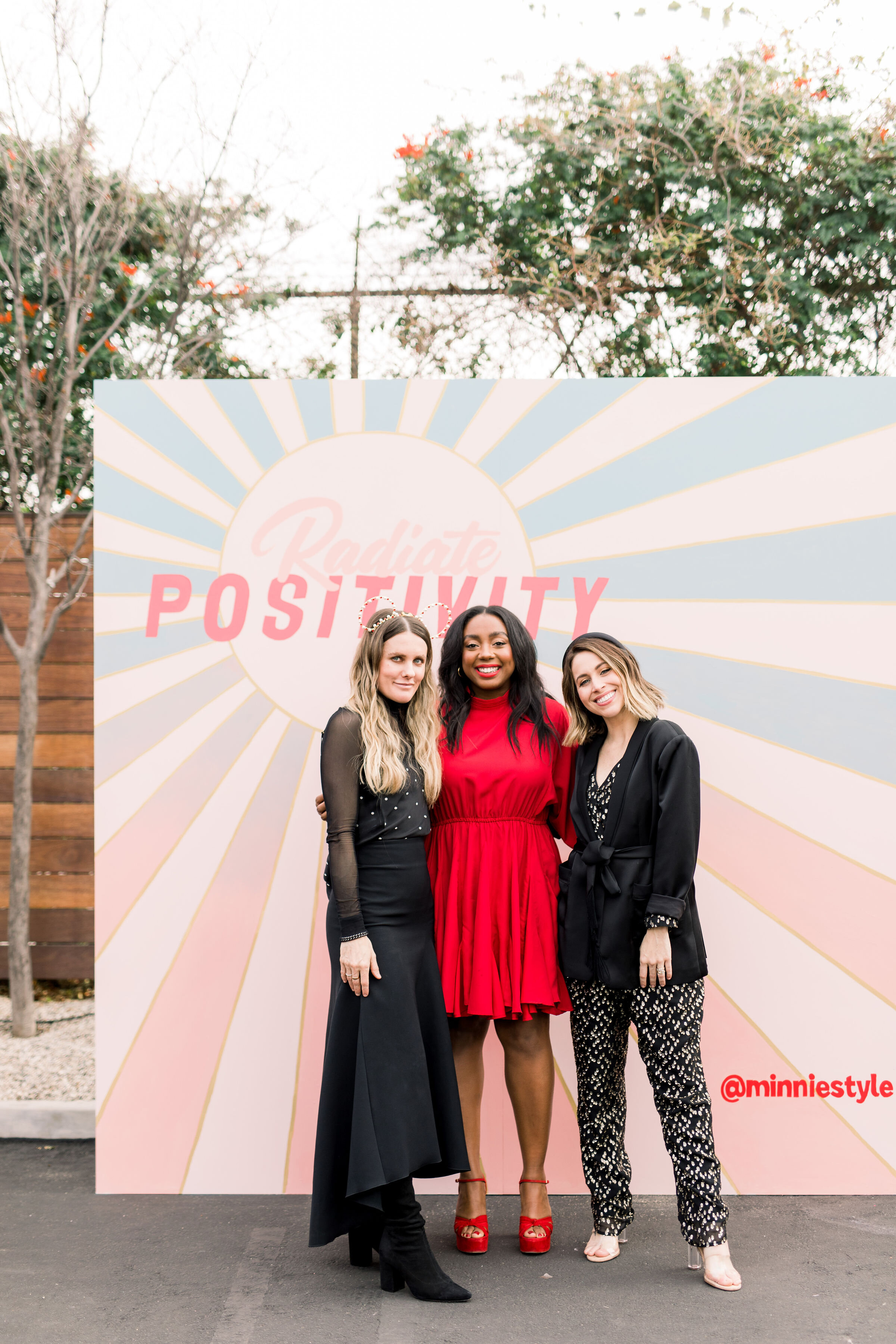
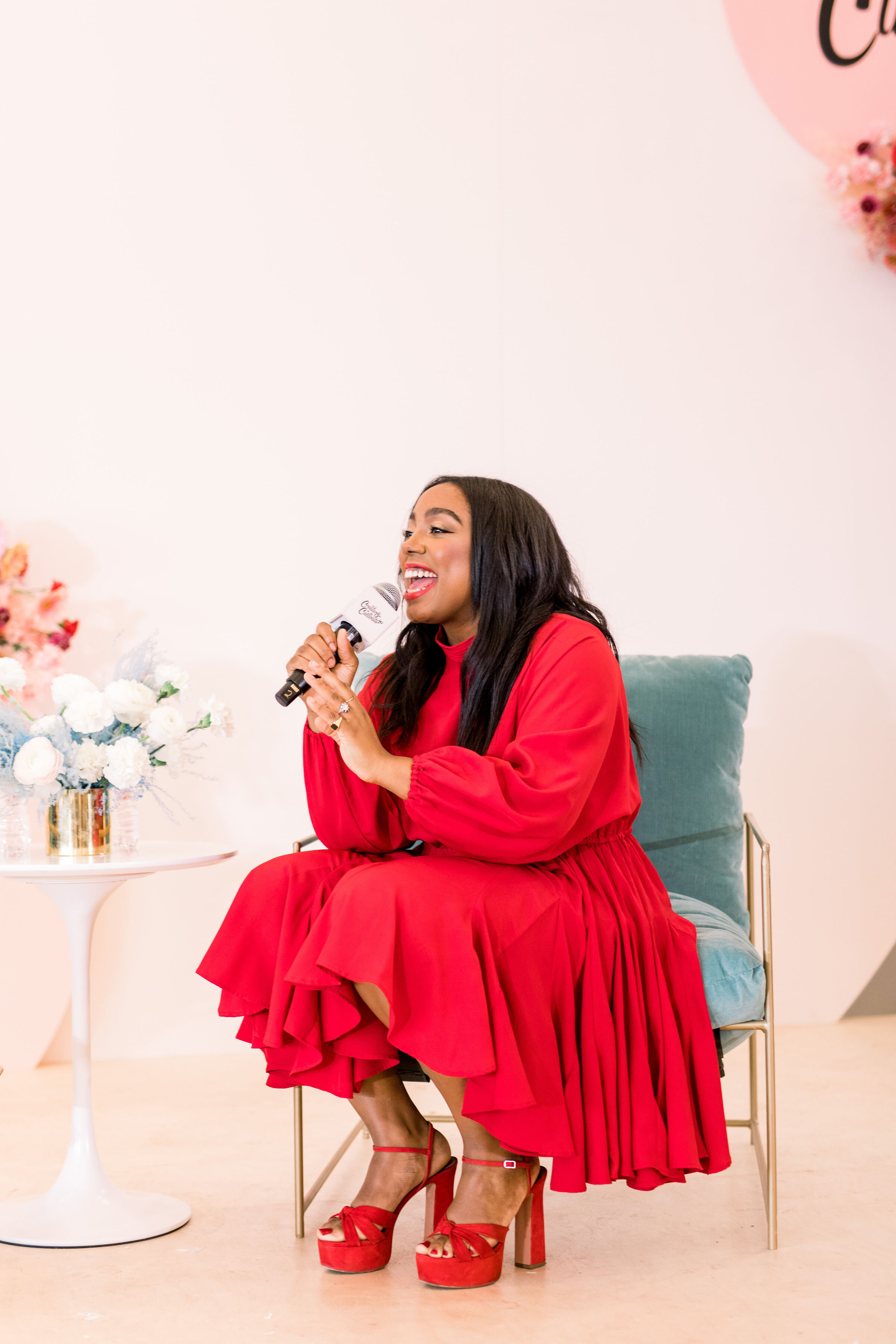
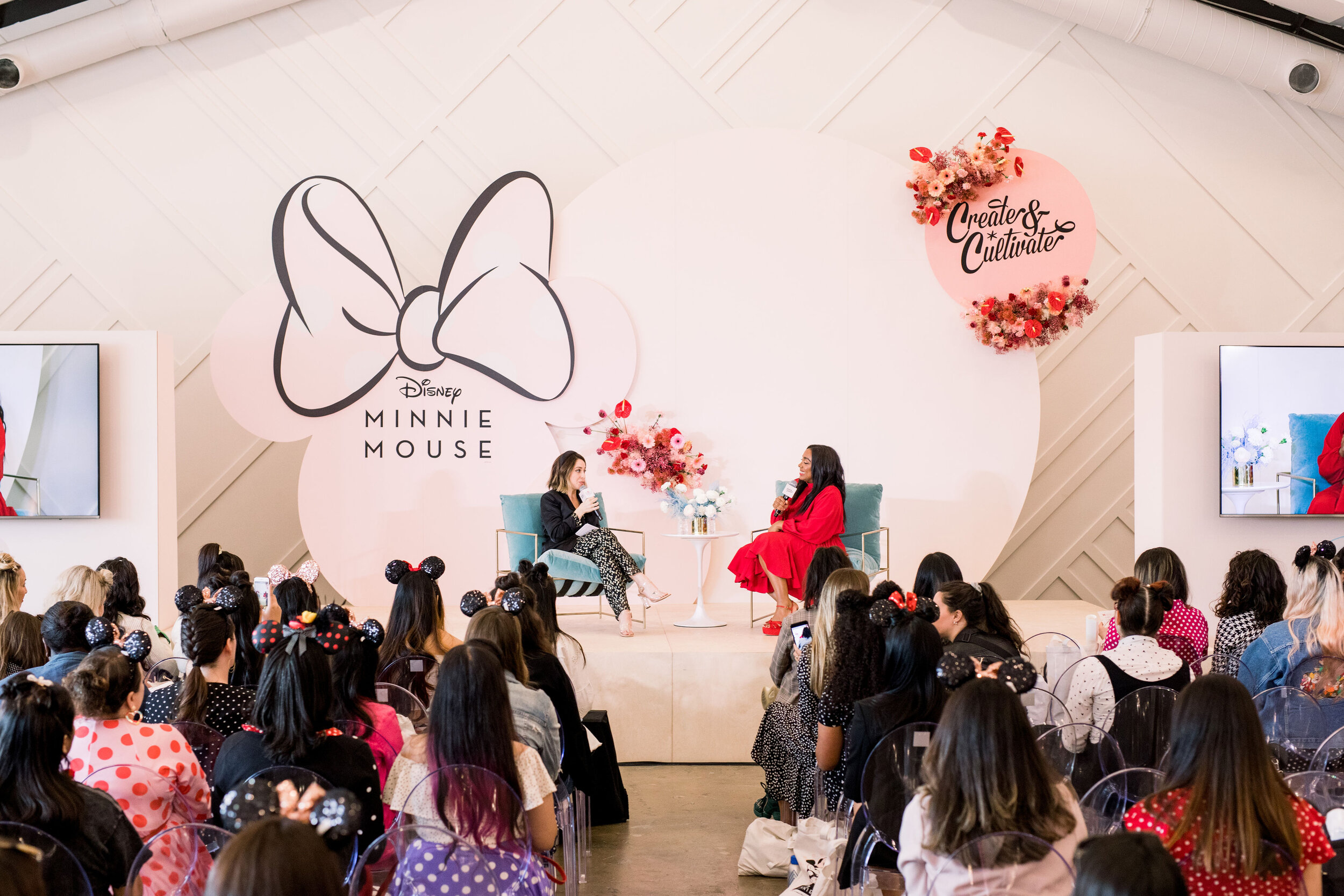
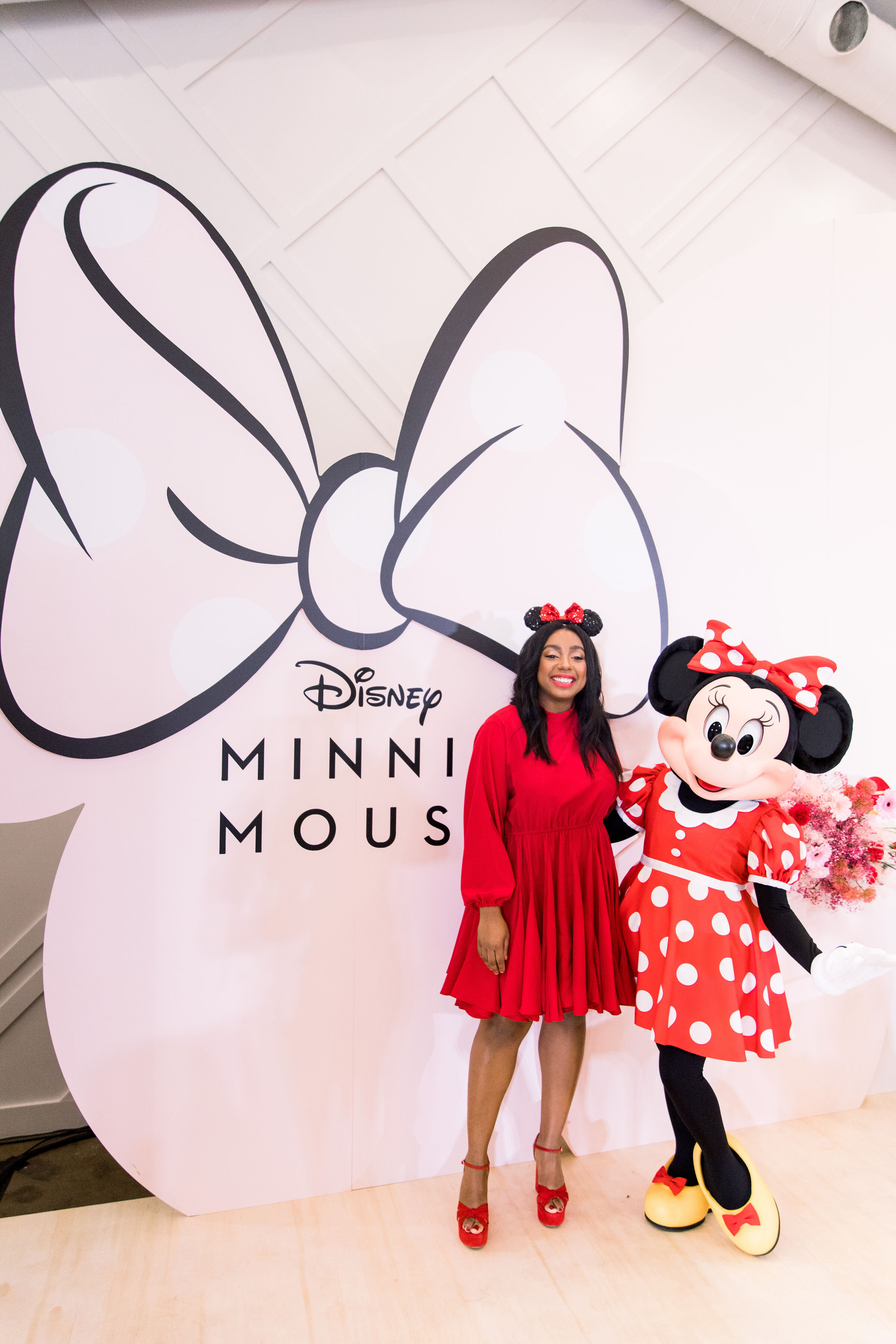


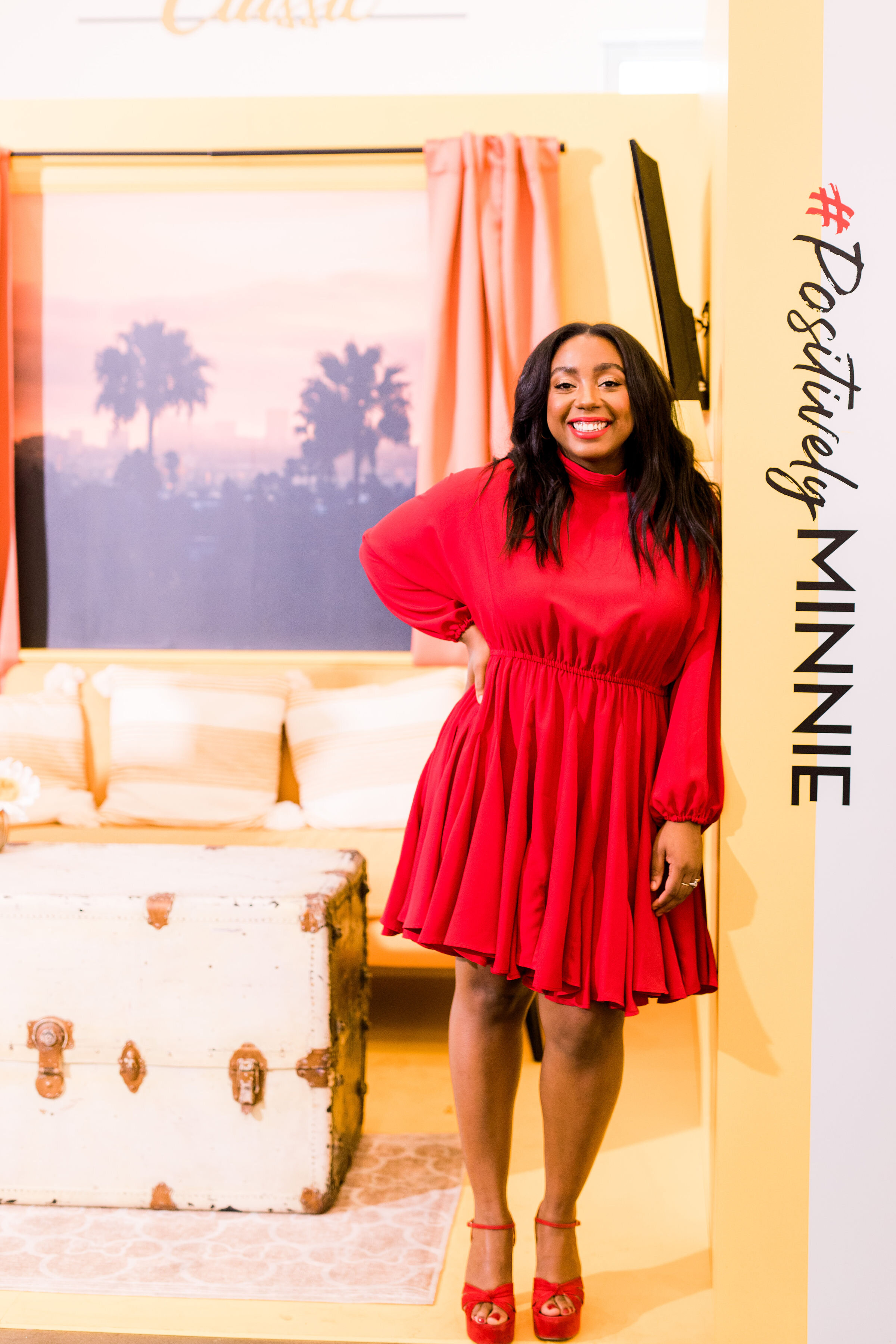
Panel: Keynote Conversation With Lindsay Peoples Wagner
Panelist:
Lindsay Peoples Wagner | Editor in Chief, Teen Vogue
Moderator:
Jaclyn Johnson | Founder and CEO, Create & Cultivate
On achieving success at a young age…
“I still hustle. It is still always a hustle—don’t be fooled.”
On being Teen Vogue’s editor in chief…
“Everything we do is about making young people feel seen and heard.”
“I’ve been careful about giving people chances that other people wouldn’t.”
On seeking out a mentor…
“Don’t wait for someone to save you or give you the keys.”
On finding work-life balance…
“The general rule is that I don’t do anything on the weekends, the only person I see is my husband I watch ‘Law and Order’ and ‘CSI’ and I zone out.”
On loving the color red...
“I felt like I needed a boost when I was starting in fashion and I wasn’t wearing head to toe designer.”
On defining your personal style…
“A lot of times, it’s just trying and not being so scared to take a little bit of a risk.”
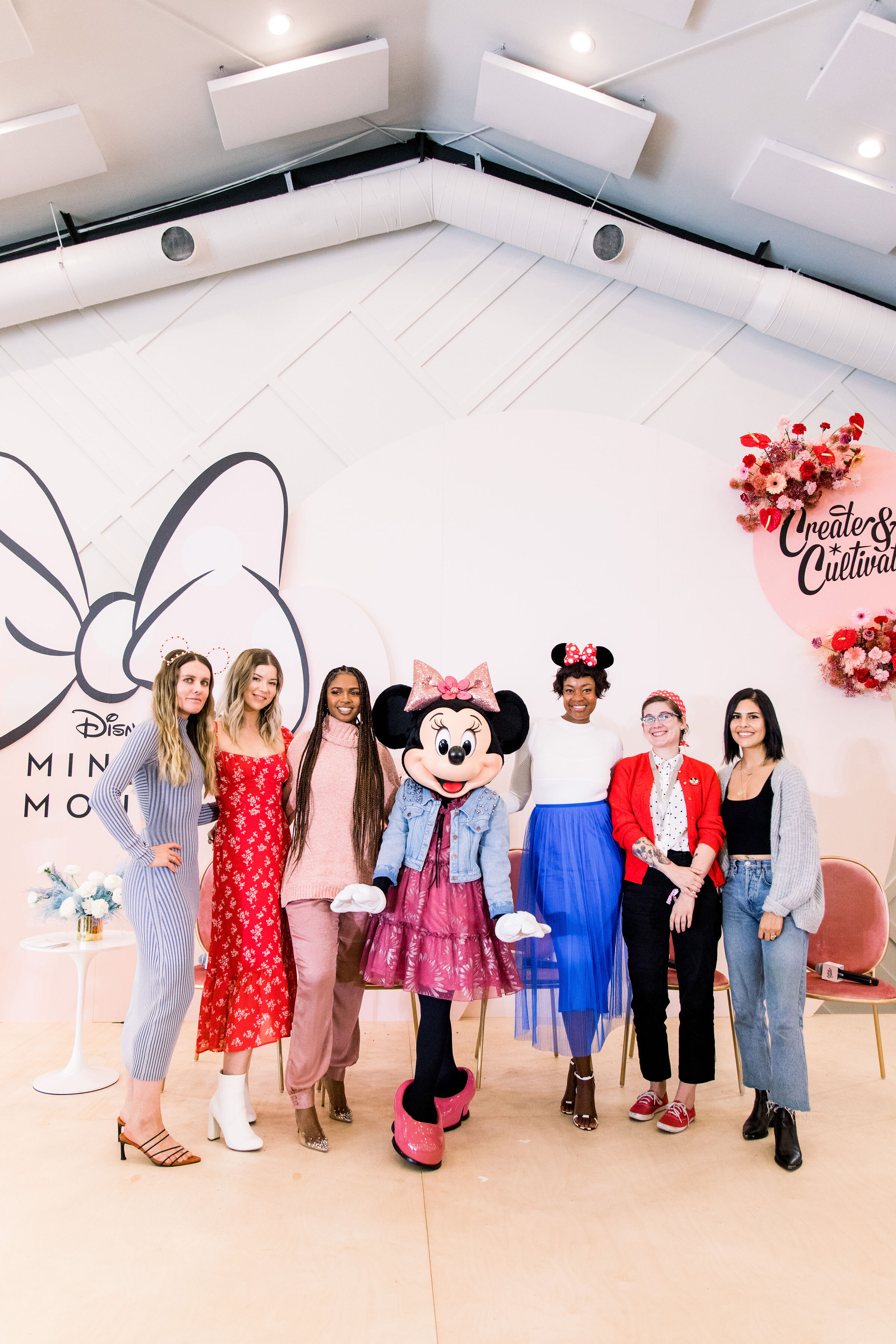



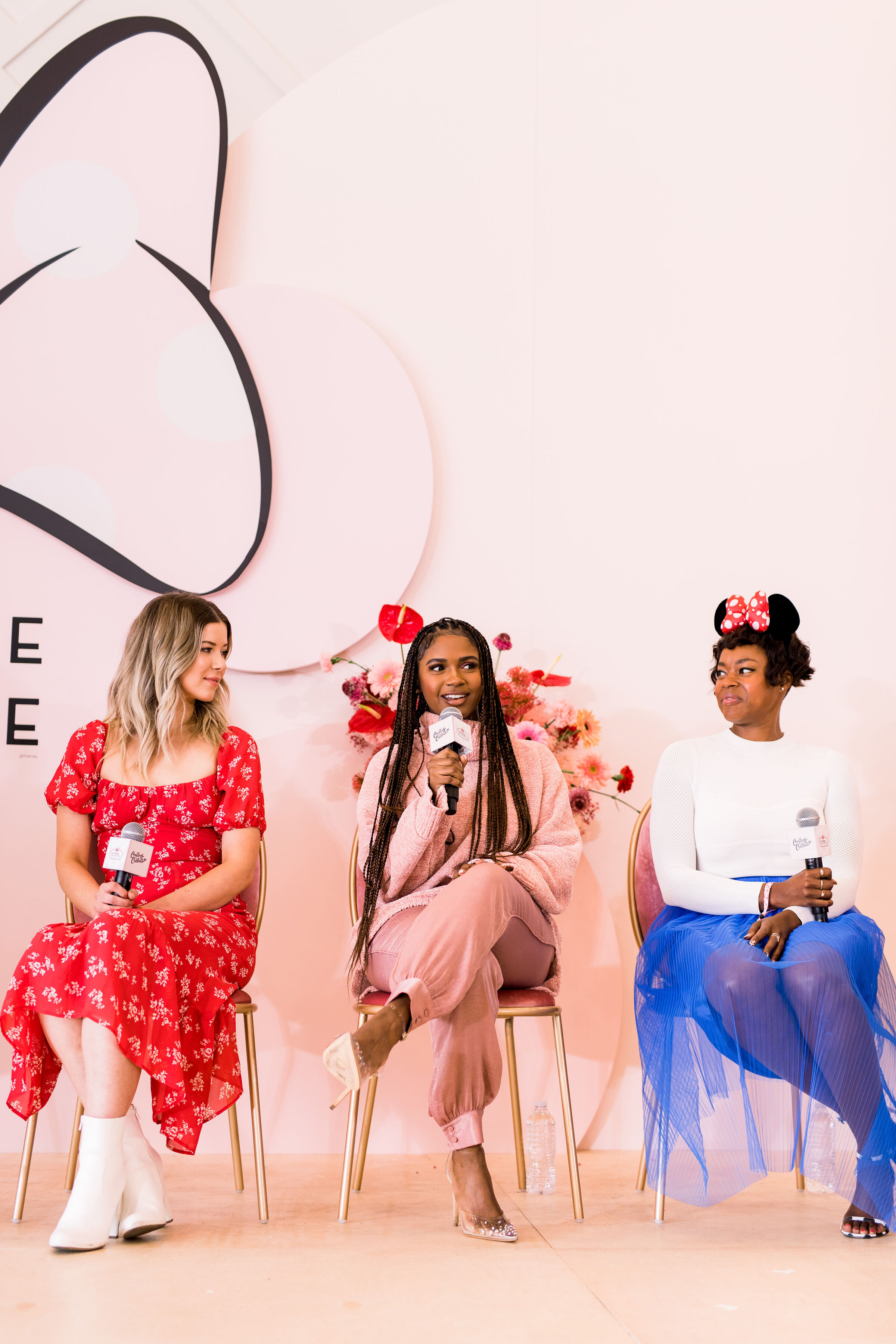

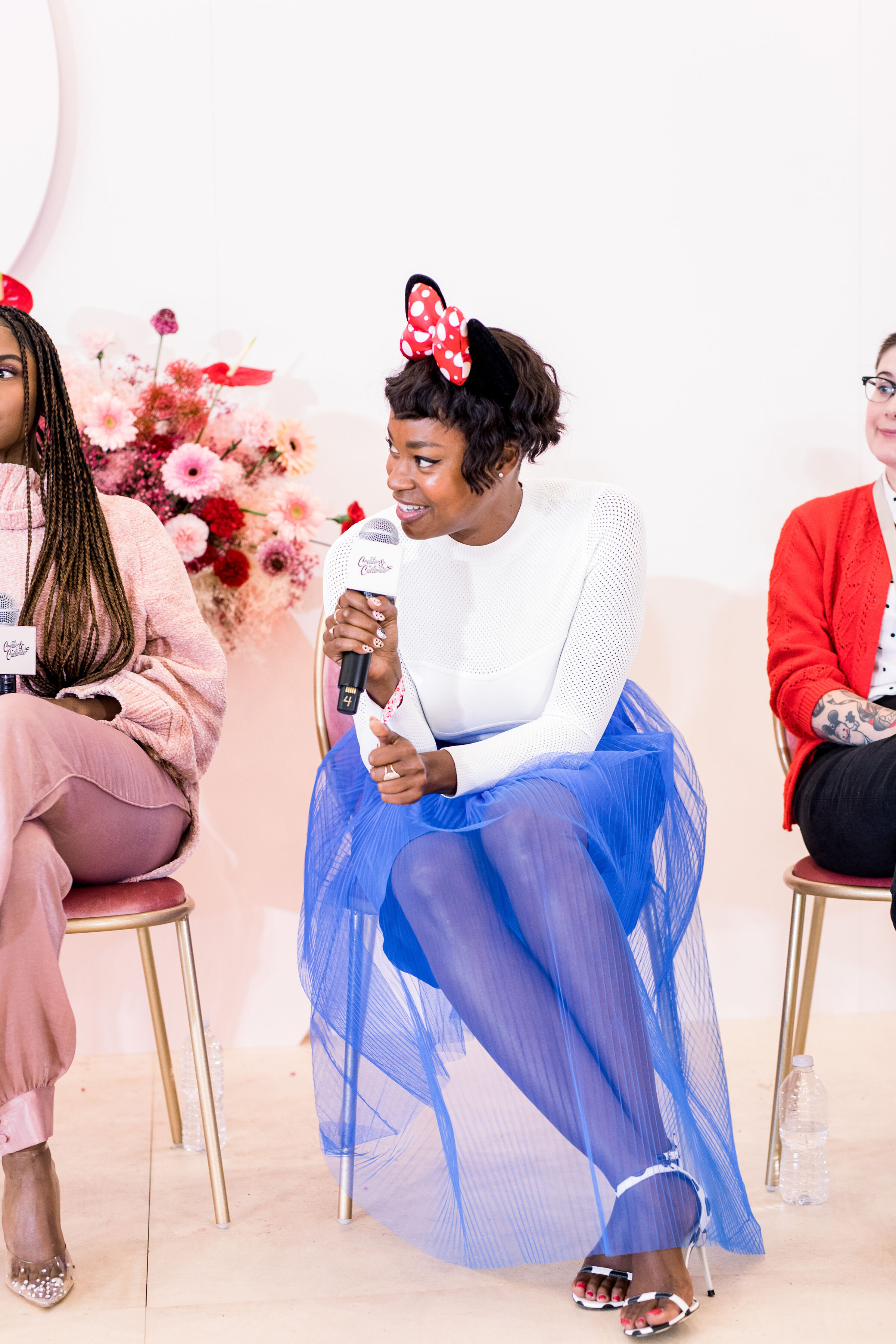

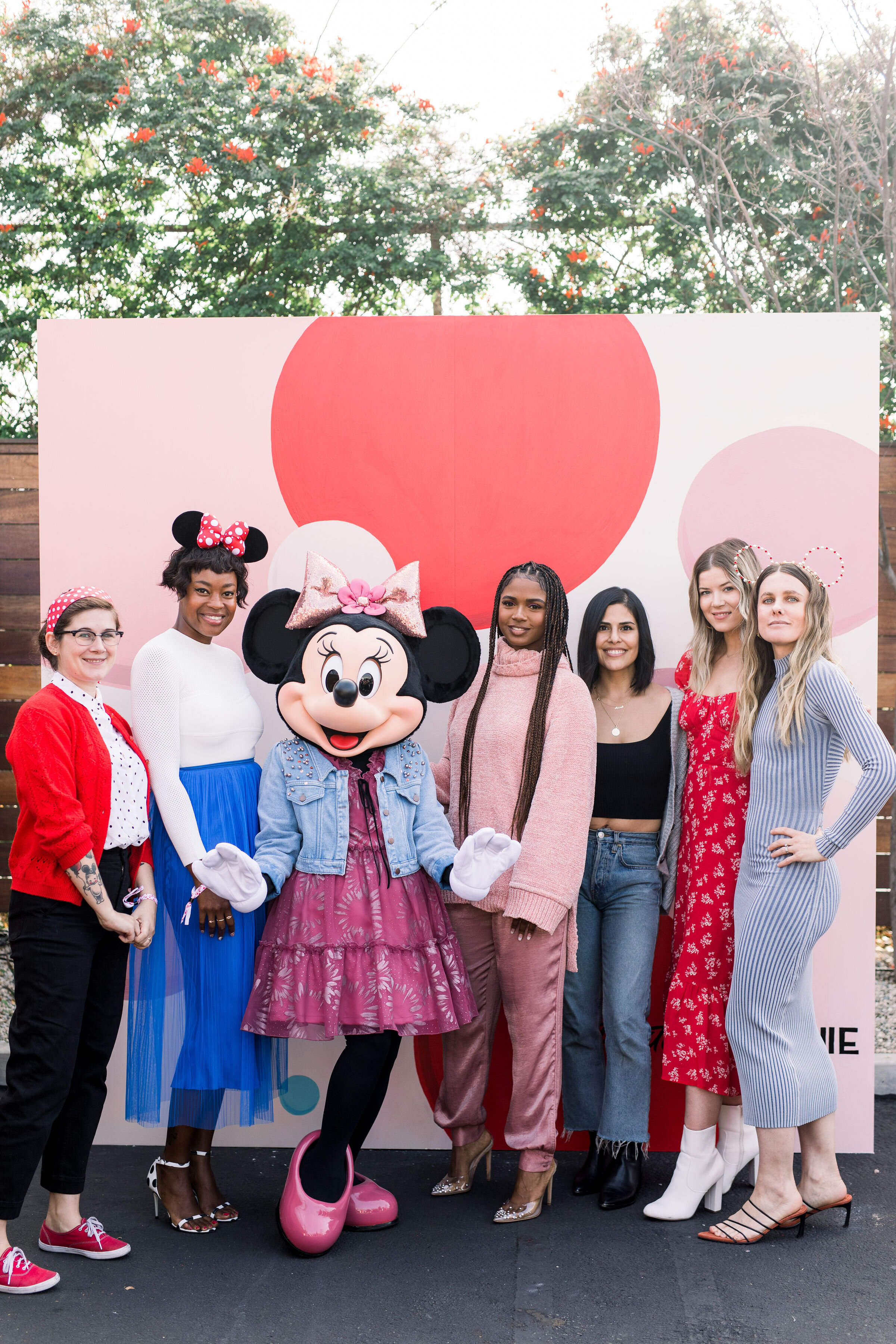
Panel: Bold Moves—How to Fashion the Life and Career You Love
Panelists:
Jeanette Ogden | Founder, Shut the Kale Up
Gemma Correll | Cartoonist, Writer, Illustrator, GemmaCorrell.com
Meghan Rienks | Influencer, Actress, Author, and Podcast Co-Host, Don’t Blame the Pod
Noelle Scaggs | Singer-Songwriter, Fitz & The Tantrums; Food + Travel Influencer, Adventures With Scaggs, LLC.
Brittany Sky | Creator, Artist, DJ
Moderator:
Sacha Strebe | Editorial Director, Create & Cultivate
On building community…
“It’s so powerful to have community because it truly builds you up. We’re all in this together we should all be building each other up.”—Jeanette Ogden
On staying true to yourself and your brand...
"I think you can tell when someone isn’t being authentic with their artwork, there’s just something off about it."—Gemma Correll
"If you really believe in what you’re doing, you’ll find a throughline."—Meghan Rienks
"It’s about allowing yourself to really shine and not be afraid to show that off."—Noelle Scaggs
"I say ‘no’ to a ton of stuff. It’s my favorite word."—Meghan Rienks
On overcoming challenges…
"There are going to be people who punch at you every day, and you have to remember that, at the end of the day, you’re the one who walks in your shoes, not them."—Noelle Scaggs
On taking risks…
"When you're fashioning your career, it's about not being afraid to change your stripes every now and then."—Noelle Scaggs
“If you feel it in your gut and you know what you’re passionate about, just take the leap because what’s the worst thing that could happen?”—Brittany Sky
On dealing with rejection…
"They’re not saying no to you, they’re saying no to your offer, so don’t take it personally."—Brittany Sky
On partnering with brands...
"I want to make a long-term brand, this isn’t just a get rich right now thing. I want to be honest with my followers because they’re my friends, my family."—Jeanette Ogden
"This isn’t ad space, this is my diary."—Jeanette Ogden
"I’m just really upfront and forward and I know what I want and what I like and I know myself and my audience."—Meghan Rienks
On doing what makes you happy…
"As long as you’re doing what makes you happy, you’re going to see the money."—Brittany Sky
On breaking through creative blocks...
"I read, preferably something that has nothing to do with what I’m trying to do."—Gemma Correll
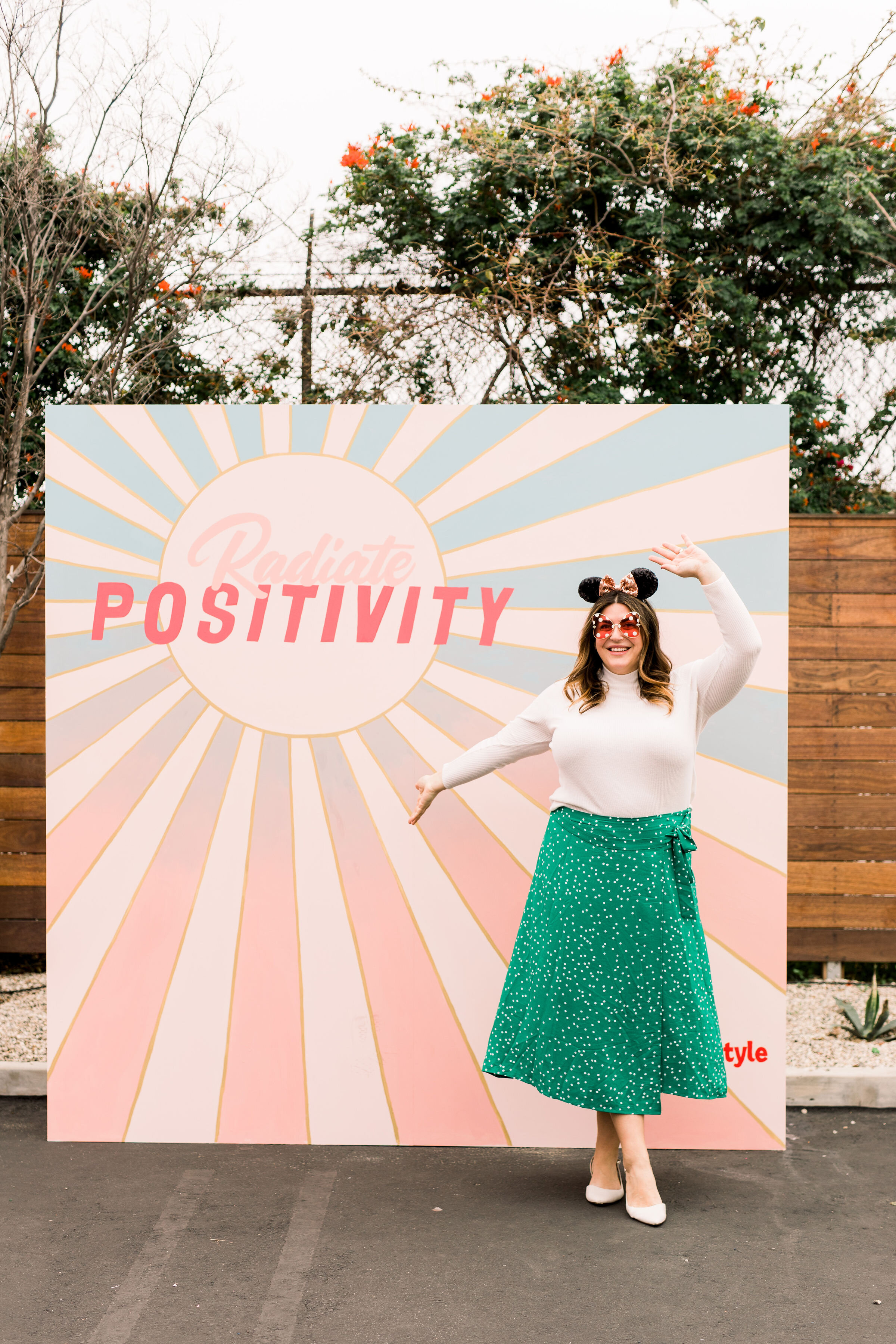
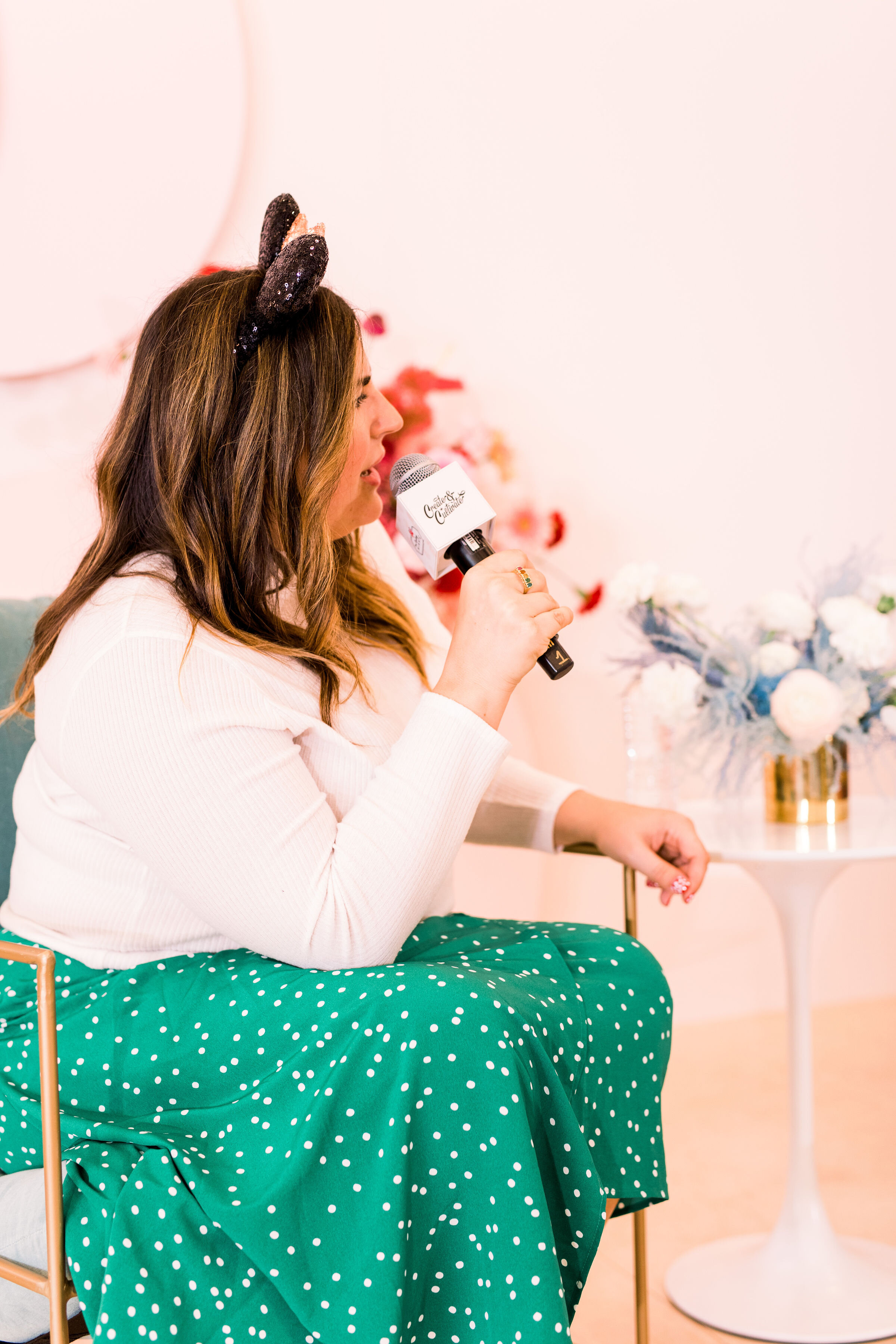
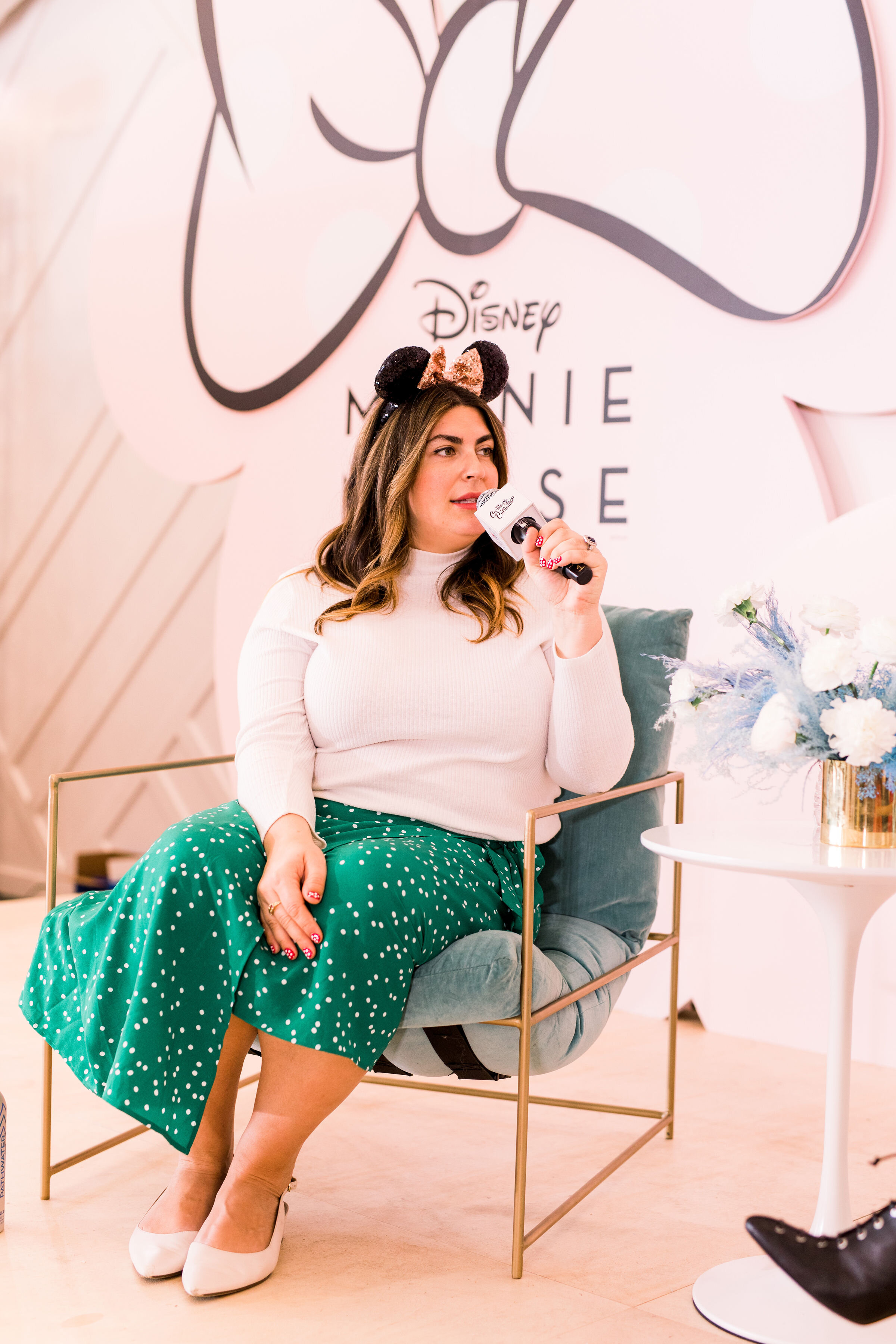

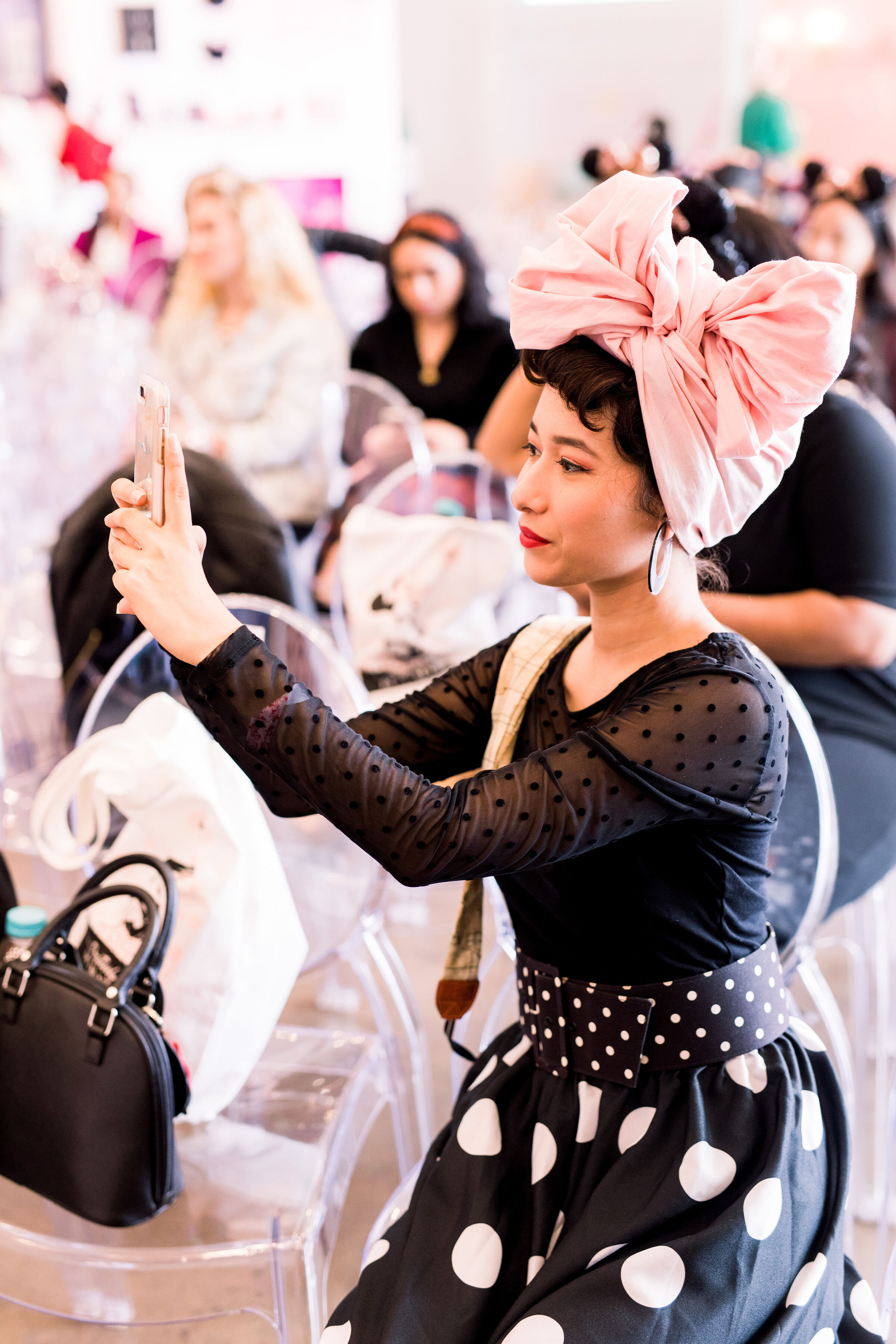
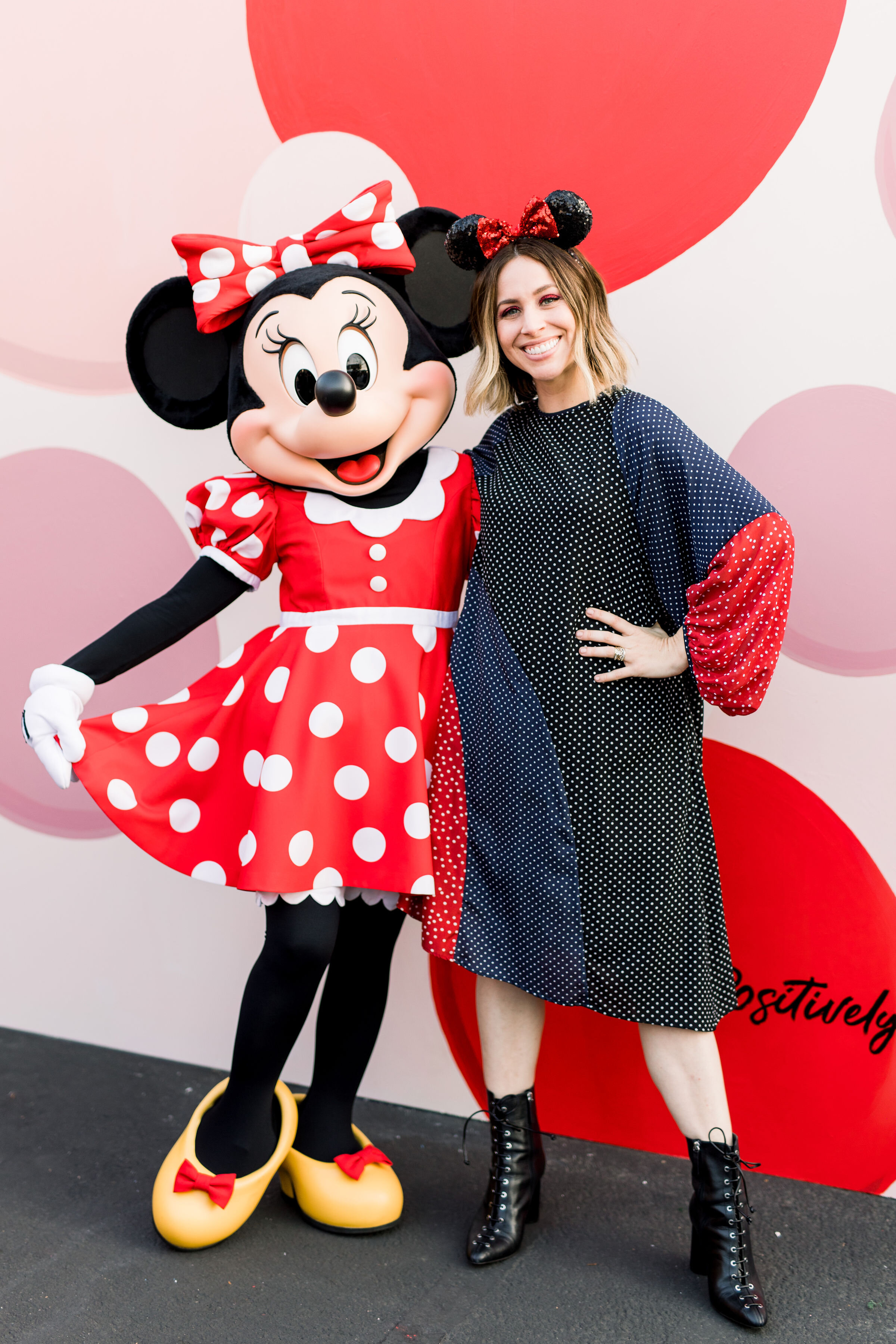
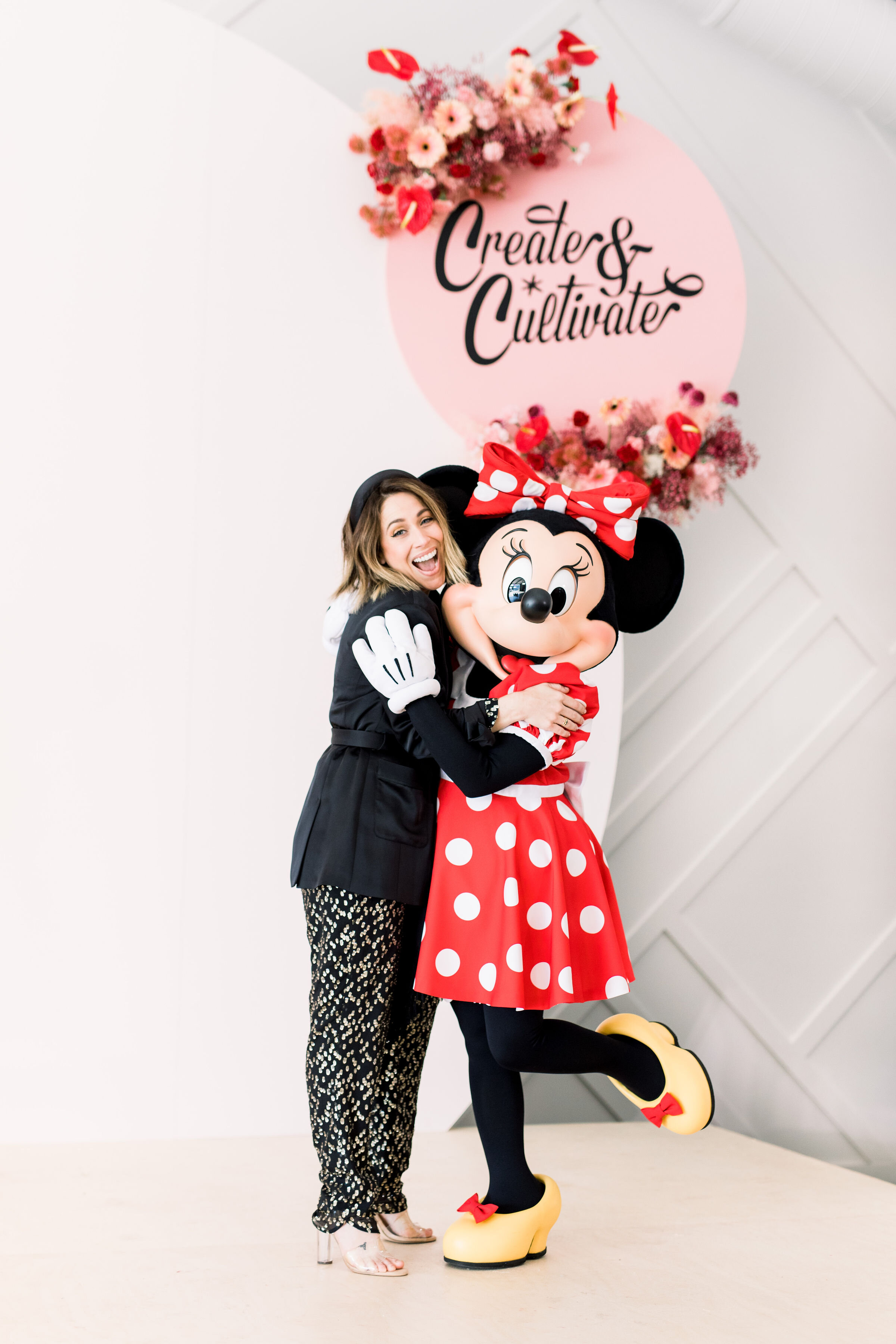


Panel: Keynote Conversation With Katie Sturino
Panelist:
Katie Sturino | Founder of The 12ish Style and Megababe
Moderator:
Jaclyn Johnson | Founder and CEO, Create & Cultivate
On Minnie Mouse as a style icon…
“I love that she is bold with style and fashion and print. She’s a curvy girl and she’s not afraid to rock color.”
On launching 12ish…
“People didn’t understand and still, to a certain extent, don’t understand how to talk about size.”
“This is a blog for people who feel ignored by the fashion industry.”
“I was trying to provide hacks, but it really turned into a body acceptance movement way beyond clothes.”
“Just like myself, people were really desperate to find a fashion blog where they saw a body that looks like theirs.”
On creating #MakeMySize…
“It wasn’t meant to be a callout culture thing, it’s much more about letting the brands know that I want to wear their clothes.”
“It’s the part in ‘Pretty Woman’ where she walks in with the cash. That’s me every time—I have the cash.”
On the importance of diversifying…
“If it wasn’t a job 10 years ago, who’s to say it’ll be a job 10 years from now.”
On hiring the right people…
“I need someone who never looks at me and says, ‘That’s not in my job description.’”
On finding inspiration…
“I really like surrounding myself with inspiring women. It’s very inspiring to just see someone doing it.”
On authenticity…
“It’s important to be the kind of person that people feel like they can be real with.”
On being an entrepreneur…
“People are always trying to put out the success vibe, like #flyingprivate, but I’m like, #iminataxi.”
On her legacy…
“I want to be known for making people feel good.”
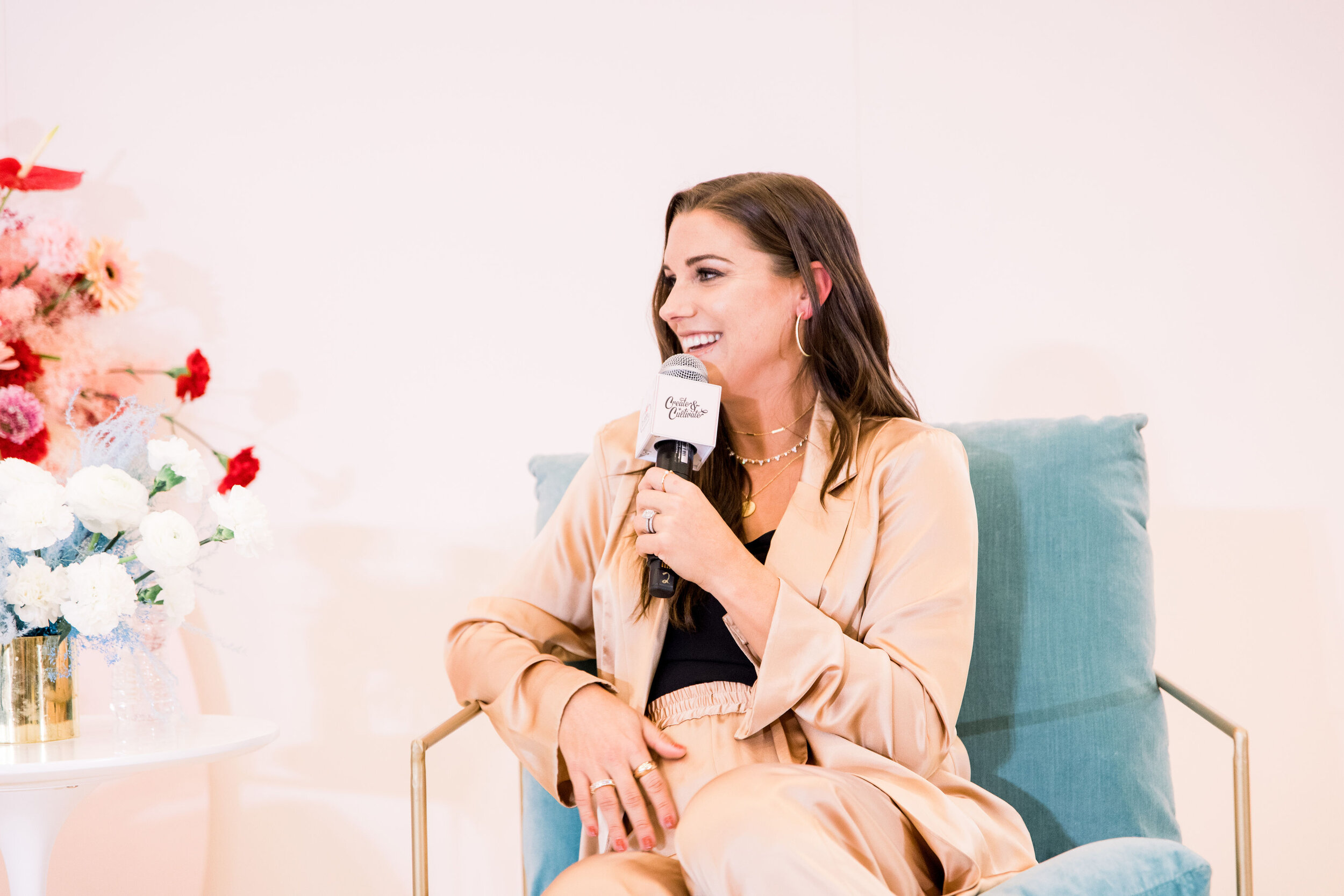

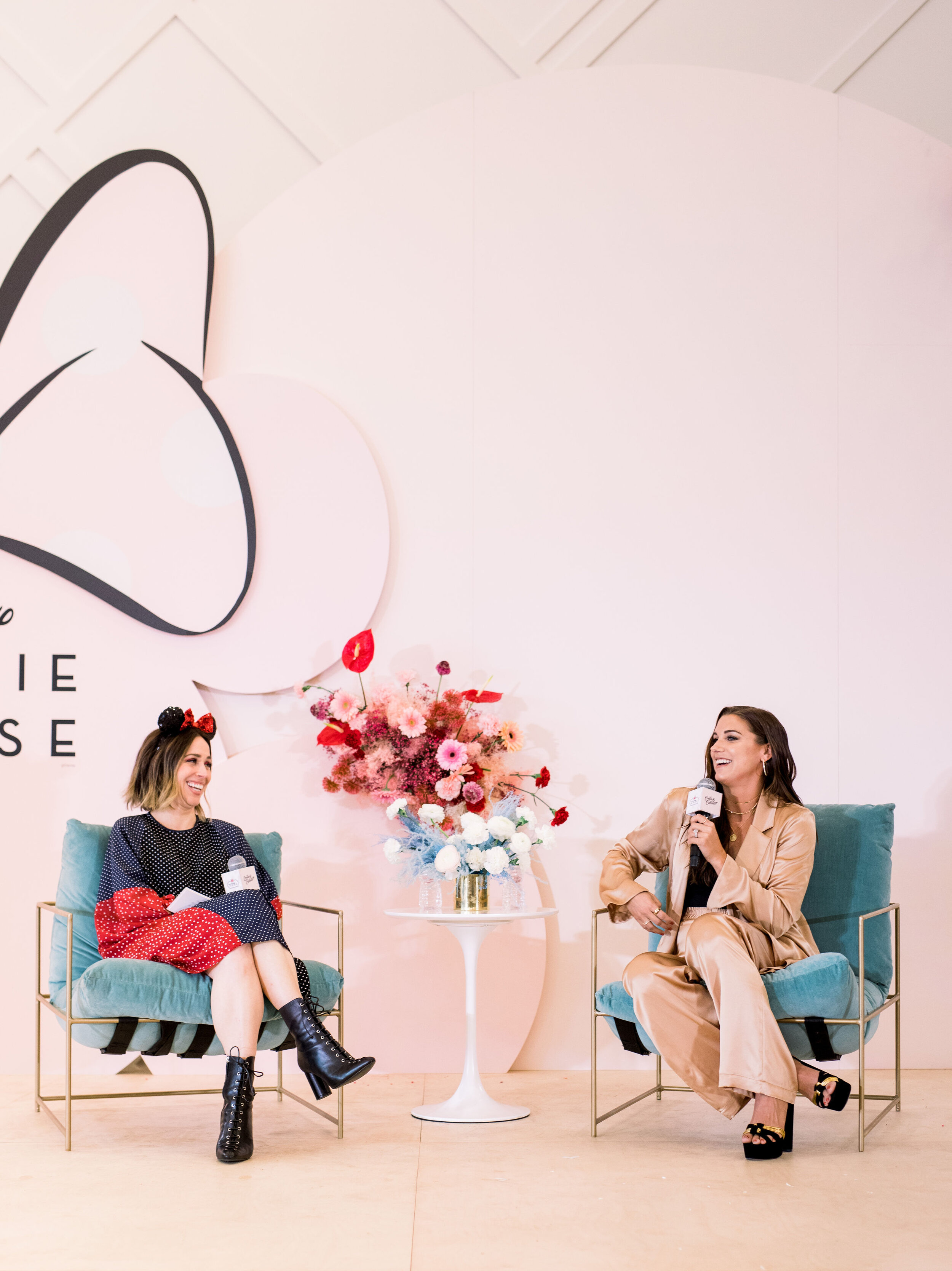
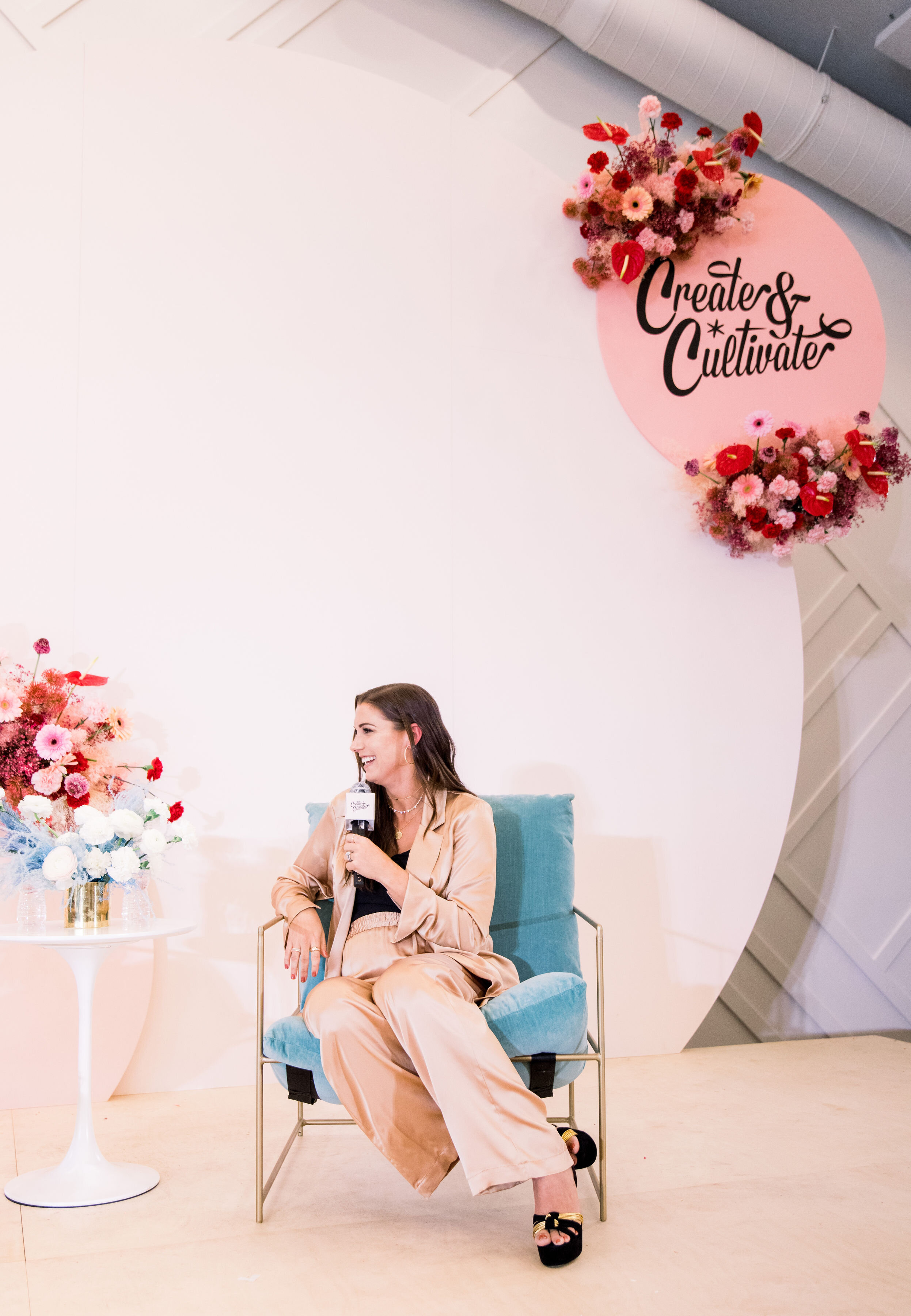
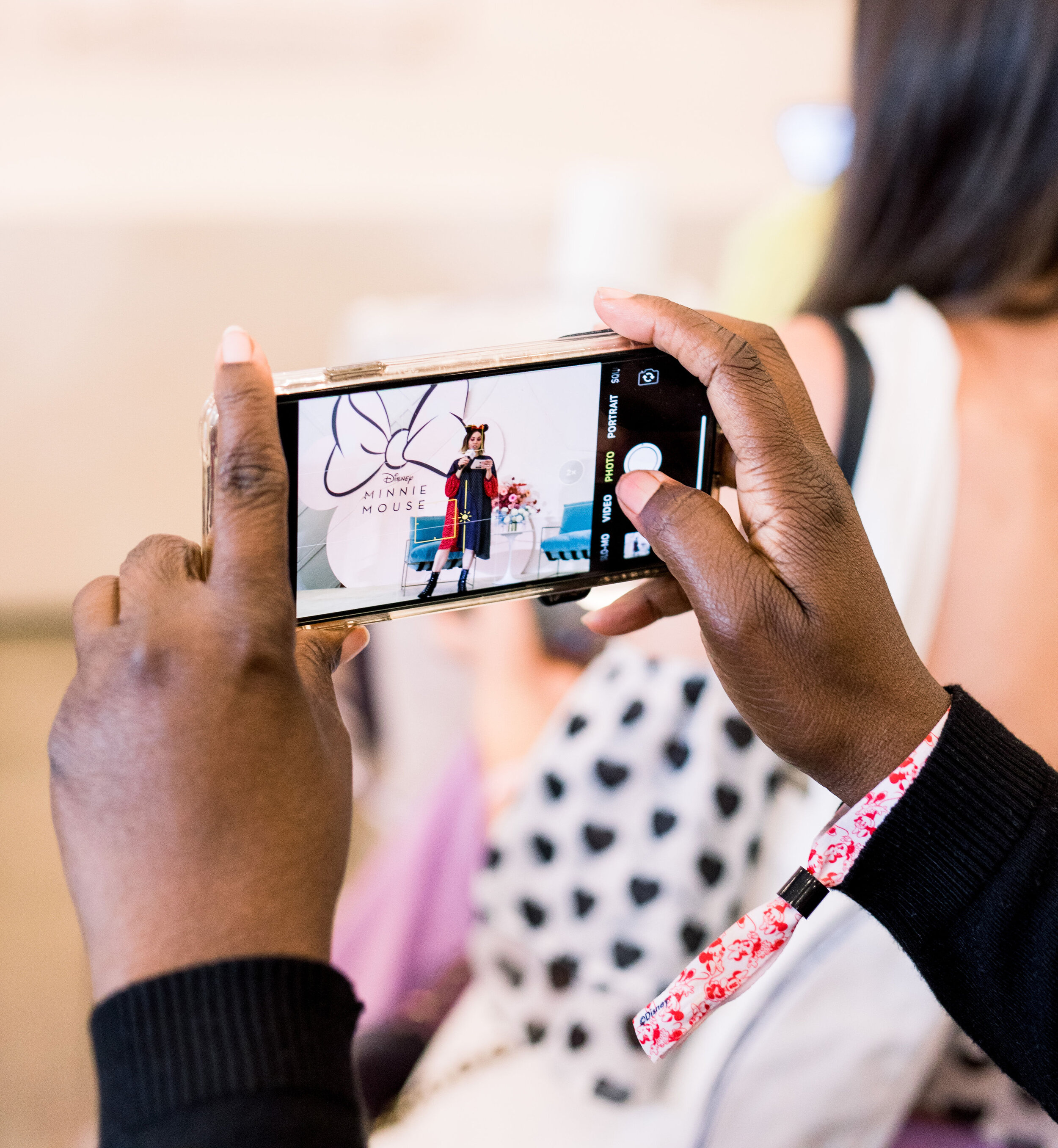
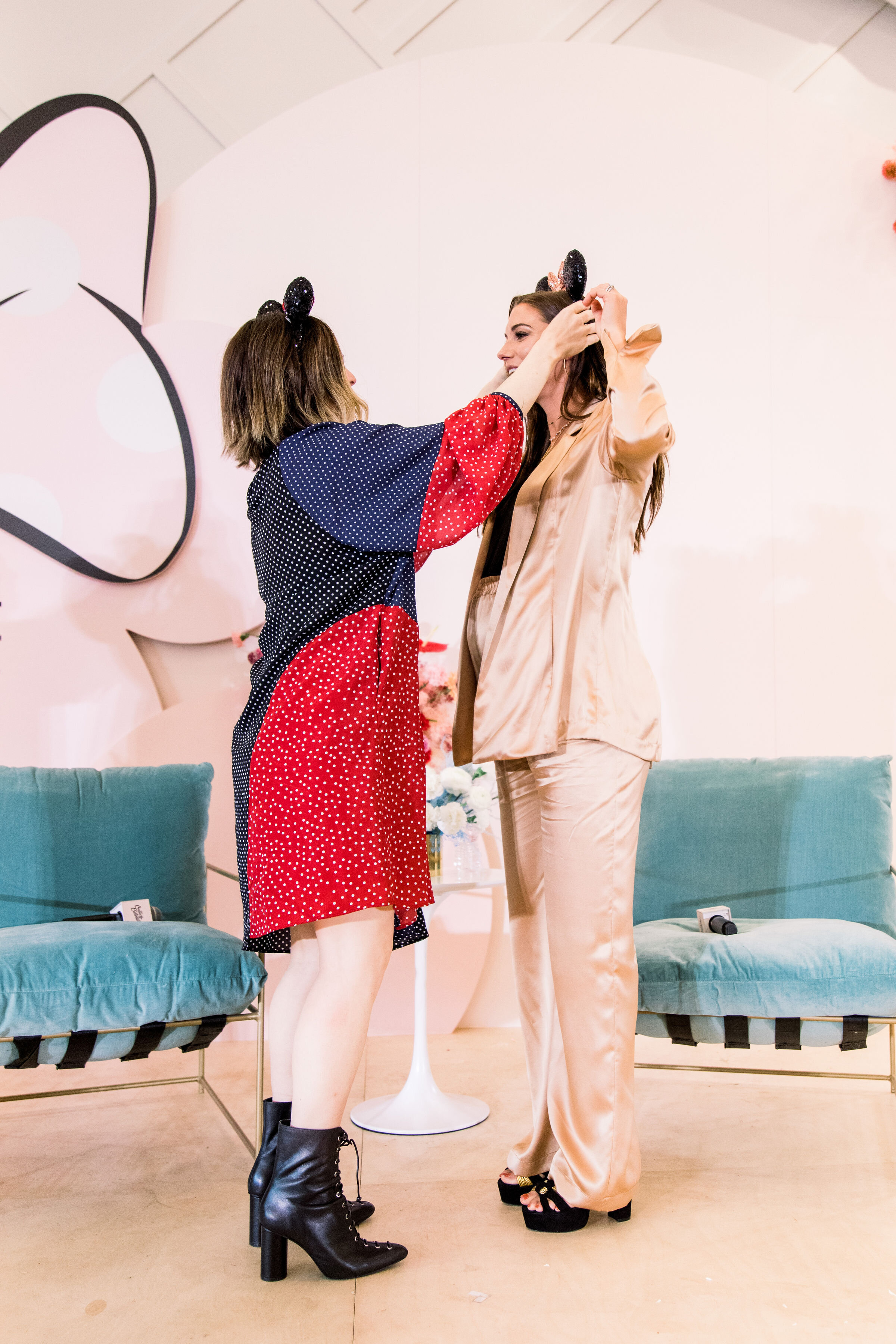

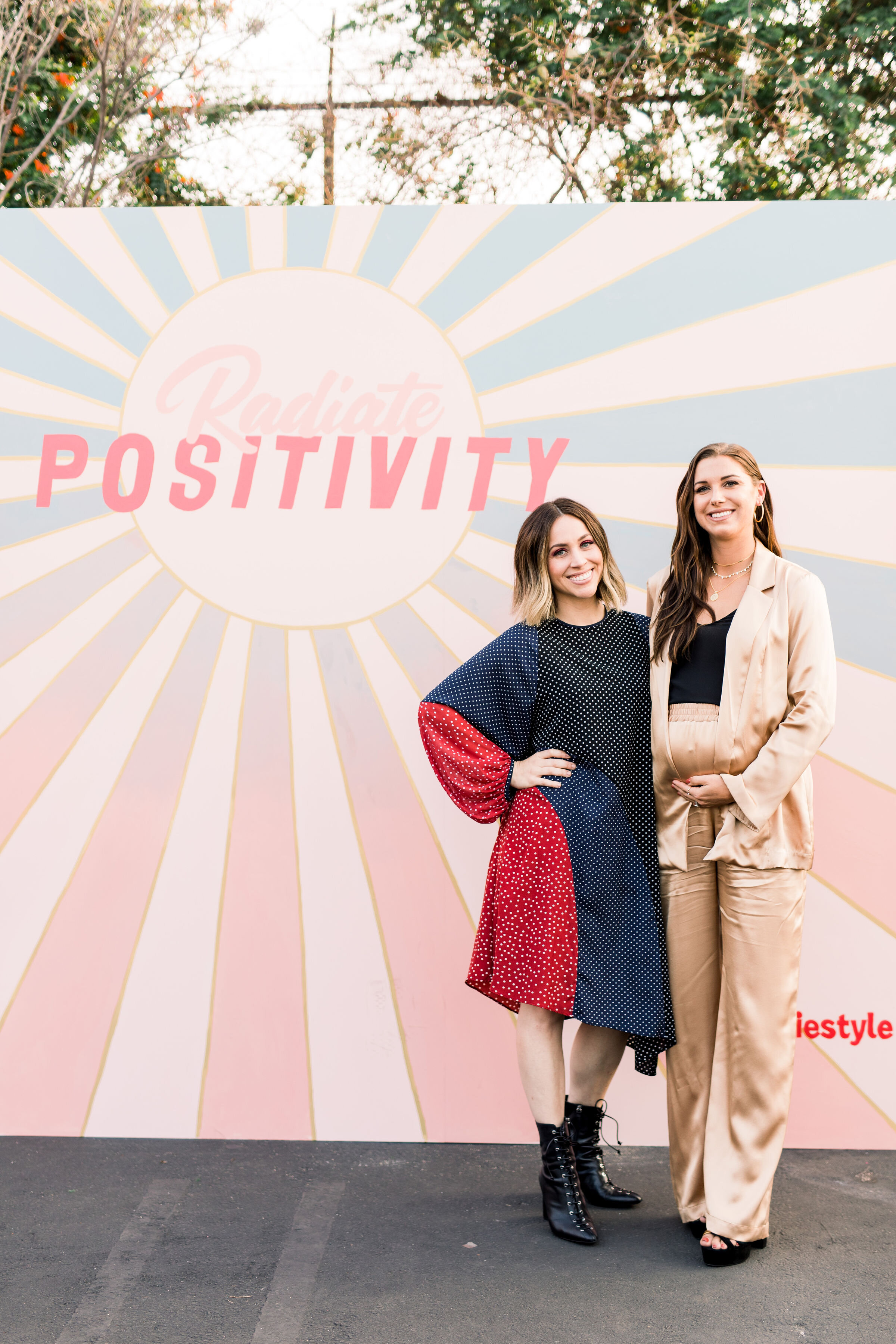
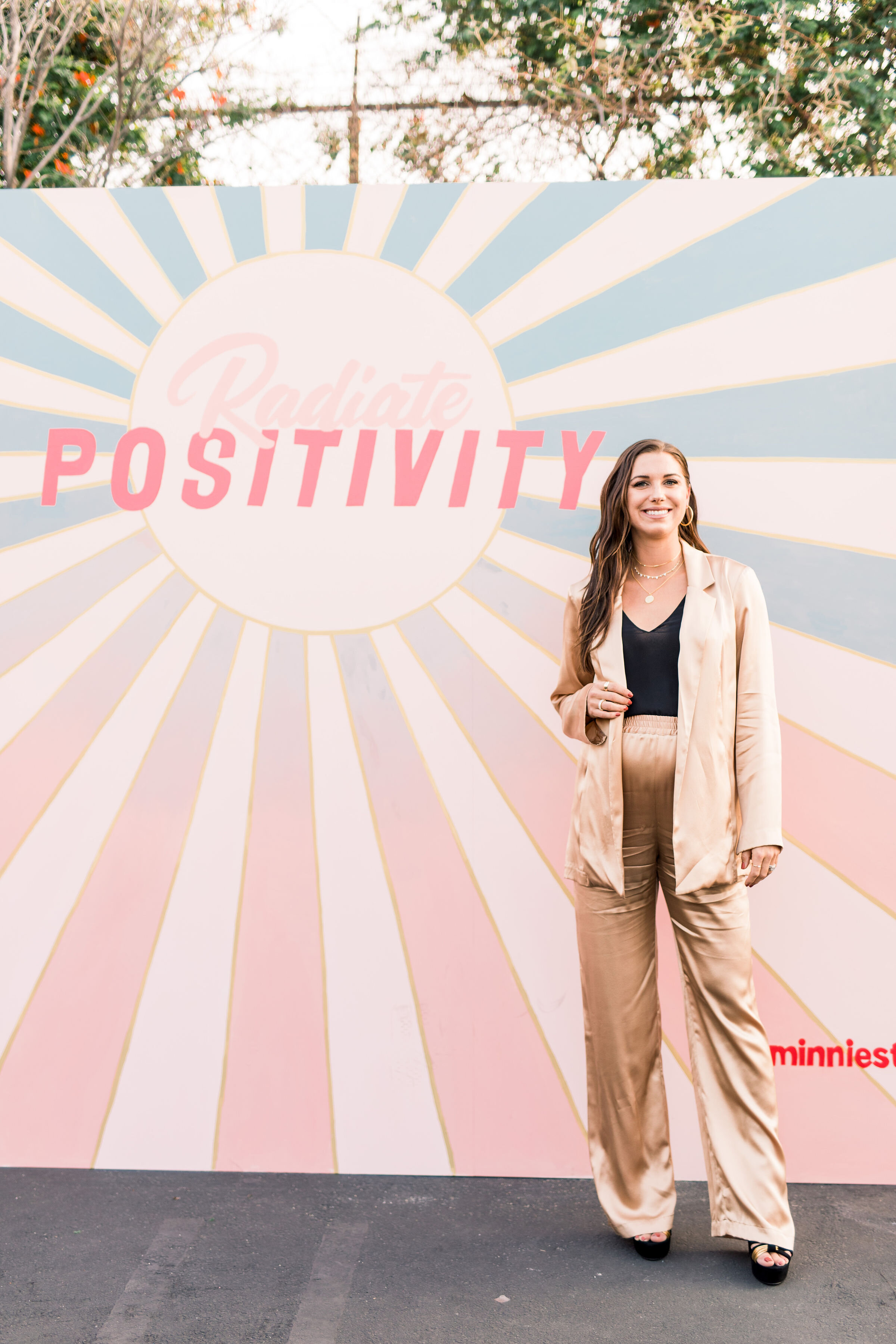
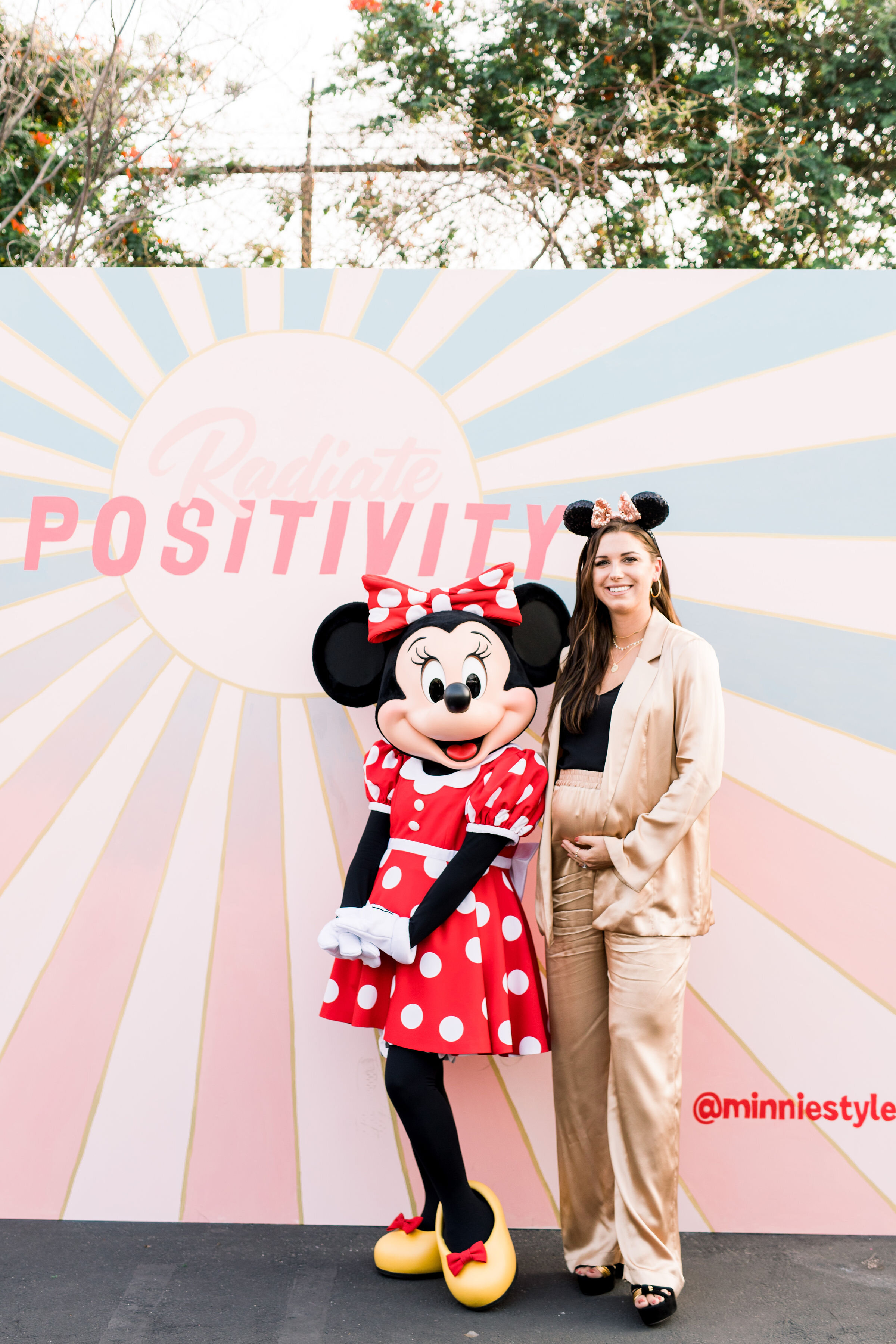
Panel: Keynote Conversation With Alex Morgan
Panelist:
Alex Morgan | Co-Captain, U.S. Women’s National Soccer Team
Moderator:
Jaclyn Johnson | Founder and CEO, Create & Cultivate
On taking risks…
“You’re never going to get the reward unless you take the risk.”
On being a pressure performer…
“What’s really helped me in pressure-intense situations is the self-belief that I have and betting on myself.”
On supporting other women…
"We’re stronger in numbers."
On starting an apparel company with her teammates…
"We wanted to invest in ourselves and it paid off."
On the importance of sports…
"There’s so much that sport can give you that you can’t learn otherwise."
On the state of gender equality in sports…
“We won’t stop until we’re not discriminated against at all. Until we’re given the same opportunity to do what we love and make the same amount.”
“We’ve tried to educate people on the fact that we do make as much revenue, or more, for our employer and that, in turn, means that we should receive the same amount or more, potentially.”
"Progress is good, but it’s never at the rate that you want it to go."
On maternity leave…
"If work is what you love to do, you shouldn’t think that you have to put that on hold to start a family. We can do both."
On surrounding yourself with women who lift you up…
"Having a group of women that support you unconditionally is important."
On being a leader…
"It’s important not to change the integrity of who you are. To change something that you do or say because you’re a captain or a leader is not what leading is all about."
On where her confidence comes from…
"I get my confidence from a lot of my teammates, and I get a lot of confidence from proving myself right."
On the importance of staying grounded…
"Remember where you started and how you got there, and know that the process is more important than the outcome."
On the value of self-care…
"Don’t hold yourself back, make sure that you’re fulfilling yourself."
See more photos from the event!

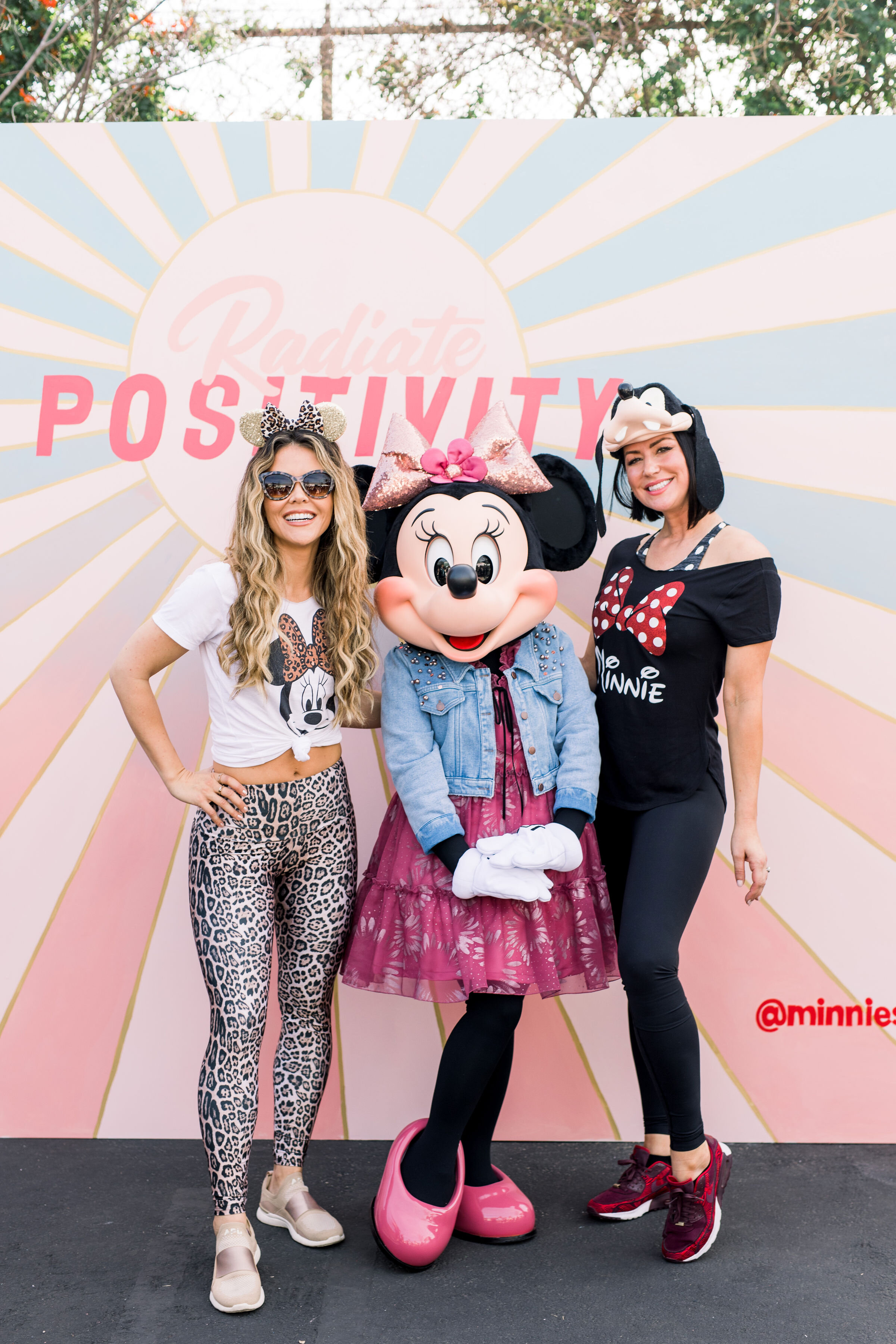

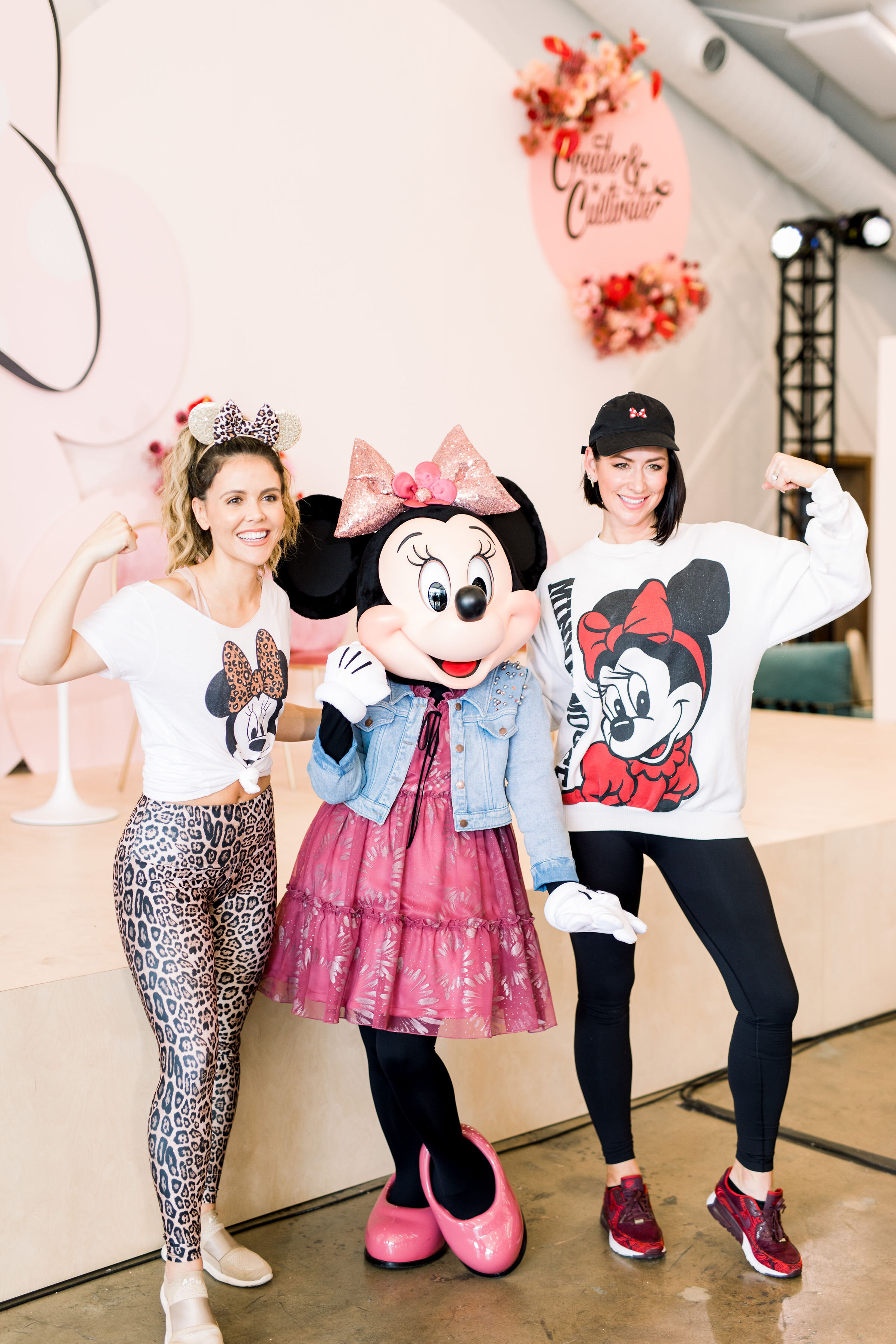

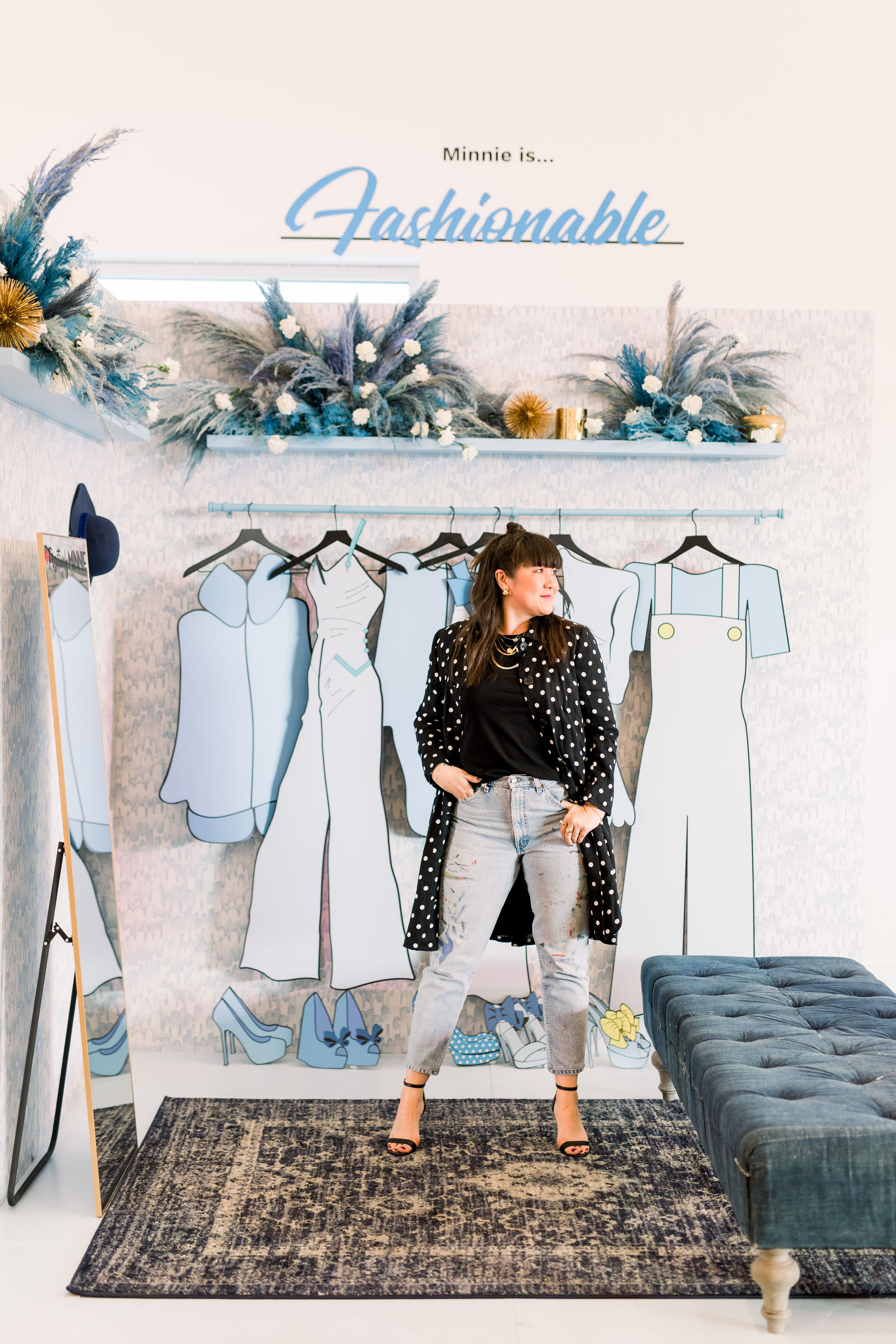










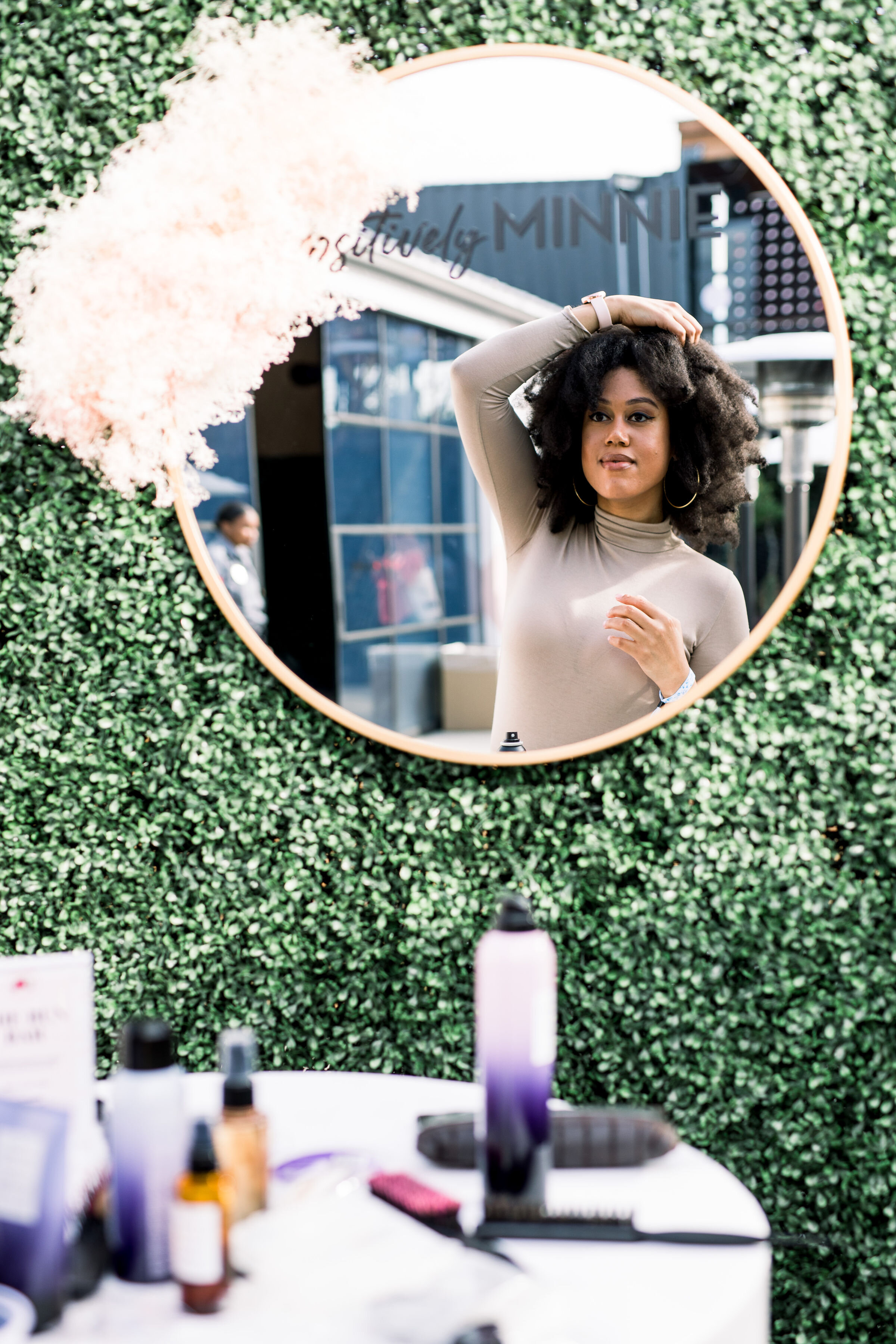






Photography: Smith House Photo
Free Download: Discover Your Purpose In 4 Steps
Not all who wander are lost.
“Not all those who wander are lost”... the ones that aren’t lost trust themselves to find their way!
Every now and then, we can feel like we aren't achieving our potential our have gotten off the path from our initial life goals, but once we take notice that's we're off track, that's where we can take action and make a change for the better.
Take it from our good friend Maxie McCoy who's established her purpose in her career, and is all about helping others discover it as well. This week, she's helping you find yourself with a free workbook download that will help you plan out dreams and aspirations and help you act on them in 4 steps.
Enter your name and email below to get access to download it now!
5 Women Share When They Feel the Most Fearless
The limit does not exist.
Fear is normal. It keeps us safe. It can even motivate us to get our ducks in a row.
But every woman knows that moment, when you hit your stride, and a surge of fearlessness surges through you. The moment where you know, “I got this.”
It’s a get up and go after it feeling that is empowering. And contagious.
So we asked five women to share when they feel the most fearless. We encourage you to do the same in the comments and pass on the good vibes.
Allie Greenberg, Senior Brand Marketing Manager, Richer Poorer
“This is corny,” says the Marketing Manager at LA’s favorite inner-wear company, “but after a really good, sweaty workout.”
“Or,” the new mom says, “when Sadie [her daughter] and I take a stroller walk around the neighborhood-- I’m so overwhelmed with happiness that nothing can touch me.”
She adds, “Wine also does the trick.”
Paige Bowen, co-founder of Bowen House
Known for their one-of-a-kind furniture pieces, the “daughter,” behind the mother-daughter team at Bowen House, says she feels the most free and fearless after delivering a custom piece to a client.
“Whenever we create really custom pieces for clients I’m always really inspired,” Bowen says. “Then, fear sets in right before it’s delivered.” Luckily that feeling doesn’t last long. “It’s probably right after I see how perfect it looks and the client loves it that I’m the most fearless. It’s like a mini-high.”
Adri Contreras, Senior Events Director, Create & Cultivate
“Fresh out of the salon,” Adri says, “is when I feel the most fearless. I color my hair. I get highlights and when they are glossy and everything is blown out, I feel unstoppable.” However the event director knows that there isn’t always time to hit up the salon, especially before traveling for big conferences. So she keeps things spruced with Moroccanoil Color Complete Collection. The Protect & Prevent Spay super easy to bring along in her suitcase. By shielding hair from environmental factors including UV rays, pollution and thermal damage, Protect & Prevent Spray helps reduce brassiness and fading at the source. And it’s proven to work. After 10 washes, the Moroccanoil Color Complete Collection is scientifically proven to extend color life and vibrancy by 100%. Those are the kind of numbers we like over here.
“Look good, feel good,” says Contreras.
Aideé Chavez, Founder @MexicanYogaGirl
Friends and fam do it for this writer and content creator.
“I feel the most fearless around the people I love and love me back,” Aideé says. “My family and friends are such a sweet place for me. When I am around them I love how I laugh and the stupid stuff I feel open to say, how all my insecurities can be on blast for them to see and yet in that, there is this power where we connect with each other in a way that gives me the energy to go out into the world feeling and loved.”
Can we get a #same?
Brittany Littleton, Activist, Rescuer & Rehabilitator @LitteLoveRescue
“I feel the most fearless right after getting through hard situations. Any time I feel afraid or unsure of myself I remember those times and look at how far I’ve come. Last year was truly the hardest year of my life,” the single mama shares. “I thought I wouldn’t get through it. Then I had my son and I felt-- fearless isn’t even the word for it. I felt invincible.”
What makes you feel fearless? Share below!!
MORE FROM OUR BLOG
The Most Inspirational Thing You'll Read All Day
Mel Robbins is breaking down everything.
Mel Robbins used to work all day long. She never set a stop time and so, she never stopped. But the renowned motivational speaker, creator of The 5 Second Rule, and a best-selling author and Audible Original host, is on a new track-- one that took her many years and 5 seconds to figure out.
At 41 her life was a mess. (Self-admittedly.) She couldn't get out of bed. She was unemployed. And then she changed her life with the 5 Second Rule. Laying in bed Mel counted backward from 5 to zero.
In that blip of time she activated her prefrontal cortex, which, according to Mel (and science) "is the part of the brain in charge of decision making, strategic thinking, acting with courage, learning new behavior, and working towards goals."
She's now the host of the Audible Original, "Kick Ass with Mel Robbins," where she talks to real people with real problems. Sound like you?
Read on.
You've said that dreams deserve 5 minutes in the morning before you let the world in. Can this kind of thinking be applied to any point during the day and have the same effect?
Most of us live our day-to-day in a reactionary mindset. We’re rolling through our to-dos, firing out emails, doing the daily chores and tasks, and getting what needs to be done finished.
And, as long as you’re putting out fires, you aren’t moving the ball down the field on what matters most to you. We knock things off of our to-do lists because that feels productive, but because we never actually make any real progress on the things that matter, we often still feel a void in our lives.
Your dreams will never come to life if you’re checking boxes off your to-do list. Instead, you need to take deliberate time each day to make meaningful progress on your goals.
I do this by carving out 30 minutes each morning of protected time to work on my goals.
There’s a reason the morning is the best time to work on your goals–and it lies in neuroscience.
According to Duke University professor and researcher Dan Ariely, we all have a two or three hour window of peak productivity every single day–and it starts an hour after you wake up.
So, if you pop out of bed at 6 a.m., your peak thinking and productivity window is 7 a.m. – 9 a.m.
I do whatever it takes to find 30 minutes before 7:30 a.m. to plan out my day and spend some time on a project that matters to me.
Why else is it important to plan and do the most important stuff first thing? Because it’s the best time for the brain to focus on the tasks or goals that advance your own personal or professional goals.
Answering emails, taking phone calls, sitting in meetings have a way of taking over your schedule and rarely lead to making major improvements in your life.
The concept of “30 before 7:30” cannot be done once you walk into the office. You must do this at home, at your favorite coffee shop, on the train, or sitting in your car in the parking lot.
Do not try to do this at work. The moment you walk into your office, answer that first email, or take that first call–your day is gone. Your attention is no longer being focused on your own goals and dreams.
For your own happiness and to protect the time necessary to focus on the deep work, the first two hours of your day must be grabbed by you. Now, if every once and a while you’ve a morning in which it’s impossible to take 30, you can leave it until the evening. But I’ve found that most of the time “later” becomes “not today.” At night, you’re tired–and you’re about 12 hours past your peak thinking window.
If you are making progress on projects that matter, even if for just a few minutes a day, you are winning the long game.
For our readers who have a hard time setting professional boundaries-- they're burnt out, they're replying to emails constantly, they never say no, they work weekends-- what's your advice?
When I find myself working around the clock, I remember Parkinson's Law.
Parkinson’s Law states that work expands to fill the amount of time given to it, which means that if you never set your own boundaries, you'll literally ALWAYS be working.
And that not only wears you down–it wears other people in your life down, too. A recent study found 33% of people answer messages in the middle of the night. And you don’t need me to tell you that checking your emails at 3 AM puts you at risk for burnout and emotional exhaustion.
Instead of endlessly working and being addicted to your phone from sunrise to sunset, try this: Set a time today that you will absolutely stop working.
As someone who used to work all day long, I was amazed what happened when I started setting a quitting time, something I now do every single day.
Instead of becoming less productive, I actually got more done. With my quitting time in mind, I was more focused, concentrated, and made even more progress.
A quitting time is the difference between an unfocused 12 hours of work or a productive, distraction-free 8 hours–in which you get the same amount of work done.
If you can get serious about managing distractions and removing them, you will find your productivity is off the charts. Every interruption takes 25 minutes to fully recover from and get back into focus mode.
If signing off at 5 PM makes you nervous, try this method for just one day. Before you get to work, take your 30 before 7:30 and plan out your day. Once you get into the office, write your quitting time down and start on your #1 project of the day before you check your email. Keep your phone on silent and your computer’s notifications off. If you find yourself getting tired, get up and walk for 5 minutes.
By 5PM, you will have most likely accomplished as much as you would working even longer.
Try this one day at a time and you’ll find that the extra time to recharge at night actually makes you even more productive the next day!
On a related note, the art of managing distractions is one of the superpowers of the 21st century. If you can tune out the notifications, the noise, and the chatter, you will get twice as much work done in half the time–allowing you to have quality time with your family and loved ones at night.
For young working women there are fear-based thoughts that if they don't do all of the above (are the last one the leave the office, say no to answering emails on the weekend, etc.) there will be someone behind them happy to take their place. What do you say to that?
The key word here is “value.” There’s a major difference between showing up at work (no matter how many hours you are online) and providing real value.
If you make your boss’ life easier and you further your boss’ strategic objectives, you are providing an incredible amount of value–and your boss will not think about firing you, even if you set clear boundaries around your time.
The secret to providing value is to ask yourself one question every day.
It’s to put yourself in your boss’ shoes and ask: What is the most valuable thing that I can do for him/her?
When you choose which projects to work on, you should actively seek to align your workload and your priorities with your boss’ objectives. While it may be more fun for you to work on projects that are not as important, when you become a proactive strategic contributor, you become an invaluable asset to your team.
If you’re currently not a huge value-add to your company, you can change that starting now. Tomorrow, ask your boss to talk and find out his or her strategic objectives–and start to align your work in this direction.
This question also gives you a formula for how you will answer other people who ask for your time and energy at work.
Many of us, especially women, want to please everyone in our lives, and it’s no easier to say no to a colleague or your boss as it is to say no to a friend or family member.
At work, you need to get clear on your priorities. And then, when someone asks you to do something that you don’t have time for or that would hurt your work on your most important projects, here is how to say no without feeling guilty:
First: understand that you are not saying NO to the person. You are saying it to the task. You are also saying YES to prioritizing your own time. If a colleague asks you, acknowledge the request and thank the person for thinking of you, explain why you don’t have the time due to your other projects, and then offer a lifeline by helping them brainstorm another person or offer guidance if they need help.
Second: if your boss is the one to ask for a request, use it as a strategic, high visibility moment. Listen to the request and then say that you are aiming to help them with strategic priorities and ask what is most important for you to focus on: this new project or your current work.
Remember: if you don’t prioritize your time and learn to say no, someone else will be the one to dictate your priorities, which is not the key to making progress at work.
It’s not just important to “say no” to projects that don’t align with your strategic goals. It’s also important to “say no” to being available all the time. If you don’t take care of yourself, it’s impossible show up as your best self. Research shows that today’s pressure to always be accessible has left more than half of workers feeling burned out and in desperate need of a reset button. In the United States alone, 200 million days are lost from work each year due to mental health issues, which is costing employers over $100 billion.
Researchers believe that one reason women are not promoted at the same levels men are is because of burnout. Women face high expectations in the home and at work (especially be having to be “always on” even after work hours).
Being “always on” is impossible. Make sure to prioritize things like sleep, getting time outdoors, exercising, not sitting all day, and spending time with friends.
And, if you’re actively aligning your workload with your company’s top priorities and getting more done in less time by managing distractions, you will become an invaluable employees who can set boundaries–and not have to worry about being replaced by someone else.
Sign up for Audible today! And listen to Kick Ass with Mel Robbins. Change your life already.
MORE FROM OUR BLOG
How 10 People Stay Successful at Success
We get by with a little help from our friends.
If you find yourself getting easily overwhelmed by emails, struggling to keep your eyes open at your desk, or constantly getting distracted by coworkers, chances are, your productivity level isn’t what it could be.
The secret to working more efficiently isn’t about working more or less, but smarter. Here, 12 successful people share how to do just that, compliments of their productivity hacks. Get ready to get focused:
1. Visualize
“I always envision myself crushing it at my job, working with pristine integrity and keeping a gold standard. I have always envisioned myself being the go-to girl, the leader in my space, the golden girl in the Wellness space. Make an effort to pinpoint your success, and focus on YOU leading the pack. Clear the noise, don’t worry about what everyone else is doing. Focus on yourself, your work and keep the focus on doing your very best, nothing less.” —Candice Kumai, bestselling author of Clean Green Eats & Clean Green Drinks
2. Unplug
“I can’t begin to stress how important it was to limit digital distractions during my workday. The best thing I’ve ever done to improve my productivity was to check my inbox only three times a day. This allows me to really concentrate on whatever task I have at hand. Before I started doing this, I would constantly get interrupted and it would take me a while to get back to really focusing on what I was working on, which was a killer for my productivity. Sometimes I’ll catch myself cheating by checking my iPhone inbox, but putting it on silent helps stop the temptation!” —Jude Al-Khalil, founder and CEO of BIKYNI
3. Catch those ZZZs
“My #1 productivity hack is getting 7 hours of sleep each night. I turn off the TV and put away all my devices so I can clear my brain and sleep well! To have an energy-full day, I prioritize getting a good night’s sleep so I wake up rested and ready to go face the day’s challenges. I also really appreciate the Johnson & Johnson Human Performance Institute’s principles that lead to being your personal best at work and at home: be physically energized, emotionally connected, mentally focused, and spiritually aware to achieve your mission.”—Janis Smith-Gomez, vice president, marketing for Ethicon, Inc.
4. Distance yourself
“Close the office door. I have an open door policy all the time. My office is open to every one of the 110 people who work for me. In fact, it’s unusual not to find at least one of my employees paying me a visit. However, when the rubber meets the road and I have to concentrate and get something done quickly, my office door gets closed. It has become a sign to everyone that when it’s closed, I am full steam on a project so I generally don’t get interrupted. It’s amazing what you can accomplish in an uninterrupted hour—or even a half hour.” —Linda Lightman, CEO and founder of Linda’s Stuff
5. Plan, organize, do
“I have a three-step mantra when it comes to being productive:
Plan it. I plan each day the night before and add them as actual tasks in my calendar. This gives you the creative space to do the work you need to do in the time required and ensures that you are realistic about what can be achieved. I prioritize the most important tasks and always allow time for inspiration and play—being creative means you need time to be inspired, read an article, blog or just be on the pulse of what’s happening.
Organize it. I try to keep to Inbox Zero. I rule the mail, it does not rule me. I check it only three times—morning, afternoon and at the end of the day. Being ruthless with emails means spending more time on the next step and less on organizing and sifting through endless emails. Honestly, if it’s really important, experience has taught me they either come and get you or pick up the phone.
Do it. I get focused. I’m not distracted, I don’t check my email and I get in the zone to complete the tasks for the day. I often have post-it notes with each task on my desk and physically tick them off once a task is done. There is great satisfaction in actually completing something. Visually seeing these is also a great way to remain focused.” —Resh Sidhu, creative director of Framestore’s VR Studio
6. Check-In times
“Email is both a blessing and a curse—a curse in that it often becomes a seemingly endless task. Each day, I set a time to check my email and address as much as I can. But I always set an end time, and stick to it. Of course, email is a blessing in that it keeps me on track. And I sort my inbox by subject, to be as efficient as possible (though I try to keep this trick a secret!).” —Julie Lee, managing director, Maxus Chicago
7. Google Hangouts
“While this may seem counter-intuitive as a productivity hack, I’m in a creative business so talking through ideas needs the nuance of conversation and ideally seeing each other’s face. Hangouts helps our teams get together and have meaningful discussions rather than spinning in the nuance of how we phrased something in an email. ‘ —Jane Delworth, managing director at mono
8. and 9. Meditation
“Headspace—20 minutes meditation a day every day makes all the difference to my productivity.” —Charlotte Smith, partner at Liberty Blue
“Even if it’s just 10 to 15 minutes a day. It centers me, keeps me focused on what matters right now, and helps me to stay calm under stress—which ultimately makes me more productive. Walking meditation is my favorite type of meditation.” —Justine Bloome, EVP, strategy and innovation at Carat USA
10. Podcasts
“My favorite podcast is Ted Radio Hour. I love the diversity of interviews and content matter, which always expands my thinking in new and surprising ways.” —Olivia Fay, CEO and creative director of Rallier
MORE FROM OUR BLOG
From Boring to Beneficial: How to Handle a Slow Day at Work
When everyday feels like Monday.
Written by: De'Osha Randolph
We’ve all been there.
Some days in the office that are so hectic and fast-paced, it feels like you blink and it’s time to leave. There are others that go by so slowly you feel as if you’ll barely make it out alive. All of your deadlines are met, your inbox is organized and you’ve even gotten ahead on a few projects but there are still six hours left in on the clock. It’s going to be a long day.
The truth is, no matter how fun and engaging your job may be, no one is exempt from the occasional boring work day.
Instead of falling into the black hole of endless Instagram scrolling, catching up on Netflix shows, online shopping or checking the clock every five minutes -- a slow day in the office is the prime time to get ahead on some major career goals.
A boring work day doesn't mean you can't get anything productive done, so I’ve laid out a few tips and tricks to help you successfully cross the finish line of a slow day.
Work on your side hustle
We all have one! And since your workload is light, what better time than while you’re already up and active. A boring work day is the ideal time to finish your business plan, brainstorm new ideas or create content for your your passion project. Use the down time to research industry-specific news and trends, and hone in your your goals! You’ll thank yourself for using your time wisely.
Listen to Podcasts or an Audiobook
Podcasts are my new favorite thing, and there are so many to choose from that cater to your interests. Whether you like news and politics, murder mysteries, or even if you just want to learn something new; there’s a podcast to meet your desires.
The WorkParty podcast will arrive in August 2018! Hosted by Create & Cultivate CEO and author of WorkParty™, Jaclyn Johnson, this weekly podcast will break down the business of being a modern working woman. Be sure to tune in!
Audiobooks are growing in popularity and are another fantastic way to stay mentally engaged during a slow day. Audiobooks are awesome because they allow you to multitask while listening to a story, and is a lot faster than reading a regular book. A great narrator will enthrall you into the story and bring the characters to life. Listening to good audiobook will definitely help a boring day fly by.
Budget
Admittedly, this is probably not the first thing you want to do when it comes to making a boring day more entertaining, but it’s a good idea if you want to take control of your cash! Creating a monthly or weekly budget will help you understand your cash flow and see what’s coming in and leaving your accounts, and will help you save more and spend less. A great way to feel like you're really adulting.
Update your resume and LinkedIn profile
Updating your resume isn't just for when you're looking for a new job. In fact, according to CareerCast, keeping your resume current is part of a smart long-term career management strategy. It’s recommended that working professionals update their resumes several times throughout the year.
Did you just complete a major project? Earn a certificate? Learn a new skill? Add it to your resume and LinkedIn Profile.
You may not be looking for a new job, but someone could be looking for you. LinkedIn is one of the most popular networking platforms, and whether you're in the market for a new job or not, it’s always advantageous to keep your career profiles updated. It’s a great way to show potential employers and business partners what you're made of.
Network
Remember the person you said you wanted to schedule a coffee meeting with, but never got around to doing it? Do it now! Networking is essential and there is never a bad time to reach out. Use a slow work day to look through your contacts and schedule meetings or phone calls to expand your network. You never know what new doors can open after a friendly interaction.
It’s hard to predict the ebbs and flows of work life. But when things in the office slow down, that doesn't mean you don't have to. Let’s keep pushing, we’ve got this!
MORE FROM OUR BLOG
The 10 Best Quotes from #CreateCultivateLA
Hello #MondayMotivation.
We're not your typical conference.
We have magical shit that happens. From keynote Kim Kardashian dishing her best career advice to our audience (she's not into lazy) to Chrissy Teigen real talking going back to work with postpartum depression, we're sharing some of our favorite mic drop moments from the day.
Chrissy Teigen: It’s important to do something you love on a daily basis.”
Kim Kardashian: “Show up. Do the work. Don’t be lazy. There’s no short cut.”
Aimee Song: "You should find joy in just creating and posting content, not the numbers. If you don't, then you should do something else."
Kim Kardashian: “You have to have your shit together mentally, to put out great product.”
Lauren Conrad: “Whatever you do, you’re going to have tough days. So make sure you have as many great days as you can.”
Nina Dobrev: "I stop following people if it looks like they're just posting because they're getting paid to do something."
Traci Inglis of ShoeDazzle & JustFabOnline: “Being a business owner is a status, being an entrepreneur is an attitude.”
Anine Bing: “If you surround yourself with great people then you can achieve higher goals.”
Kimmie Greene of Quickbooks: “What comes easy to you is still a gift. Don’t feel bad when you charge what you're worth.”
Jen Gotch of Bando: “Take connection over transaction.”
Have favorites from the day that you want to share? Comment below!
MORE FROM OUR BLOG
Blogger Ali Edwards Shares the One Word You Need in 2018
This might change your year.
How do you think about yourself? And how do you think about others?
The words we think, write and speak have so much influence on our daily lives. If we wake up and start the morning off with a smile and a proclamation “I’m going to be happy,”-- it may not set the course of the day in stone, but it definitely makes a lasting impression.
Words are so much more powerful than we give them credit for. They are able to directly influence our day, so we have to be sure we’re speaking life into our surroundings.
It’s something blogger Ali Edwards knows a lot about. Says Edwards, “In 2006 I began a tradition of choosing one word for myself each January-- a word to focus on, meditate on, and reflect upon as I go about my daily life.” Her words have included: play, peace, thrive, and whole. They are now embedded into who she is. She shares, “They’ve helped me to breathe deeper, to see clearer to navigate challenges, and to grow.”
One Little Word® Inspiration Card set.
HEAD INTO THE NEW YEAR WITH ONE LITTLE WORD
Imagine directing the entire year of 2018 with just one word. How would you choose it and what would it mean to you? What do you want out of the next year? Claim it, speak it, go for it.
Think about your one word for 2018, one word that you want to define your progression for this next year. It can seem like just a little word, but it can have a big meaning and an even bigger effect over the course of this next year. When we put intention and clear direction behind our actions, it can be transformational.
If your word for 2018 is Joy, imagine taking everyday of 2018 with a joyful spirit and filling your work with energy and happiness. Could your word be Intention? That way every decision you make in 2018 is directed and focused. What if you pick Love and everyone you meet is affected by your word within their first impression of you.
With One Little Word®, Ali, with the help of Inked Brands, wants you to set the tone of your year.
Join us and them, and take control over your next year.
So what’s your word? Share in the comments below.
To find out more about Ali Edwards and the One Little Word® project click here. & be sure to use the code CULTIVATE5OFF at checkout.*
*Offer valid till 11:59pm ET on 01/01/18. Offer valid on purchase with minimum subtotal of $35. Promo code can not be used with another promo code. One time use only. Must enter promo code at checkout. Not responsible for forgotten or misused promo codes. Not valid on subscriptions or preorder items. Some additional exclusions may apply. Offer subject to change.
MORE FROM OUR BLOG
The One Thing That Gives Women Power Over Men
And other GEMS from our #CreateCultivatexMarriott Portland popup.
Portland went off last night. Last night we landed in the PNW for a night of cocktails and conversation! We'll talked all things entrepreneurship, creative & tech with women who are breaking down barriers and actively putting in work to build a better future. Over 300 guests attended the popup at the Portland Marriott Downtown Waterfront, hearing from panelists Grace Mahary, Jessica Naziri, Karen Okonkwo, and Heather Lipner about their life in STEM, their aspirations, and how women are the true superheroes.
Read some of our favorite takeaways below and head to our Facebook to watch the full live stream including our keynote with Sonja Rasula.
FIND YOUR TRIBE
TechSesh founder Jessica Naziri quit her job in the startup world when she felt like she didn’t belong. She told the crowd, “I never want to feel like that again. I want to make it my mission to empower myself and empower others.” So she taught herself to code— well, with a little help from her friends. “I am part of a network called Persian women in tech. We all meet once a month.” One of the women in the group help Jessica learn to code. “I’m not going to say I’m a programmer. I know the basics and that enabled me to understand the foundation. Even if you don’t want to code, just knowing a little bit is so important. These days it’s so easy— you can take an online course and empower yourself.”
Model and Project Tsehigh founder Grace Mahary also brought up that in such a digitally dependent world, there is no way to survive without getting involved in STEM in some way. So get on it.
TURN PASSION IN PROJECTS
Heather Lipner, the founder of then now-closed, but highly popular, Clashist (they made James Franco leggings) and now Drawsta, knew that she wanted to continue in the fashion world, but incorporate tech. “Augmented reality at that point was not really even a word people were talking about.” Before Snapchat even came out with face filters, Heather was doing R&D to figure out how to make Augmented Reality work in the fashion sphere. “If you don’t know what it is, it’s adding a digital layer to a physical thing you can touch and feel, and the digital layer can only be experienced through a device like an iPhone. With Drawsta you can have real time changes to your clothes. With AR you can upload a new animation— you can program your clothes in real time. It’s a powerful tool and a new way to experience wearing something. With Snapchat and Instagram stories everyone is changing their face, but it could be on clothes and surfaces.”
It could also make fashion more sustainable— something that Grace Mahary brought up.
OFFSET YOUR WORK
"I work in an industry that’s one of the most polluting on the planet, so it’s all about offsetting,” the activist told the crowd.
Project Tsehigh (PjT) is a nonprofit organization dedicated to providing uninterrupted energy to impoverished or remote communities around the world via renewable energy sources.
“While I was visiting and living in some of these developing nations I realized, very quickly, I couldn’t charge my phone, I would go to a restaurant and the power would go out. When you live in that condition you’re forced to see how people live and wake up every day. To think that you can't wake up every day and have facilities that run consistently— that’s how I became passionate about it. We’re working with solar panels, and as of this month, we’ll be launching our first project in Eritrea, and we’re donating 101 solar units to households — and then a school, a church, and a mosque.”
PROMOTE INCLUSITIVITY
Karen Okonkwo of TONL, a which seeks to transform the idea of stock photography by displaying images of diverse people and their stories around the world, explained, “For people to feel welcome in any industry, they need to see online that there are other people that look like them, in those particular fields. Imagery, in the form of advertising, is the first step in saying, ‘hey you are welcome and we want you here.’ That angle is very powerful and underutilized.”
“Sometimes, especially in the black community we feel tokenized,” Karen told the crowd. "I’m not trying to act like the spokesperson for the black community. I’m simply someone who is trying to provide change and influence. I may have some missteps along the way. Try to give people grace as they launch their businesses and feedback.”
She also dropped a version of this gem: Be your own Dora the Explorer and teach yourself.
"Be your own Dora the Explorer and teach yourself."
Tweet this.
“If you don’t see what you want— anyone who has a skill set, be that change. Start your own Facebook group or start your own meet up, or agree to mentor one person, that’s how we create that cascade of people who can enter into STEM. There’s nothing wrong with asking for help, either. That knowledge is there for you to take."
WOMEN ARE FREAKIN SUPERHEROES
“A lot of money is controlled by men, and that’s the biggest problem," shared Heather when talking about raising money and going into VC meetings. "When you go and try to raise you’re almost always talking to a man and they don’t understand the female perspective. Until you experience something or have that problem, you’re not going to understand what the solution is. It’s harder for women to get funded, it sucks,” she said frankly. “For me I’ve been jumped into a room and seen a total glaze.” Which is why she says, "The money has to also be diverse in category, gender, race, and everything so you can create companies that are targeted for what your niche is.”
Heather then dropped this AMAZING bomb during the Q&A portion.
“I just had a baby. The baby was in me and then it came out of me. And I feed the baby with my breasts. Men cannot do that. I wish I could go back to all the VC meetings I had and to the men in those rooms say, ‘You have no power.’ I wish I could have a different mind shift and just go for it without being intimidated or being scared. It’s a crazy thing to think about. They might have the money. It’s artificial. It’s contrived. And we can change that. You just need that mind shift.
Any questions?
MORE FROM OUR BLOG
Here's How to Face Criticism at Work Head On
Think happy thoughts.
Article by Alana Helapitage. Facing Criticism at Work? Here's How to Stay Confident originally appeared on Shine, a free daily text to help you thrive.
Success-driven professionals tend to take our work personally—including the criticism we get for it.
While we have the power to respond to all criticism constructively, there’s some criticism that brings even the most empowered among us to our knees. This is the kind of feedback that challenges our self-worth, our power to serve, and our authority as professionals.
When we get difficult criticism, it’s important to have a practice to lean on so we can bounce back stronger and more assertive than we were before. In fact, according to a graduate study conducted by Mark Reid, assertiveness is one of the key factors of Emotional Intelligence, which research shows is a core part of effective communication at work.
The following three-step assertiveness practice has been a lifeline when I’ve received truly challenging criticism. This practice has allowed me to re-center myself when I feel trapped in the mire of other people’s wants, needs, and expectations—helping me to distill the lessons in the criticism while still standing my ground.
Step 1: Give Yourself Permission to Feel
We carry so many hidden limiting beliefs about certain feelings. The anger, sadness, shame, and other negative emotions that result from receiving criticism can trigger beliefs about what is wrong or lacking in us as human beings. We may believe that having so-called negative feelings reflects our weakness, illness, or badness.
Decide to feel what you feel.
So, we may react by resisting, dismissing, or outright denying these feelings, only to have them grow stronger and more depleting.
The solution? Decide to feel what you feel. Carve out some time alone and undistracted to simply sit still, breathe deeply, and witness the sensations that arise in your body. Scan your body from head to toe and notice what feelings come up in each body part.
Maybe you feel your head swimming in your racing thoughts. Your neck might be aching under the burden of feeling not good enough. Your heart could be pounding with anger at some unjust remarks hurled your way. But amidst the struggle, you may eventually feel some courage mingling with the anger, some peacefulness expanding in your lungs as your deep breathing relaxes you.
As you notice your feelings, choose to relate to them, not as an indication of who you are, but as a sign of what needs your attention so you can respond proactively to the situation at hand.
Step 2: Write It Out, Talk It Out, Work It Out
Once we’ve given ourselves permission to feel, we need to express what we feel. You may have heard the popular definition of emotions as “energy in motion.” In other words, emotions aren’t designed to stagnate. Rather, they’re designed to be fluid, to move through us.
Emotions are energy in motion.
To help shift our feelings from negative and depleted to positive and assertive, we need to put words to what we feel—uncensored—and then talk about them to those we trust to listen to us.
For the first phase of this process, I recommend writing down what you feel. This is the unedited part, for your eyes only. Allow every feeling to spill onto the paper in its raw form, no matter how wrong or even obscene your feelings may seem. If you’re compelled to write an entire page of expletives or a litany that would knock your critic(s) to the ground—so be it.
Then, highlight the key feelings that are especially difficult for you to process. Decide who you want to discuss them with and clarify what kind of feedback you need so you can respond effectively. If you just want someone to listen, that’s completely valid. I’d recommend speaking with someone who isn’t directly involved in your relationship with the person/people who have criticized you, in order for you to get unbiased support.
Another tip: Physically moving our bodies based on how we’re feeling is a key part of healthy self-expression, whether that means dancing, hitting a punching bag, practicing yoga, or doing other forms of exercise. This is one of the fastest and most effective ways I know to keep our emotions moving in a positive direction, especially when we focus on our breathing and how it would feel to be assertive.
Step 3: Use D-E-A-R M-A-N When Talking to Your Critics
D-E-A-R M-A-N was introduced to me by my soul-based business strategist, Kim Page, as a handy mnemonic to practice assertive communication. It was developed by Dr. Marsha Linehan, Ph.D., ABPP, an expert in human psychology. I'll illusrate each letter in the acronym with an example adapted from my experience with writer clients struggling with criticism.
●︎ D stands for describing the facts of the situation at hand. "My understanding is that I was to provide you with ten hours of editing work for $500, and you were expecting a ten page critique in that amount of time."
●︎ E stands for expressing your feelings and opinions using “I” statements, along with a brief explanation. For example: "I feel unclear as to why you expected a ten-page critique, when we agreed that half of your payment (five hours of my time) was to be set aside for a step-by-step editing strategy."
●︎ A stands for asking for what you want and saying no to what you don’t want. Example: "I would like to talk to you over the phone to clarify what your editing needs are, and also what we can do to meet those needs together. I don’t want to write a ten-page critique because I feel it would be overwhelming for you as a novice writer."
●︎ R stands for reinforcing the benefits of getting what you want and need and the consequences of not getting what you want and need. Example: "If you’re open to speaking with me over the phone about our scope of work, I feel we can come to a clearer understanding of what will make your book as effective as possible. If we don’t, I’m concerned that you’ll continue to want more feedback than we can efficiently apply to editing your work."
●︎ M stands for staying mindful of your desired outcome for the communication, without giving into distractions. Example: "I understand that you’re disappointed about not receiving a ten-page critique, but I have to emphasize the importance of breaking down our work into manageable steps."
●︎ A stands for appearing confident, meaning that you maintain direct speech and eye contact. Example: "I have provided editing strategies for dozens of new authors in your field, and I trust that we’ll figure out one that works for you—even if it’s different from what you were envisioning."
●︎ N stands for negotiating a solution with the other person, accepting that there may be alternatives that will allow you to get your wants and needs met. Example: "While a ten-page critique is off the table, how else do you think we can work together to get your editing needs met?"
Success-driven professionals often go through a lot of difficult change to claim our self-worth, our authority, and our power to serve. Part of this change includes responding assertively to criticism.
The three techniques I’ve described can help you to walk resolutely down your chosen path, allowing you to turn criticism into fuel for a successful and fulfilling career.
About Shine:
Shine is a free daily text message experience that makes it easier to live a more intentional life. Each weekday morning, Shine sends curated content and actionable tips across confidence, daily happiness, mental health and productivity. Why? Because we all need a little help to get through the day—and Shine’s got your back. To sign up, text “SHINE” to 759-85 or go to www.shinetext.com to learn more.
Follow Shine on Instagram, Twitter & Facebook: @ShineText
MORE FROM OUR BLOG
Your Next Great Trip Is a Microadventure
Adventure awaits.
Article by Anna Meyer. Your Next Great Trip Is a Microadventure originally appeared on Shine, a free daily text to help you thrive.
As our car winds through the Kansas country, I watch as paved roads turn to gravel and buildings grow far and few between. I play a John Denver album over the speakers as my boyfriend and I make our way to Iatan, Missouri. It’s a town that you’ve most likely never heard of, unless you’re one of the 41 people that live there.
But this small town became my travel destination this week. It was only an hour drive from home, and it just so happened to be in the path of totality for Monday’s total solar eclipse.
We traveled in a caravan with friends, and we all shared the same excitement about the eclipse outing—a once-in-a-lifetime event coincidentally happening right near us. The trip was a way to detach from our everyday routines and go exploring. The best part? All it cost us was a fourth of a tank of gas and an afternoon away. It was truly the perfect microadventure.
Say Yes to New Microadventures
The word “adventure” tends to be associated with thousand-dollar plane tickets or a week-long trip to the hottest new destination. The truth: That's not always doable. Taking time off—whether paid or unpaid—isn't an option for many, and neither is a significant "travel fund." Thankfully, “adventures” come in all sizes—including micro.
Microadventures are short, simple, and cheap or free trips to somewhere or something new. And these mini explorations pack the same mental benefits as pricey adventures.
Research shows that traveling to new places—even if it’s just a short trip—can increase our well-being. One study showed that traveling helps us get out of our comfort zone, which can strengthen how emotionally open we are to changes as well as lead to greater emotional stability in our day-to-day lives. Other studies have also shown that travel can give us a creative boost and help relieve stress.
Microadventures are short, simple, and cheap or free trips to somewhere or something new.
We’d all like to receive the benefits of vacation, and we can make it more accessible by finding adventures around us. Here are four tips to help you plan the ultimate microadventure, like my jaunt to see the eclipse:
1. Plan in Advance
Though there's something to be said for spontaneous trips, planning a small outing or upcoming activity gives us something to look forward—and that can boost our mood.
A Cornell University study showed that “people derive more happiness from the anticipation of experiential purchases,” aka experiences, rather than physical goods. People also are happiest when they’re anticipating an upcoming trip, according to a study from the University of Surrey.
Tap into these benefits by planning your microadventure in advance, as you would a bigger adventure. One example: If you’re planning a picnic with friends in a nearby park, share recipe ideas with each other before choosing what to prepare for the big day.
2. Don’t Rule Out Your Hometown
Make a microadventure in your hometown by simply traveling somewhere you haven’t been before. Think like a tourist and check out nearby attractions you’ve yet to see. You can visit the Trip Advisor page for your town and check out the "Things to Do" tab to get ideas. If you’re without a car, try taking public transportation to a new stop and explore the area.
Make a microadventure in your hometown by simply traveling somewhere you haven’t been before.
If you can’t leave the house, don’t fret: Real Simple offers some ideas around staycations. Bring a vacation to you by cooking a traditional meal from a different region of the world. Or, create your own Netflix "film festival" with your dream line-up.
3. Tune In to the Present
Another benefit of a micro-adventure: It can briefly take us away from our day-to-day stressors, giving our minds a chance to reset. Seeing new people and places and having new experiences can shake us out of our typical routine.
If possible, try to distance yourself from normal stressors when you're on your microadventure. It might be as easy as putting your phone on airplane mode.
Disconnecting made my eclipse adventure even more special. As we drove north from our homes in Lawrence, Kansas, away from all the traffic and noise, the white cell service dots disappeared from my smart phone’s screen, one by one, until I had no data connection available. Spotify couldn’t reach my phone anymore, and the John Denver tunes paused, making me listen to nothing but our wheels crunch over the gravel.
Other than that, there was silence. My email inbox wasn’t pinging, I couldn’t read the latest political news, and I had escaped the smartphone loop that’s one of my personal biggest stressors. It felt amazing.
4. Get Your Friends On Board
Adventures can help strengthen your relationships with loved ones. Vacations are a way “to improve communications within a relationship, reduce the possibility of divorce, strengthen lifelong family bonds, and increase a sense of well-being in adults and children,” according to research out of Texas A&M University. And when we take in something new and awe-inspiring with others, studies show it can make us feel closer and more connected.
Take advantage of these benefits by inviting family and friends to come along on your microadventure.
I’ll never forget watching the solar eclipse with my friends: As we waited for the eclipse to start, we kicked soccer balls alongside corn fields and river marshes as rain sprinkled from the sky. We laughed at our ridiculous solar glasses and passed around a leopard-print hat to top it off for a complete look.
As the moon moved in front of the sun and the entire sky turned dark a bit past 1 p.m., my friends and I stood next to each other and looked up in awe. The phenomenon had flocks of birds flying around in an apocalyptic manner. It was a truly amazing scene.
When it was over, we all piled back into our cars and drove back home. Our microadventure wasn’t hard to make happen, but I returned home feeling just as relieved and recharged as I have after other "big" trips. I never would’ve thought that traveling to a tiny Missouri town would turn into one of my favorite summer adventures.
About Shine:
Shine is a free daily text message experience that makes it easier to live a more intentional life. Each weekday morning, Shine sends curated content and actionable tips across confidence, daily happiness, mental health and productivity. Why? Because we all need a little help to get through the day—and Shine’s got your back. To sign up, text “SHINE” to 759-85 or go to www.shinetext.com to learn more.
Follow Shine on Instagram, Twitter & Facebook: @ShineText


















